

Top 12 Touristic Places to Visit in Lebanon
Lebanon, a country steeped in history, culture and natural beauty, offers a mesmerizing array of attractions that will leave any traveler in awe. From ancient ruins to breathtaking landscapes, Lebanon is a treasure trove waiting to be explored. Join us as we unveil the 12 must-visit places in Lebanon.
1.Harissa and Jounieh Teleferique
Perched upon a hill overlooking the picturesque Jounieh bay, the Statue of Our Lady of Lebanon stands as a remarkable symbol of spiritual significance and national pride. This 13-ton bronze statue of the Virgin Mary, erected in 1907, has become a revered pilgrimage site for all religions. The panoramic views from the top, make the journey to Harissa an unforgettable experience for any visitor to Lebanon.
View this post on Instagram A post shared by Carlos Haidamous (@carloshaidamous)
Don’t miss the impressive Teleferique aerial cableway in Lebanon! The cable car, which spans over 1.5 kilometers, provides passengers with breathtaking views of Jounieh Bay and the surrounding hills on the way up to Harissa, which is perched at an altitude of 530 meters above sea level. This one-of-a-kind attraction can carry a total of 960 passengers per hour, with the one-way trip taking around nine minutes.
Further reads: 10 Incredible places to visit in Keserwan
View this post on Instagram A post shared by Maroon_ (@maroon_kai)
2. Jeita Grottos
A finalist in the New 7 Wonders of Nature competition, the Jeita Grottos are a true marvel of nature.
Discovered in 1836, this enchanting cave is renowned for its extraordinary limestone formations, with stalactites and stalagmites taking on fascinating and diverse shapes, sizes and colors. With a lower cave offering a dreamy boat ride and an upper cave showcasing astonishing stone formations, this tranquil and serene site is a must for anyone seeking to immerse themselves in the mystery and beauty of the underground world.
Further reads: 7 Caves & Grottos That’ll Blow Your Mind in Lebanon
View this post on Instagram A post shared by لازم تشوف لبنان must see lebanon (@mustseelebanonn)
3. Byblos Old Port
Located on a cliff of sandstone, 40 kilometers north of Beirut, Byblos Port is believed to be the oldest in the world. It holds great historical significance as the most important timber shipping center in the eastern Mediterranean around 3000 BC. In fact, the Phoenicians used this port to export local wine, cedars of Lebanon and other wood to ancient Egypt.
Byblos is a testament to the rich history of the Phoenician civilization, with structures dating back 8000 years, including medieval town features, Bronze Age temples, Roman roads, Byzantine churches and Ottoman architecture. As a World Heritage Site, it also holds a direct association with the Phoenician alphabet.
Further reads: Historical Jewels of Jbeil
4. Baalbeck and Anjar ruins
Baalbek and Anjar Ruins are ancient archaeological wonders that hold immense historical importance in Lebanon.
Baalbek Temple, with its towering columns and intricate carvings, showcases the grandeur of Roman architecture, while the Anjar ruins boasts a unique blend of Roman and Umayyad influences. These temples’ significance lies in their preservation of Lebanon’s rich cultural heritage, offering tourists a glimpse into the country’s ancient past. With their awe-inspiring structures and captivating history, Baalbek and Anjar are must-visit destinations in Lebanon.
Further reads: Tales as old as Time: Temples in Lebanon
View this post on Instagram A post shared by Mohamad Zinati (@mozinati)
5. The Corniche Beirut and Pigeon’s Rocks
The Corniche, a waterfront promenade, offers breathtaking views of the Mediterranean Sea, while Pigeon’s Rocks rise 60 meters above sea level. Both sites are synonymous with Beirut and must be seen. Don’t forget to look out for the fishermen and the swimmers.
Further reads: Art Galleries to Discover in Beirut
View this post on Instagram A post shared by Rabih Zihri – Drone photographer (@rabihzihri)
6. Shouf Biosphere Reserve
The Shouf Biosphere Reserve — the largest nature reserve in Lebanon — is home to three magnificent cedar forests. These forests, which make up a quarter of the remaining cedar forest in the country, are estimated to be 2,000 years old. The reserve also serves as a sanctuary for various mammal species and plants, making it an important conservation site.
Visitors can enjoy activities like hiking, trekking, bird watching and mountain biking, and from the mountaintop, they can take in breathtaking panoramic views of the Bekaa Valley and the Mediterranean Sea.
Designated a biosphere reserve by UNESCO in 2005, the Shouf Biosphere Reserve covers approximately 5% of Lebanon’s total area and includes the Shouf Cedar Nature Reserve, the Ammiq Wetlands and 24 surrounding villages.
Further reads: Great Hiking Trails in Shouf
View this post on Instagram A post shared by Dr. Firas Bou Chakra (@dr.firaschakra)
7. Jezzine Waterfall
Jezzine is a picturesque village in South Lebanon, known as a popular summer resort and tourist destination. The town is famous for its stunning waterfall, which plunges some 90 meters.
Interestingly, the waterfall holds historical significance, as it is located near the Fakhr El-Din Grotto, which served as a hiding place for the Lebanese Emir during the Ottoman era.
Further reads: Top 5 Attractions in Jezzine
View this post on Instagram A post shared by Elias Chamy (@eliaschamy)
8. Mar Charbel Annaya
Mar Charbel Annaya is a religious site in the Lebanese mountains. It is at the monastery that Saint Charbel, who was known for his spiritual devotions and healing the sick, is buried.
This holy place is not only peaceful, it also brings together people of all faiths from the four corners of the world.
Further reads: Exploring Religious Tourism in Deir El Ahmar
View this post on Instagram A post shared by Saint Charbel-طبيب السما (@saint.charbel.annaya)
9. Batroun Old Souks
Batroun Old Souks, brimming with history and cultural significance, are a must-visit attraction for tourists exploring Lebanon. These charming and vibrant markets, dating back centuries, offer a glimpse into the rich heritage of the region with their narrow alleys and traditional architecture. These days, the souks feature a large variety of restaurants, bars and coffee shops. The well-known Hilmi’s lemonade shop can also be found here.
Further reads: Discovering the Ancient Side of the Batroun District
View this post on Instagram A post shared by Waad (@waad_lamaa)
10. Saida Sea Castle
Saida Sea Castle is a coastal fortress that dates back to the 13th century. With its striking architecture and strategic location, it played a vital role in defending the city throughout history. Today, it is one of the most visited places in South Lebanon.
Further reads: Mini Guide to Saida
View this post on Instagram A post shared by Khatib Mohamad (@khatib_adventures)
11. Qadisha Valley
Steeped in history and culture, the spectacular Qadisha Valley is a must for tourists. This breathtaking valley has been recognized as a UNESCO World Heritage Site due to its deep gorges, ancient monasteries and stunning landscapes.
Further reads: Discover the Enchanting Beauty of Bcharreh District
View this post on Instagram A post shared by a l i d a h e r (@alidaher89)
12. Oyoun Orghosh
Nestled on the eastern foothills of Qornet El Sawda, Lebanon’s highest peak, lies Ouyoun Orgosh Lake. Here, freshwater springs form tranquil ponds amid rugged hills. Visitors can enjoy summer camping, invigorating hikes, off-road adventures and leisurely picnics while eating fresh fish, particularly trout, and delicious mezze from tented restaurants during spring and summer.
Further reads: 5 Captivating Lakes
View this post on Instagram A post shared by M A H E R – A Y O U B 🔥 (@maherrayoub)
5 Irresistible Reasons to Visit Hilmi’s Lemonade
Tripoli’s 88-year-old specialty coffee roaster, cafe younes, you may also like, unlocking the beauty of jbeil, unlocking the beauty of bcharreh, from beirut to batroun by bike, 10 scenic picnic spots in lebanon, unlocking the beauty of shouf, chocolate & sunshine: celebrating lebanon through sweet delights, the perfect sunset pairing in lebanon, unlocking the beauty of deir el ahmar, 5 captivating lakes, 18 places of outstanding natural beauty in lebanon.
You are using an outdated browser. Please upgrade your browser to improve your experience.
FRI, MAY 17, 2024
Join us in Douma
Douma Municipality cordially invites you to attend the recognition ceremony of DOUMA among BEST TOURISM VILLAGES FOR 2023 BY UN TOURISM
Under the Patronage of H.E. Minister of Tourism MR. WALID NASSAR
In the Presence of UN Tourism Secretary-General MR. ZURAB POLOLIKASHVILI
- The Ministry
- Administrative Transactions
- Explore Lebanon
BRINGING YOU CLOSER TO THE HEART OF OUR LAND
WEBSITE COMING SOON
FOR NEWS & UPDATES
WEBSITE COMING SOON
Plan Your Trip to Lebanon: Best of Lebanon Tourism
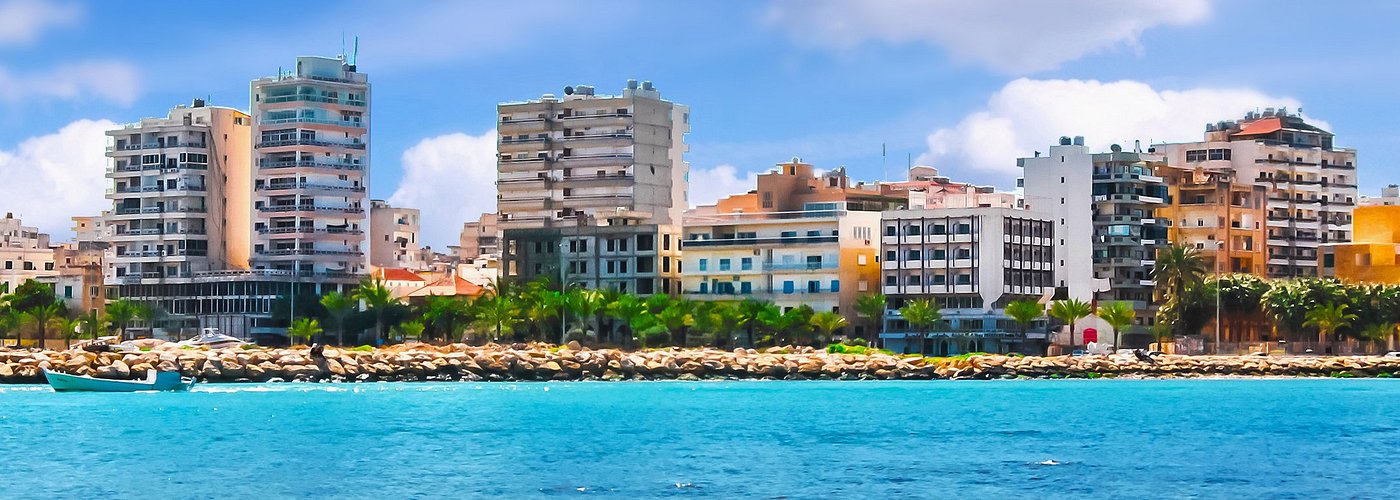
Explore Lebanon
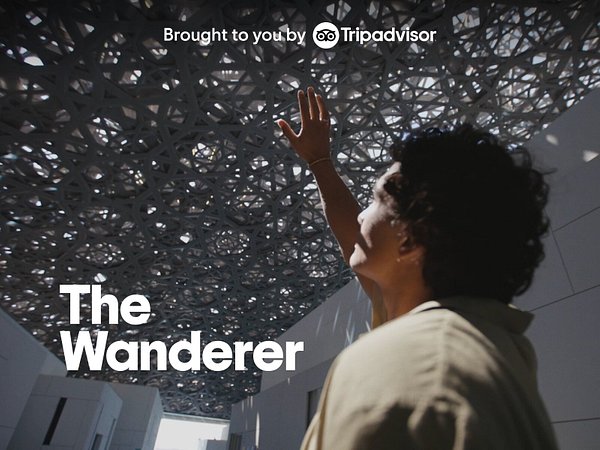
Watch The Wanderer
Essential lebanon.

Trending in the forums
Lebanon Is Great For
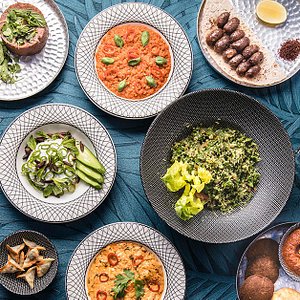
Eat & drink
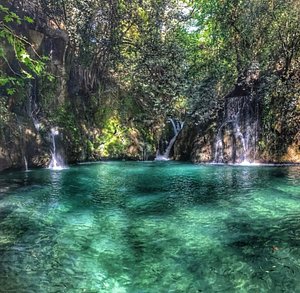
First time Lebanon: top tips to help plan your first trip
Jul 17, 2018 • 6 min read

For a country its small size, Lebanon has a staggering number of diversions to keep visitors entertained. Ancient history enthusiasts will be exhausted by the end of their trip: you can barely turn around without stumbling over a world-class archaeological site. Lovers of nightlife will find a gregarious capital with bacchanalian parties going to all hours. Those seeking serene nature can wander through ancient cedar forests and dramatic mountainscapes.
Here's where to go and what to do if you're headed to Lebanon for the first time.

Beirut is a city of atmosphere rather than world-class sights. Explore the city on foot, and take your time. Whether you encounter a decaying Ottoman-era mansion covered in bougainvillea (and sometimes decades-old bullet holes from the Lebanese Civil War), a couple at the table next to you at happy hour who insist you share their nachos or an elderly taxi driver with a luxurious moustache who sings old Arabic songs a cappella at full volume: this is a city where small moments loom large.
Ancient history fans should visit the National Museum of Beirut or the St George Crypt Museum for artefacts and a window into life in ancient Berytus, the centre of Roman legal thought. Wander the neighbourhood of Hamra , stopping at used book shops and a cafe (try T Marbouta ) for an Arabic coffee, and then check out the American University of Beirut campus for greenery, new feline pals and a diverse mix of architectural styles. Stroll down to the Corniche , Beirut’s great common denominator, to watch the sun set on the Mediterranean ( Bay Rock Cafe has great views over Pigeon Rocks ). For dinner, head to Gemmayzeh for cheap and cheerful Lebanese mezze at Café Em Nazih and obligatory after-dinner drinks at Coop d’Etat , the rooftop bar upstairs.

Bekaa Valley
One of the breadbaskets of ancient Rome, the Bekaa Valley is littered with ancient sites. The world-class ruins of Baalbek , site of the Roman solar cult Heliopolis, are the valley’s star attraction. The soaring Temple of Bacchus , circa 200 AD, is one of the best preserved and most majestic Roman ruins in the world, featuring more than a dozen 19m-high columns and exquisitely preserved reliefs. After a day of tramping over ruins, find refreshment at one of many wineries in the mountains separating the Bekaa from the coast, located on the highway back to Beirut. The proprietors of Chateau Ksara and Domaine des Tourelles disagree over which was the first in Lebanon to mass-produce wine and arak (Lebanon’s national aniseed-flavoured distilled spirit); consider both sides of the debate while watching the setting sun cast pink light over the Anti-Lebanon range.
Some governments have travel advisories in place for this region, and the UK's Foreign and Commonwealth Office warns against all non-essential travel to Baalbek.
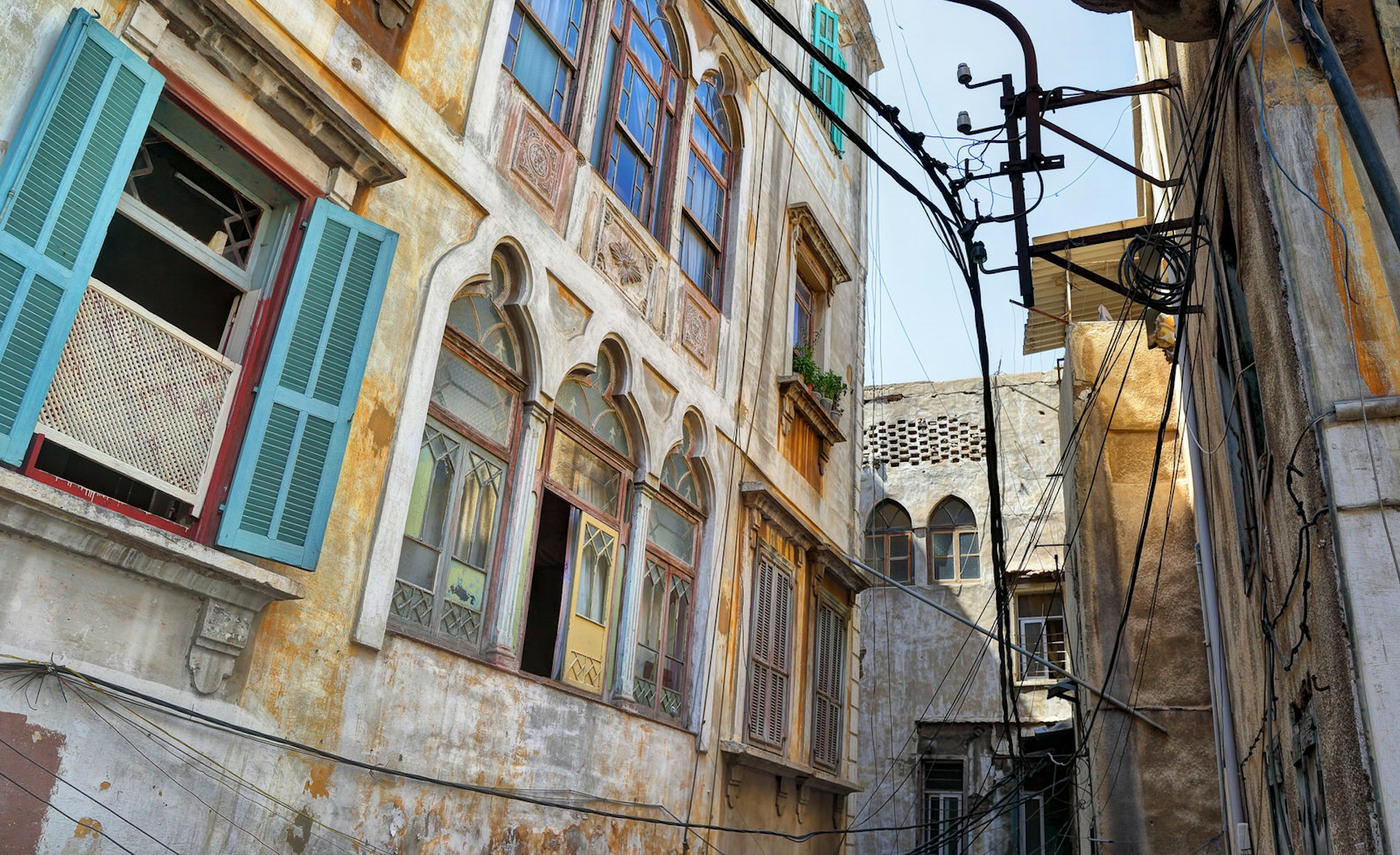
Northern Lebanon
Tripoli , only two hours from Beirut, is the country’s second-most populous city. It’s bursting with fantastic and varied historic and cultural sites, and Tripolitans may be the most welcoming in all of Lebanon. Inconceivably, few visitors make the trip because there is little official tourist infrastructure. Don’t make the same mistake: what Tripoli lacks in malls and museums, it more than makes up for in ambience.
Start your day at the unfinished Oscar Niemeyer International Fairground, a deserted mid-20th century monument to Brutalist architecture. Continue on to the medieval souqs , still bustling centuries later. Ask locals for directions to the hammam and Madrasa Al Nouriyat , some of the best examples of black-and-white marble-striped Mamluk architecture outside of Cairo. Press on to Tripoli’s Crusader-era Citadel of Raymond de Saint-Gilles , or call it a day and enjoy a well-deserved libation in the Christian port quarter of Al Mina , fragrant with frangipani trees.
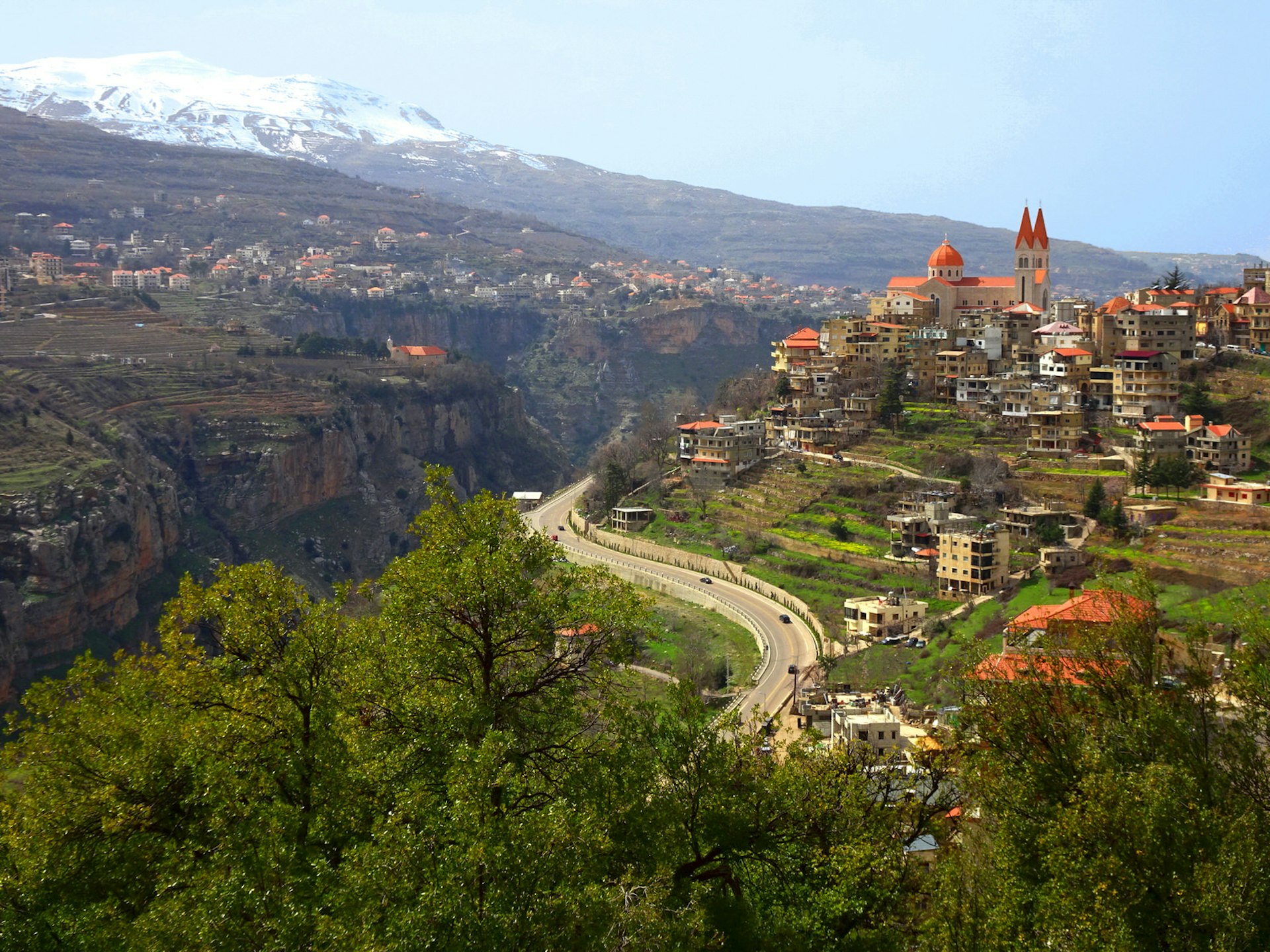
The Qadisha Valley rends a deep gorge from outside Tripoli up to Bcharré , a steepled-dotted town in the shadow of Qornet As Sawda, the highest peak in the Levant. The valley was a refuge for early Christians fleeing persecution, and some of the caves that line the steep walls of the canyon contain mummies dating to the 13th century. Spend the night in Bcharré, then wake up early to hike the steep, forested canyon walls . Don’t miss the nearby Cedars of Lebanon preserve before heading back to Beirut; the thin, high-altitude light filtering through ancient trees imparts a tranquillity you’ll be grateful for once you hit traffic on the coastal highway.
If that all sounds a bit sweaty, head to the Med. Northern Lebanon has some sweet beach towns, where you can pass pleasant hours leaping off rocks and feasting on fish. Chilled-out Batroun is home to the Colonel Brewery , where you can find local craft beer and a sandy beach. Further south, 45 minutes from Beirut, is the ancient port city of Byblos , where the Phoenicians invented the alphabet. Toast their ingenuity with a glass of rosé from the deck at Chez Pepe , where Marlon Brando and Brigitte Bardot used to hang out in the 1960s.
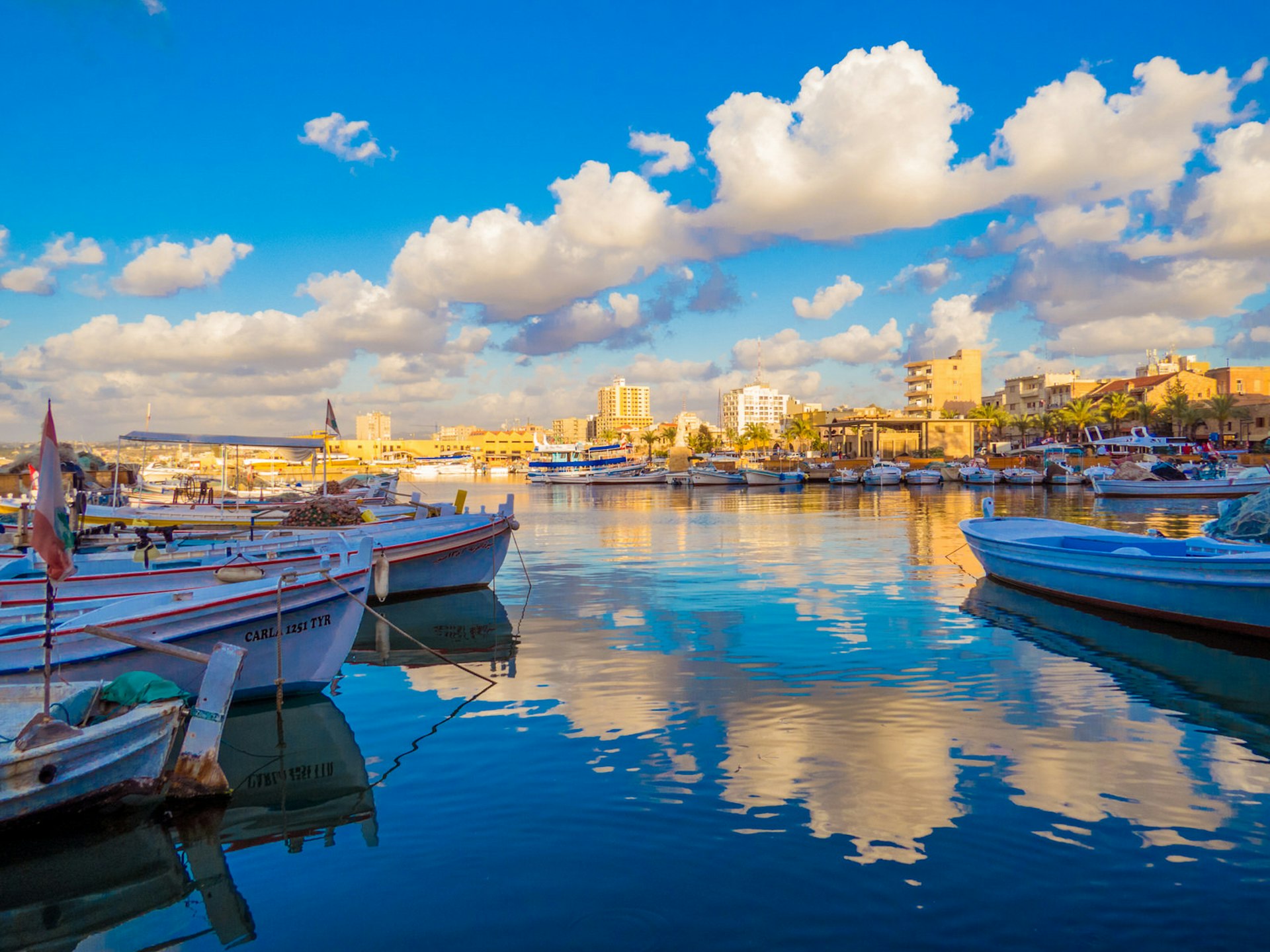
Southern Lebanon
Nowhere is Lebanon’s coastline more enchanting than in the south. Turquoise waters lap golden sand beaches, and sea turtles sometimes can be found surfing gentle waist-high waves. The best beaches in south Lebanon are in Tyre , about two hours south of Beirut. Post up at Cloud 59 , the most fashionable of the seaside beach shacks, which serves up ice-cold Almaza and simple food. Turn left from the scene at Cloud 59 and wander down to the Tyre Coast Nature Preserve (one of just a few in Lebanon), home to beach grasses and scuttling crabs.
This being Lebanon, there are also world-class ruins in Tyre, including the world’s largest and best preserved Roman hippodrome, which once seated 20,000 fans of chariot racing. The hippodrome is in the Al Bass complex , as is a reconstructed monumental archway and a legitimately spooky Roman necropolis (peer into the sarcophagi and you might see a skeleton).
An hour north of Tyre is the jolly Sunni town of Saida . There are some excellent sights here, among them a Crusader castle and the fascinating Musée du Savon , but the laid-back vibes in the medieval souqs and on the seaside corniche are the real draw. Get a falafel at Abou Rami and then decamp across the road for a nargileh (flavoured water pipe) with everyone else in town basking in the cool evening breeze off the sea.

Getting around
Regular buses serve Tripoli, Tyre and Saida along the coastal highway (catch buses to Tripoli from Beirut's Dawra Transport Hub and to southern cities from Cola Transport Hub ). But outside Lebanon's cities, the best way to see the country is by hiring a car for a road trip , easy to do at Beirut's airport.
Is Lebanon safe?
Western governments advise their citizens to avoid the borders with Israel and Syria and stick to Lebanon's interior and coast. Check your government's travel advice before you go. Street crime is extremely rare: something you drop on the street is almost sure to be there when you come back for it, if someone hasn’t already chased you down the street to return it. Residents in rural areas can be a bit more wary of foreigners than their urban counterparts, but everyone is helpful and kind as long as you are respectful of local norms and dress appropriately (don't show thighs, upper arms or midriffs).
Explore related stories
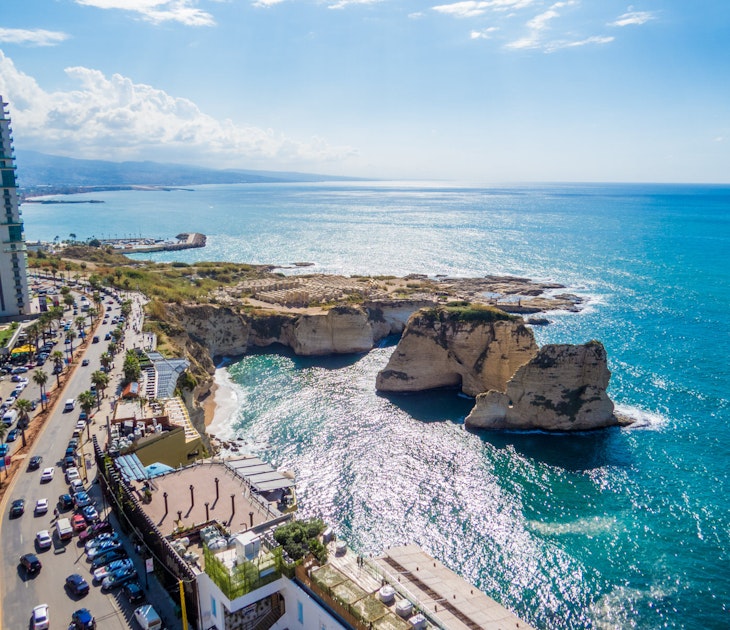
Sep 17, 2010 • 4 min read
With just a week to spare in Lebanon, that tightly packed powerhouse of Middle Eastern history perched beside the Mediterranean, you can – with the help…
![tourism of lebanon Photo/File #: 12MP ..Country: Great Britain..Site: Hurst Castle..Caption: 12MP aerial..Image Date: [November 2021?]..Photographer: ExploringWithin MUST CREDIT..Provenance: Watch 2022](https://lp-cms-production.imgix.net/2022-03/GBR%20Hurst%20Castle%20MUST%20CREDIT.JPG?auto=format&w=140&h=140&fit=crop&q=75)
Mar 2, 2022 • 4 min read
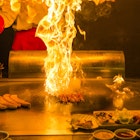
Nov 11, 2021 • 5 min read
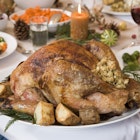
Nov 30, 2020 • 5 min read
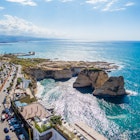
Aug 12, 2020 • 5 min read
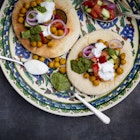
Jul 7, 2020 • 5 min read
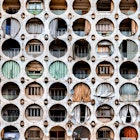
Feb 7, 2020 • 1 min read
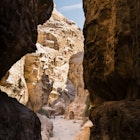
Nov 6, 2019 • 5 min read
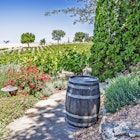
Jul 10, 2019 • 2 min read
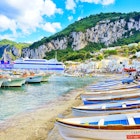
Jun 27, 2019 • 5 min read

Tourism in Lebanon
Disclaimer: Some posts on Tourism Teacher may contain affiliate links. If you appreciate this content, you can show your support by making a purchase through these links or by buying me a coffee . Thank you for your support!
Tourism in Lebanon is big business, but what? And what are the most important things that we should know about tourism here? Read on to find out!
Geographical overview of Lebanon
The tourism industry in lebanon, 10 key statistics about tourism in lebanon , most popular tourist attractions in lebanon , most popular types of tourism in lebanon , economic impacts of tourism in lebanon, social impacts of tourism in lebanon, environmental impacts of tourism in lebanon, crime and safety in lebanon, faqs about tourism in lebanon , to conclude- tourism in lebanon, tourism in lebanon.
Situated at the nexus of the Mediterranean and the Middle East, Lebanon presents a unique blend of historical depth and diverse landscapes. From ancient ruins to dynamic urban centres and coastal beauty, this country offers an array of touristic attractions. This article aims to provide a concise, yet comprehensive, exploration of Lebanese tourism for both the novice and seasoned traveller.

Lebanon is a small country located in the eastern Mediterranean region of the Middle East. It is bordered by Syria to the north and east, Israel to the south, and the Mediterranean Sea to the west. Lebanon has a total area of approximately 10,452 square kilometres (4,036 square miles).
Lebanon’s geography is characterised by a rugged terrain, with mountains and hills dominating the landscape. The country’s highest peak is Qornet es-Sawda, which stands at 3,088 metres (10,131 feet) above sea level. The Lebanon Mountains run parallel to the coast, and the Beqaa Valley lies between them and the Anti-Lebanon Mountains to the east.
The coastal region of Lebanon is narrow, averaging only a few kilometres in width, and is dominated by rocky cliffs and sandy beaches. The country’s two major ports, Beirut and Tripoli, are located on the coast.
Lebanon’s climate is Mediterranean, with hot, dry summers and mild, wet winters. The country experiences occasional earthquakes, and its mountainous terrain makes it prone to landslides and other natural disasters.
The major rivers in Lebanon are the Litani River, which runs through the Beqaa Valley, and the Nahr al-Kalb, which flows into the Mediterranean Sea north of Beirut. The country also has a number of smaller rivers and streams, as well as several lakes, including Lake Qaraoun in the Beqaa Valley.
Overall, Lebanon’s geography has played a significant role in its history and culture, shaping the country’s political, economic, and social development over the centuries.
Lebanon’s tourism industry is an important contributor to the country’s economy, with a rich history and diverse culture that attracts visitors from around the world. Despite occasional political instability and security concerns, tourism remains a major sector in the country, with visitors drawn to Lebanon’s natural beauty, historical sites, and vibrant nightlife.
One of the main attractions for tourists in Lebanon is its capital city, Beirut, which is known for its mix of modern and traditional architecture, vibrant cultural scene, and world-class restaurants and nightlife. Other popular destinations include the ancient city of Byblos, the Jeita Grotto caves, and the ski resorts in the Lebanon Mountains.
Lebanon is also famous for its Mediterranean cuisine, which combines elements of Arabic, French, and other Mediterranean cultures. Visitors can sample a variety of dishes in the country’s many restaurants and cafes, as well as at local markets and street food vendors.
The country has a rich history dating back to ancient times, with numerous historical sites and landmarks that attract tourists. These include the ancient Roman ruins of Baalbek, the Phoenician city of Tyre, and the Crusader castles of Tripoli and Byblos.
In recent years, Lebanon has also become known for its wine industry, with many vineyards and wineries located throughout the country. Wine tasting tours have become a popular activity for tourists, with many local tour operators offering guided tours of the country’s vineyards and wineries.
Lebanon’s tourism industry offers a unique and diverse experience for visitors, with something to suit every taste and interest. Despite occasional challenges, the industry continues to grow and attract visitors from around the world.

Now that we know a little bit more about tourism in Lebanon, lets take a look at some of the key statistics about the tourism industry here:
- In 2019, Lebanon received approximately 1.9 million international tourists, an increase of 6.3% compared to the previous year.
- The tourism industry accounted for around 7.5% of Lebanon’s GDP in 2019.
- The average length of stay for international tourists in Lebanon is around 6.4 nights.
- The top five source markets for international tourists to Lebanon are Syria, Jordan, Saudi Arabia, Egypt, and Iraq.
- The majority of international tourists to Lebanon come for leisure purposes, with business travel and visiting friends and relatives also popular.
- In 2019, the average daily expenditure by international tourists in Lebanon was around $160 USD.
- The hospitality industry is a significant employer in Lebanon, with around 100,000 people employed in the sector.
- Beirut is the most popular destination for international tourists to Lebanon, accounting for around 62% of all tourist arrivals.
- In 2019, the number of domestic tourists in Lebanon was estimated to be around 3.3 million.
Lebanon has a wide range of tourist attractions, from historical sites to natural wonders to modern urban centres. Here are some of the most popular tourist attractions in the country:
- Beirut: Lebanon’s capital city is a popular destination for tourists, known for its mix of traditional and modern architecture, world-class restaurants, and vibrant nightlife.
- Jeita Grotto: Located in the Nahr al-Kalb valley, the Jeita Grotto is a series of limestone caves filled with underground lakes and stunning rock formations.
- Byblos: This ancient city on the Mediterranean coast is one of the oldest continuously inhabited cities in the world, with a rich history dating back over 7,000 years.
- Baalbek: The ruins of the ancient city of Baalbek, located in the Beqaa Valley, are home to some of the most impressive Roman ruins in the world, including the Temple of Jupiter and the Temple of Bacchus.
- The Lebanon Mountains: The mountains that run parallel to the coast offer stunning views, hiking trails, and ski resorts during the winter months.
- Tyre: Another ancient city on the Mediterranean coast, Tyre is home to a number of historical landmarks, including the Roman Hippodrome and the Al Mina archaeological site.
- Harissa: This mountaintop town overlooking the Mediterranean is home to the iconic Our Lady of Lebanon statue, a popular pilgrimage site and tourist attraction.
- Sidon: Another ancient coastal city, Sidon is home to the Sea Castle and the Khan al-Franj marketplace, as well as a number of historic mosques and churches.
- The Beqaa Valley: This fertile valley is home to many of Lebanon’s vineyards and wineries, as well as the ruins of several ancient cities.
- Tripoli: Lebanon’s second-largest city is known for its bustling markets, historic landmarks, and beautiful coastline.
These are just a few of the many attractions that Lebanon has to offer. With its rich history, stunning natural beauty, and vibrant culture, Lebanon is a unique and fascinating destination for travellers from around the world.
Lebanon offers a diverse range of tourism experiences, catering to a variety of interests and preferences. Here are some of the most popular types of tourism in Lebanon:
- Cultural tourism: Lebanon’s rich history and cultural heritage make it a popular destination for cultural tourism. Visitors can explore ancient ruins, historical landmarks, and museums to learn about the country’s history and traditions.
- Religious tourism: Lebanon is home to a number of important religious sites, including the Harissa statue of the Virgin Mary, the Jeita Grotto (a site of Christian pilgrimage), and the Sayyida Khawla Mosque.
- Gastronomic tourism: Lebanon is known for its delicious cuisine, which combines elements of Arabic, French, and Mediterranean cooking. Visitors can enjoy a variety of dishes in restaurants and cafes, as well as at local markets and street food vendors.
- Adventure tourism: The Lebanon Mountains offer opportunities for hiking, skiing, and other outdoor activities, while the Jeita Grotto and other natural wonders are popular destinations for adventure tourism.
- Health and wellness tourism: Lebanon has a number of thermal baths and natural springs that are believed to have therapeutic properties, as well as many spas and wellness centres that offer a range of treatments and services.
- Beach tourism: With its beautiful coastline and warm Mediterranean waters, Lebanon is a popular destination for beach tourism. Some of the most popular beaches include Ramlet al-Baida, Tyre Beach, and Batroun Beach.
- Shopping tourism: Lebanon’s bustling markets and modern shopping malls are popular destinations for tourists looking to shop for souvenirs, gifts, and luxury goods.
These are just a few examples of the many types of tourism that Lebanon has to offer. With its diverse range of attractions and experiences, Lebanon is a unique and exciting destination for travellers from around the world.

The tourism industry is an important contributor to the Lebanese economy, generating revenue and providing employment opportunities. Here are some of the economic impacts of tourism in Lebanon:
- Revenue generation: Tourism is a major source of foreign exchange earnings for Lebanon, with tourists spending money on transportation, accommodation, food and beverages, shopping, and other services. In 2019, the tourism industry contributed approximately 7.5% of Lebanon’s GDP.
- Employment opportunities: The tourism industry is a significant employer in Lebanon, with an estimated 100,000 people employed in the sector. Jobs in the tourism industry range from hotel and restaurant staff to tour guides and transportation services.
- Small business development: Tourism can provide opportunities for small businesses to develop and grow, such as souvenir shops, handicrafts, and local food and beverage vendors. This can help to diversify the economy and support entrepreneurship.
- Infrastructure development: To support the tourism industry, infrastructure investments are often made to improve transportation networks, accommodations, and other tourism-related facilities. This can also have spillover effects on other industries, such as construction and transportation.
- Foreign investment: A thriving tourism industry can attract foreign investment, particularly in the hospitality and real estate sectors.
- Seasonal fluctuations: The tourism industry in Lebanon is subject to seasonal fluctuations, with the majority of tourists arriving during the summer months. This can create challenges for businesses in the industry to manage their cash flow and maintain employment levels throughout the year.
- Vulnerability to external shocks: The tourism industry is vulnerable to external shocks, such as political instability, natural disasters, and health crises, as seen with the impact of COVID-19 on the industry in Lebanon.
The tourism industry plays an important role in the Lebanese economy, generating revenue, providing employment opportunities, and contributing to infrastructure and small business development. However, the industry is subject to external shocks and seasonal fluctuations, which can create challenges for businesses and policymakers to manage.
Tourism can have both positive and negative social impacts on a destination, including in Lebanon. Here are some of the social impacts of tourism in Lebanon:
- Cultural exchange: Tourism in Lebanon can provide opportunities for cultural exchange between visitors and locals, helping to foster mutual understanding and respect. Visitors can learn about Lebanese culture and traditions, while locals can learn about the cultures and customs of visitors.
- Employment opportunities: Tourism in Lebanon can provide employment opportunities for local residents, particularly in service-related industries such as hospitality and transportation. This can help to reduce unemployment and poverty, and provide a source of income for families.
- Preservation of heritage: The tourism industry can provide incentives for the preservation of cultural and natural heritage sites, as they are important attractions for visitors. This can help to ensure the protection and preservation of these sites for future generations.
- Infrastructure development: To support the tourism industry, infrastructure investments are often made to improve transportation networks, accommodations, and other tourism-related facilities. This can benefit the local community by improving access to essential services and amenities.
- Social and cultural changes: Tourism can bring social and cultural changes to a destination, as visitors may introduce new ideas, customs, and behaviours. This can have both positive and negative effects, and may require careful management to ensure that the local culture and way of life is respected and preserved.
- Displacement and overcrowding: Tourism in Lebanon can lead to displacement of local residents and overcrowding of tourist sites, particularly during peak season. This can create tensions between locals and visitors, and may require measures to manage tourism flows and mitigate negative impacts on the local community.
- Inequality and exploitation: Tourism can exacerbate social and economic inequality, particularly if it is concentrated in a few areas or controlled by a small group of people. It can also lead to exploitation of vulnerable populations, such as child labour or human trafficking, if not properly regulated.
Tourism in Lebanon can have significant social impacts on a destination, both positive and negative. It is important for policymakers and industry stakeholders to manage these impacts to ensure that tourism benefits the local community and preserves the cultural and natural heritage of Lebanon.

Tourism in Lebanon can have significant environmental impacts, particularly if it is not properly managed. Here are some of the environmental impacts of tourism in Lebanon:
- Carbon emissions: Tourism can contribute to greenhouse gas emissions, particularly from transportation-related activities. This can contribute to climate change, which can have far-reaching impacts on the environment, including rising sea levels, more frequent and severe weather events, and changes to ecosystems.
- Water consumption: Tourism in Lebanon can place significant demands on water resources, particularly in areas with limited water availability. This can lead to water shortages and environmental degradation, particularly if water is diverted from natural sources.
- Waste generation: Tourism can generate significant amounts of waste, particularly from packaging, food and beverage consumption, and other tourism-related activities. This can contribute to environmental pollution and degradation, particularly if waste management infrastructure is inadequate.
- Overuse of natural resources: Tourism in Lebanon can lead to overuse of natural resources, particularly in areas with fragile ecosystems or limited resources. This can contribute to environmental degradation and habitat loss, particularly if tourism activities are not properly regulated.
- Biodiversity loss: Tourism in Lebanon can contribute to biodiversity loss, particularly if tourism activities are located in sensitive ecosystems or involve activities that disrupt natural habitats. This can have far-reaching impacts on the environment, including loss of species and habitat degradation.
- Land use changes: Tourism can lead to changes in land use, particularly if new infrastructure or development is needed to support tourism activities. This can contribute to environmental degradation and loss of natural habitats, particularly if development is not properly planned and managed.
Tourism can have significant environmental impacts on a destination, particularly if it is not properly managed. It is important for policymakers and industry stakeholders to manage these impacts to ensure that tourism is sustainable and does not harm the environment. This can involve measures such as promoting sustainable tourism practices, developing eco-friendly infrastructure, and regulating tourism activities to minimise negative impacts on the environment.
Like any other destination, Lebanon has its own unique safety and security concerns that travellers should be aware of. While Lebanon has improved its security situation in recent years, there are still some risks that travellers should consider when planning their trip.
The State Department advises travellers to exercise increased caution when travelling to Lebanon due to the threat of terrorism, armed conflict, and kidnapping. In addition, the State Department warns that crime and theft can occur, particularly in crowded areas or tourist sites.
Travellers should take precautions to protect themselves and their belongings, such as avoiding carrying large amounts of cash, keeping valuables out of sight, and staying aware of their surroundings. Travellers should also be aware of potential terrorist threats and should avoid areas where protests or demonstrations are taking place.
In addition, travellers should be aware of the risks of travelling to certain areas in Lebanon, particularly near the Syrian border, where there is ongoing conflict. The State Department advises against all travel to the Syrian-Lebanese border region, as well as the southern suburbs of Beirut.
Travellers should also be aware of the risks of travelling by road in Lebanon, particularly outside of major cities. Road conditions can be poor and driving can be hazardous, particularly at night. Travellers should also be aware of the risks of carjacking and other criminal activity on the roads.
Overall, while Lebanon has made progress in improving its security situation in recent years, travellers should still exercise caution and take steps to protect themselves and their belongings while travelling in the country. It is important to stay informed of the latest security developments and to follow local laws and customs.

Now that we know a bit more about tourism in Lebanon, lets answer some of the most common questions on this topic:
Is Lebanon safe for tourists to visit?
Lebanon is generally a safe destination for tourists, but visitors should exercise caution and be aware of their surroundings. It is advisable to avoid areas that are known to be hotspots for crime or political unrest.
What is the best time of year to visit Lebanon?
The best time to visit Lebanon is during the spring (March to May) or fall (September to November), when the weather is mild and comfortable for outdoor activities.
What are the main tourist attractions in Lebanon?
Some of the top tourist attractions in Lebanon include the ancient ruins of Baalbek, the Jeita Grotto, the National Museum of Beirut, and the picturesque city of Byblos.
What is the currency used in Lebanon?
The currency used in Lebanon is the Lebanese pound (LBP), but many businesses also accept US dollars and Euros.
Do I need a visa to visit Lebanon?
Citizens of many countries, including the United States and European Union member states, do not need a visa to enter Lebanon for tourist purposes. Check with the Lebanese embassy in your country to confirm the entry requirements.
What is the official language of Lebanon?
The official languages of Lebanon are Arabic and French, but English is widely spoken in tourist areas.
What is the local cuisine in Lebanon?
Lebanese cuisine is known for its fresh ingredients, bold flavours, and mezze-style dining. Some popular dishes include hummus, tabbouleh, kibbeh, and shawarma.
Can I drink alcohol in Lebanon?
Yes, alcohol is legal and widely available in Lebanon. The country has a thriving wine industry and produces some excellent wines.
What is the dress code in Lebanon?
Lebanon is a relatively liberal country, but it is still advisable to dress modestly, particularly when visiting religious sites. In general, shorts and tank tops are not considered appropriate attire.
What is the transportation system like in Lebanon?
Lebanon has a relatively good transportation system, with buses and taxis serving most areas. Rental cars are also available, but driving in Lebanon can be challenging due to the country’s narrow and winding roads.
Lebanon stands as a distinguished nexus of historical profundity and geographical diversity within the Mediterranean region. As the tourism sector progresses, it’s imperative to strike a balance between sustainable development and heritage conservation. Both visitors and industry professionals must collaborate to ensure the preservation of Lebanon’s intrinsic values and attractions.
If you enjoyed this article about tourism in Lebanon, I am sure you will like these too:
- 30 fascinating facts about Lebanon
- 25 Exciting Facts About Paraguay
- Tourism in Djibouti: A Hidden Jewel in Africa?
- 25 Surprising Facts About Iraq!
- 24 Surprising Facts About Israel
Liked this article? Click to share!
- 3 Other destinations
- 4.1 Geography
- 4.2 History
- 4.4 Climate
- 4.5 Time zone
- 4.6 Holidays
- 4.7 Tourism information
- 5.1.1 Visa policy
- 5.2 By plane
- 5.4 By taxi
- 5.5 By ship
- 6.1 By taxi
- 6.3 By train
- 6.5 By hitchhiking
- 9.1 Nightlife
- 9.4 Wine tasting
- 14.1 Secondary schools
- 14.2 Universities
- 15.1 Volunteer
- 17 Stay safe
- 18 Stay healthy
- 19.1 Social etiquette
- 19.2.1 Politics
Lebanon ( Arabic : لبنان , French : Liban ) is a country in the Middle East , on the Mediterranean Sea. Rich in diversity and history, Lebanon has hosted the Roman Empire, the Crusades, the Ottoman Empire, and was, for a period of time, controlled by France . The majority of Lebanese are Arabs, as are most of the Palestinians and Syrians living there, but there are also small communities of Assyrians, Armenians and Kurds. Lebanese cuisine is among the most famous of all Middle Eastern cuisines .
Lebanon has been in a state of flux since the end of the Lebanese Civil War in 1990s, and it continues to face numerous economic difficulties. That aside, the country has plenty to offer to the traveller: vineyards, nightclubs, ski resorts, and numerous historical and cultural attractions.
Regions [ edit ]
Lebanon can be divided into five regions:

Cities [ edit ]
Many cities in Lebanon have names in English which are significantly different from their official Arabic or French names; the Romanised versions of the Arabic names for some cities are given in parentheses below. Note that signs in Lebanon are in Arabic or French only, and so spellings in Latin script can differ from how a place can be spelled in English.
- 33.886944 35.513056 1 Beirut ( بيروت / Beyrouth ) — the cosmopolitan capital city, and largest city in the country, with a mash-up of all the country’s religious sects, as well as historic Franco-Mediterranean architecture, serving as a major luxury shopping centre, a free press, and possessing the liveliest nightlife scene in the Arab world.
- 34.436667 35.834444 2 Tripoli ( طرابلس / Tripoli or Trípol ) — the second-largest city in the country and the ‘capital of the North’, this port city was heavily built by the Islamic Mamluk dynasty, holding the second highest amount of Mamluk architecture after Cairo, giving the city a ‘medieval Islamic feel’. It is also home to the major Crusader site of “Citadel of Raymond de Saint-Gilles”. The city was deeply scarred and almost completely destroyed by the Lebanese Civil War, and as such the city has never really recovered; it is nowadays extremely impoverished, with architecture that is severely crumbling and destroyed from the war. However, it is also unspoilt by mass-tourism.
- 33.560556 35.375833 3 Sidon ( صيدا / Sidon or Sayette ) (Romanised as Saida in English) — The third-largest city in the country. The city is known for its beautiful view of the Mediterranean, as well as being home to a lot of historic Crusader and Ottoman architecture, including the “Khan al-Franj” (“Caravanserai of the French”) caravanserai (Ottoman guest house). It is also home to plenty of other medieval remains, as well as a fascinating museum about the local soap industry here and the art of Levantine soapmaking.
- 33.266667 35.2 4 Tyre ( صور / Tyr )(Romanised as Sour in English) - a medium-sized, ancient city, famed for its strong Phoenician heritage, with many Phoenician sites and a rich history of being a Phoenician cultural centre. The city is also famed for its beautiful coastline, with wide expanses of sandy beaches that saw a mass-scale construction boom of luxury resorts during the “Golden Age” years of the 1960s and early-1970s. It is home to many ancient Roman and Phoenician sites, including its Roman Hippodrome which is a UNESCO World Heritage Site
- 34.116667 35.65 5 Byblos ( جبيل/Byblos or Gibelet ) (Romanised as Joubeil in English) — one of the oldest continually-inhabited cities in the world, believed to have been first occupied between 8800 and 7000 BC , this historic city is home to dozens of historic Phoenician, Roman, Crusader and Ottoman remains, Crusader castles and culturally rich museums. It is also home to a beautiful harbour and a souk.
- 33.969722 35.615556 6 Jounieh — known for its seaside resorts and nightclubs
- 33.54 35.583611 7 Jezzine — main summer resort and tourist destination of South Lebanon
- 33.843889 35.907222 8 Zahle — capital of Bekaa Valley
Other destinations [ edit ]
- 33.953889 35.643333 1 Jeita — known for its grotto with spectacular caves
- Kadisha Valley — visit the home of the (now deceased) Lebanese poet Khalil Gibran
- 33.7 35.566667 2 Deir el Qamar — traditional village in Chouf district.
- 34.006111 36.208611 3 Baalbek — a Phoenician and Roman archaeological site
Understand [ edit ]
Geography [ edit ].
The Republic of Lebanon is marked by two mountain ridges that run parallel to the Mediterranean coastline. The Mount Lebanon ridge is close to the sea, and is cut across from north to south by transverse valleys and canyons. The landscape is mostly mountainous and sometimes very rugged, with steep cliffs and gradients. Streams are frequent and provide ample resources for cultivation and natural vegetation.
The Anti-Lebanon runs parallel east of the Mount Lebanon ridge, and forms part of the border with Syria.
The Bekaa valley, with ample flatlands traversed by the Orontes (Nahr al-Aasi) and Litani rivers, runs between the two ridges.
History [ edit ]
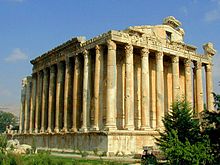
Lebanon has a long and complex history since the Neolithic age. The most important Phoenicians cities ( Byblos and Tyre among others) were founded here and have been thriving since then. The area was under the sphere of influence of Egyptian, Mesopotomian, and Persian ancient civilizations. Lebanon has a rich heritage of Hellenistic and Roman monuments, including among others the temples of Baalbek and Tyre. After the Byzantine and Umayyad rule (which left behind the ruins of Anjar), the area of today's Lebanon was conquered by the Crusaders and the Mamluks, with many significant monuments (fortresses and places of worship) scattered over the country, and notably in Tripoli .
Four centuries of Ottoman rule (1516–1918) with significant degrees of autonomous rule were ended with the creation of the French Mandate after World War I. Lebanon became independent in 1943. For a period of time, Lebanon was referred to as the "Switzerland of the Middle East". Under a free-market economy, Lebanon enjoyed three decades of prosperity and many moved to Lebanon in search of a better life.
Three decades of growth were crippled by a long civil war (1975–1990), which ended with a power-sharing agreement and a complicated process of reconciliation and reconstruction. The civil war forced many Lebanese people to move abroad.
Political tensions and regional conflicts with Hezbollah (such as the July 2006 war and the ongoing civil war in Syria) have affected the country, which remains nevertheless resilient.
People [ edit ]
The people of Lebanon comprise a wide variety of ethnic groups, religions and denominations, with the two main groups split between Christian (Maronite, Greek Orthodox, Greek-Catholic Melkites, Armenians, Protestant, Syriac Christians) and Muslim (Shi'a, Sunni, Alawites), and Druzes. The Maronites are a branch of Eastern Catholicism; they celebrate their liturgy according to the Eastern (specifically West Syriac) Rite like Oriental Orthodox Christians, but recognise the Pope as their leader like Roman Catholics. There are more than 250,000 Palestinian refugees in the country, who fled their homeland in 1948. There are also around two million Syrian refugees and displaced persons due to the ongoing conflict in Syria.
One of the rare things that most Lebanese religious and political leaders will agree on is to avoid a new general census, for fear that it could trigger a new round of denominational conflict. The last official census was performed in 1932, when Christians were once a majority in Lebanon. Estimates today are academic and unofficial, due to this sensitivity. A power-sharing agreement among the Sunni Muslims, Shia Muslims and Maronite Christians ensures that important posts in the government are divided among the three communities; under that agreement, the position of prime minister is reserved for Sunni Muslims, the position of speaker of parliament is reserved for Shia Muslims, and the presidency is reserved for Maronite Christians.
The population increases in the summer months (June to September), due to the large influx of returning members of the Lebanese diaspora and Lebanese citizens working abroad.
People are generally very easy-going and welcoming. Many people are multilingual and highly educated, particularly in Beirut and its suburban areas. Attitudes and behaviours tend to be more conservative in the Bekaa Valley and rural areas of the north and south.
Climate [ edit ]
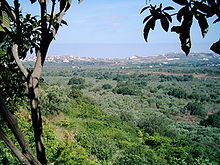
Lebanon has a temperate Mediterranean climate, with hot, humid summers and cold, wet winters.
Summer is usually the most popular time for people to visit, as there is virtually no rain between June and August, and the temperatures ranges between about 20-30°C (68-86°F). However, there can be occasional heatwaves with the temperature rising, and generally, it can be very, very humid along the coast line during the summer months. It is somewhat dryer and somewhat cooler in the mountains, and many Lebanese tend to visit and vacation in the mountains during the summer if they wish to escape the heat and humidity of the coastline.
Autumn and spring are also good times to visit, with a bit more rain, but without the tourist crowds attracted in summer, and also with considerable less humidity.
Snow falls for a large part of winter in the mountain regions that form a large portion of the country, and there are numerous ski resorts. However, the coast is still relatively mild, with maximums rarely falling below 13°C (55°F), although it can fall much lower than that and has on many occasions.
Time zone [ edit ]
Lebanon is two hours ahead of Greenwich Mean Time (GMT), and observes daylight saving from the end of March to the end of October.
Holidays [ edit ]
Lebanon has a number of Christian and Islamic holidays. Holidays that are observed by the Lebanese Government are indicated in bold letters .
- New Year's Day (January 1)
- Epiphany & Armenian Christmas (January 6)
- St. Maroun's Day (February 9)
- Prophet Muhammad's Birthday (variable according to the Islamic calendar)
- Feast of the Annunciation (March 25)
- Good Friday (Catholic) (variable according to the lunar calendar)
- Easter Sunday (Catholic) (variable according to the lunar calendar)
- Good Friday (Orthodox) (variable according to the lunar calendar)
- Easter Sunday (Orthodox) (variable according to the lunar calendar)
- Labor Day (May 1)
- Liberation Day (May 25) (anniversary of the liberation of the South from Israeli occupation in 2000)
- St. Elias' Day (July 20)
- Assumption of Mary Day (August 15)
- Ramadan (variable) (variable according to the Islamic calendar)
- Eid al-Fitr (variable according to the Islamic calendar)
- Eid al-Adha (variable according to the Islamic calendar)
- Ashura (variable according to the Islamic calendar)
- Independence Day (November 22)
- Eid il-Burbara or Saint Barbara's Day (December 4)
- Christmas Day (December 25)
- New Year's Eve (December 31)
Tourism information [ edit ]
- Ministry of Tourism [dead link] website
Get in [ edit ]
Visas [ edit ].

Visa policy [ edit ]
Citizens of Turkey get a free 3-month visa that can only be renewed before one month passes since their entry.

Citizens of Egypt, Sudan, Tunisia, Morocco, Algeria, Libya, Yemen, Somalia, Djibouti, Mauritania, the Comoros , Nigeria, Ghana, and Cote d'Ivoire get a free one-month tourist visa provided they have a return plane ticket, a hotel reservation/place of residence and US $2,000 (the cash conditions can be waived if you get the visa from the Lebanese embassy beforehand).
Citizens of India, Indonesia, Pakistan, Philippines, South Africa, Taiwan, Thailand, and several other "labor exporting" countries not otherwise listed in this section cannot get a visa directly at the airport or at a Lebanese embassy. Instead, a visa needs to be arranged by a Lebanese sponsor in Lebanon through the General Security head office in Beirut. This is a convoluted process that can take months, so start early. Visas issued this way are valid for 1 month but can be extended until 3 months at General Security once in Lebanon.
Three-month visas are free for nationals from Gulf Cooperation Council (GCC) countries and Jordan . Other nationals can obtain a 15-day visa or a three-month visa). These visas are single-entry; nationals of many countries can also obtain multiple-entry visas. 48-hour free-of-charge transit visas (valid for three calendar days) are available if you enter by land and leave via the airport or vice-versa.
Visas can be obtained at Lebanese embassies and consulates in other countries, or upon arrival at Beirut airport and other points of entry for some nationalities. The cost for a visa at the airport is US$17 (2021), it is for one entry and valid for 3 months.
A free, single-entry, one-month valid visa, renewable till 3 months, is granted to the citizens of these countries who are coming for tourism: Andorra , Antigua and Barbuda , Argentina , Armenia , Australia , Austria , Azerbaijan , The Bahamas , Barbados , Belarus , Belgium , Belize , Bhutan , Brazil , Bulgaria , Canada , Chile , China (People's Republic) , Czech Republic , Costa Rica , Croatia , Cyprus , Denmark , Dominican Republic , Estonia , Finland , France , Georgia , Germany , Greece , Hong Kong (SAR) , Hungary , Iceland , Iran , Ireland , Italy , Japan , Kazakhstan , Kyrgyzstan , Latvia , Lithuania , Liechtenstein , Luxembourg , Macau (SAR) , Malaysia , Malta , Mexico , Moldova , Monaco , Montenegro , North Macedonia , Netherlands , New Zealand , Norway , Palau , Panama , Peru , Poland , Portugal , Romania , Russia , Saint Kitts and Nevis , Samoa , San Marino , Serbia , Singapore , Slovakia , Slovenia , South Korea , Spain , Sweden , Switzerland , Tajikistan , Turkey (exclusively at the airport), Turkmenistan , the United Kingdom , the United States , Ukraine , Uzbekistan and Venezuela .
For more information, visit the General Security page .
By plane [ edit ]
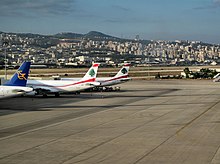
Beirut International Airport (BEY), is 5 km (3 mi) south of the city centre). Middle East Airlines [1] [dead link] has daily flights from Abidjan , Abu Dhabi , Accra , Amman , Athens , Cairo , Cologne , Copenhagen , Dammam , Doha , Dubai , Frankfurt , Geneva , Istanbul IST, Jeddah , Kano , Kuwait , Lagos , Larnaca , London -Heathrow, Milan -Malpensa, Nice , Paris -Charles de Gaulle, Riyadh and Rome -Fiumicino, Warsaw -Okęcie.
In addition the airport is served by the following foreign airlines:
For flights from the United Kingdom try Turkish Airlines [8] , Cyprus Airways [9] or Czech Airlines [10] . These three airlines are often cheaper even than MEA direct from Heathrow. Czech airlines are consistently the cheapest bet from Manchester .
By bus [ edit ]
Buses leave Damascus every hour. The trip is normally 4–5 hours, depending on traffic at the border. When leaving Syria, you must pay an exit fee and must acquire a Lebanese visa on the other side of the border, payable in Lebanese pounds only. Money changers can exchange currency.
By taxi [ edit ]
Taxis leave Damascus for Lebanon.
By ship [ edit ]
Reaching Lebanon by ferry is quite a challenge, the only regular passenger ferry is a twice-weekly service from Tasucu , just outside Mersin , Turkey to the northern city of Tripoli by the Lebanese company MedStar . Apart from that single passenger ferry, only way of reaching Lebanon by sea is by cruise ship or — for the more adventurous traveller — freighter travel .
Get around [ edit ]

Due to the relatively small size of the country, the best way to get around the country quickly is by car.
A trip from Tyre to Beirut will easily take you 1½ hours, depending on traffic and security conditions. This is not to say that it's entirely safe — Lebanese roads are not in perfect condition and drivers aren't known for being very cautious. Still, travelling by car is your best bet.
The majority of travellers use service taxis to get from place to place. "Service" taxis often operate like buses on set routes between towns and cities, though they can be hired to visit other places with some negotiation. Depending on the type of vehicle, each taxi carries between 4 (inside metropolitan areas) to 6 (longer distances) passengers, who share the fare between them. The fare increases depending on distance to be travelled, traffic on that specific road and of course, like everything in Lebanon, persuasion/negotiation skills. A private taxi ride, without having to share with other passengers is similar to a "service" taxi, in that the same pre-negotiation is required to determine the fare. Never get in a taxi or "service" without agreeing on the fare first.
Taxis and service taxis are basically the same, and the mode of operation depends on the availability of passengers and their demands. The majority of service taxis in Lebanon are 1975 Mercedes cars that roam the streets searching for passengers using their car-horns. Newer car models working as mainly "service" taxis are appearing on the Lebanese streets with nevertheless the same price tag as their elder sisters.
All types of public transportation vehicles in Lebanon (taxis, buses, mini-vans and even trucks) can be recognized by their red-coloured licence plate.
Beirut has Uber which offers competitive prices and no hassle negotiating a price with taxi drivers. Both a passenger and a driver get a fair price. However, ordering Uber requires an internet connection and might be expensive to use international roaming. In this case, international chains like Starbucks or McDonald's provide free wifi around their shops so you could book Uber.
City link bus routes are available and cheap. Most buses for north Lebanon depart from the Charles Helou Station (east of downtown), while most buses to regions south or southeast of Beirut (including Damascus and Baalbek ) depart from the Cola "Station" (which is really an intersection adjacent to the Cola bridge/overpass).
By train [ edit ]
There has been no passenger rail service in Lebanon since before the Civil War.
By car [ edit ]
Car rental is relatively expensive in Lebanon compared to elsewhere in the region. Reasonable, if not exactly cheap rates can, however, be found with perseverance and negotiation and — once you have your rental — fuel is easy to get. Fuel is not cheap, with fuel prices being among the most affected by inflation.
Lebanon's roads are generally in quite poor condition and Lebanese drivers are not known for their caution. Exercise extreme caution when driving in Lebanon. Even in central Beirut, even in areas undamaged by the Israeli assault, there can be massive potholes on busy multi-lane roads.
Driving in Lebanon should be considered an extreme activity for Western drivers accustomed to safe driving. Street names are virtually non-existent. Mountain driving is particularly hazardous, often involving 1-car roads in 2-way streets. Traffic, especially in major cities like Beirut and Tripoli, and on the highway from Beirut to Kaslik, can be extremely crowded and time-consuming, turning a normally 20-minute trip into over an hour during peak times.
By hitchhiking [ edit ]
Some mountain villages don't have public transport links between them hence hitchhiking is a way to get around. The distances between villages are not huge so one might start walking along the road and wave cars down if any is approaching. The fewer cars pass the bigger chance is it that someone will stop.
The hitchhiking concept is well understood among the people and locals are keen to pick up travellers even if they don't speak any foreign languages. Wait times are low usually less than 10 minutes or if the traffic is low than the first few cars would pick you up.
Contribution for the ride or any other payment is not expected, locals would not even take cash if you hand them in.
Talk [ edit ]
The official and national language of Lebanon is Arabic . The local vernacular is Lebanese Arabic , which is closely related to the Arabic spoken in Syria , Jordan , among Israeli Arabs , and in Palestine .
Know that Modern Standard Arabic is rarely spoken in everyday conversations, and among younger Lebanese it may not be even understood. However, most Lebanese people have knowledge in MSA, so if you wish to improve your Arabic skills, you shouldn't have any problems. You're not expected to know the local dialect, which makes use of code-switching between Arabic, French and English and uses the Latin alphabet, but if you make an attempt to learn a few words of the local vernacular, you will impress the locals!
French also has official status as a co-official language and is widely spoken, a reminder of the country's colonial heritage. Note that older Lebanese people know more of French than English, and it is often used in schooling and popular culture in Lebanon. A Francophone shouldn’t have trouble using French in Lebanon.
English is widely spoken by the younger generation, some in areas such as Beirut using it as a major language.
Street and place signs are in both Arabic (first) and French (second).
See [ edit ]

Lebanon is a country rich in natural scenery from beautiful beaches to mountains and valleys. Lebanese people take pride that Lebanon is one of the few countries that gives you the opportunity to go skiing in the morning and going to the beach in the afternoon (although it is impossible to actually do that because of traffic). This is only possible for a few days in the year, usually in the few days when winter shifts to spring and/or summer shifts to autumn.
Beirut Downtown Visitors from all around are astonished by its beautiful downtown. At Place de l'Etoile, tourists can enjoy a delightful meal or a cup of coffee at the outdoor cafes. In addition to those, the capital provides other restaurants and hangouts that people of all ages can enjoy. There are also many nightclubs, bars, cafes, and restaurants, catering to a diverse amount of styles and budgets.
Baalbeck Roman Temples in the city of Baalbeck are among the largest and most beautiful Roman ruins.
Al Bass Archaeological Site , Tyre, a UNESCO World Heritage site and one of the largest and best preserved Roman archeological sites in the world. The site is made up of a huge Necropolis, a massive monumental arch leading to a Roman Road, alongside which there is an excellent example of an aqueduct as well as the largest and best preserved Roman Hippodrome found to date.
Jeita Grotto is a compound of crystallized caves in Lebanon 20 km north of Beirut in the Valley of Nahr al-Kalb (Dog River). This grotto is made up of two limestone caves, upper galleries and a lower cave through which a 6230-m-long river runs. Geologically, the caves provide a tunnel or escape route for the underground river. In this cave and galleries, the action of water in the limestone has created cathedral-like vaults full of various sizes, colors and shapes of stalactites and stalagmites, majestic curtains and fantastic rock formations. The total length of the cave is more than 9000 m and there is one among the biggest stalactites in the world hanging 8.2 m. The grotto accommodates a huge hall with a distance of 108 m from the ceiling till the water level.
Beiteddin One of the most authentic Arabic architectural jewels is the palace of Beiteddine. This historic monument comprises two large courtyards: the “midane”, a vast rectangular place for visitors, and a smaller one for the royal private apartments, with a magnificent fountain in its centre.
Qadisha Valley (Holy Valley) Located in north Lebanon, the “Holy Valley” spreads from Bcharreh to the coast. Classified under UNESCO's world heritage, it is full of countless caves, chapels, and monasteries.
Byblos also known in Arabic as "Jbeil", is an ancient Phoenician city that had been declared a UNESCO World Heritage Site. Its touristic attractions include a medieval castle and a Roman amphitheater, as well as many seaside cafes and restaurants serving fresh seafood.
Anjar is a city in the Beqaa Valley with many local restaurants where you can enjoy the unique Lebanese cuisine. The city is home to the unique ruins of an 8th-century Umayyad city.
Lake Qaraoun is an artificial lake in the Beqaa Valley which is popular during late spring and summer. Restaurants are located on the western side of the lake and boats operate for lake viewing.
Do [ edit ]
Nightlife [ edit ].
The Lebanese people have had to adapt to the political turmoil. Lebanon is easily the party capital of the Middle East. Beirut features a range of distinct nightlife neighbourhoods, such as Gemmayze district, mostly full of bars and restaurants, or the Monot Street which features nightclubs and bars. Lebanon is also known for its open-air nightclubs such as Sky Bar, White, and Iris. Greater Beirut is a sleepless city, as the great majority of it open 24 hours a day.
Lebanese nightclubs are widely diverse, as one can find both the "oriental" and "occidental" style, and in some cases, a mix of both.
Lebanon also has a huge beach party scene having exquisite beaches and beach resorts including Sporting Club, Oceana, Laguava or Edde Sands and Janna Sur Mer. However, these places can be very expensive, especially for the budget traveller.
Hike [ edit ]
- Lebanon Mountain Trail (LMT) – a more than 350-km national hiking trail extending from Al Qobaiyat in the north to Marjaayoun in the south. The Trail is not well marked and it is recommended that you get a guide because you will get lost. The guides can be expensive but it is worth talking them down on price. If you do decide to go alone, the country side is populated and you are never very far from people. This is by far the best way to see wild Lebanon!
Ski [ edit ]
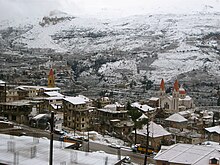
Lebanon has six ski resorts with groomed slopes, catering to skiers and snowboarders of all levels. Beyond the ski-able domains await you kilometers of cross-country skiing and snowshoeing trails waiting to be explored; Lebanon has something for everyone. Each of the ski resorts has a different flavor.
Wine tasting [ edit ]
Lebanon has some of the oldest sites of wine production in the world and today enjoys a burgeoning industry producing award-winning wines for worldwide export, though mainly in the UK, Europe and the United States. Wine tasting is an absolute must with any visit to Lebanon. Below are some wine producers in Lebanon for you to keep an eye out for:
- Chateau Musar [dead link] , Chateau Ksara , Chateau Kefraya , Domaine Wardy , Vin Héritage , Chateau Fakra [dead link] , Domaine de Baal , Chateau Nakad [dead link] , Massaya , Domaine des Tourelles , Clos Saint Thomas , Cave Kouroum [dead link] , Clos de Cana [dead link] , Nabise Mont Liban , Chateau Khoury ,
Buy [ edit ]
Money [ edit ].
The Lebanese currency is the Lebanese pound , which is most commonly known in Lebanon as the Lebanese lira . It is denoted by the symbol " ل.ل., " or " LL " (ISO code: LBP ). After the Lebanese Civil War ended, its value was kept stable relative to the US dollar for decades, at a value of LL1,500 to US$1, but has been in free fall since October 2019, resulting in a major economic crisis that has paralyzed the country. In February 2023, the pound was devalued by 90%.
Credit card and ATM card use are charged at the Sayrafa rate , which is below the black market rate. You can get the best rate by bringing cash to exchange at the money shops. Though due to the financial crisis, you have to assume you can't use your debit/credit card in Lebanon at all. In most cases, you cannot use it to purchase stuff, you cannot use it in restaurants or hospitals and you cannot use it in the ATM to withdraw money. Cash is the key to paying in Lebanon at the moment.
Lebanese lira and US dollars are accepted almost everywhere, and it is common to pay in dollars but receive change in lira (in which case, make sure you don't get short-changed). Since the financial crisis began, there are two types of US dollars talked about in Lebanon: “lollars”, which are US dollars stuck in Lebanese bank accounts frozen by the banks, and such are worthless , and "fresh dollars", which are in huge demand in Lebanon. As a visitor carrying fresh dollars, you may run the risk of being scammed. Since October 2019, banks have been running short of US dollars, and a black market has emerged with rates that have drastically diverged from the official (fixed) exchange rate. The currency has continued to fall in value.
Bills used are LL1000, LL5000, LL10,000, LL20,000, LL50,000 and LL100,000. You may find two forms of LL1000 and they are both accepted. There are LL250 and LL500 coins. LL25, LL50 and LL100 coins are virtually never used.
Eat [ edit ]

Lebanon fosters exquisite cuisine ranging from a mezza of vegetarian dishes such as tabouleh , fattoush , and waraq ainab to delicious dips like hommos and moutabal .
Must haves include Lebanese barbeque such as shish tawouq (barbequed chicken) – usually consumed with garlic, lahm mashwiye (barbequed meat), and kafta (barbequed seasoned minced meat).
Lebanese "fast food" is also available as sandwiches offered in roadside shops, such as shawarma sandwiches (known in other countries as doner - or gyros in Greece). Shawarma is rolled in Lebanese thin bread. Various barbequed meat sandwiches are also available, and even things such as lamb or chicken spleen, brains, lamb bone marrow or lamb testicles can be served as sandwiches.
Breakfast usually consists of manaeesh which look like folded pizza, the most common toppings being zaatar (a mixture of thyme, olive oil, sesame seeds), jebneh (cheese), or minced meat (this version is more properly referred to as lahm bi ajin ).
Another traditional breakfast food is knefeh , a special kind of breaded cheese that is served with a dense syrup in a sesame seed bread. It is also served as dessert.
Lebanon is also very famous for its Arabic sweets which can be found at leading restaurants. The city of Tripoli, however, is considered to be "the" city for Lebanese sweets, and is sometimes even referred to as the "Sweet Capital" of Lebanon.
International food chains are widely spread across the country. Italian, French, Chinese, and Japanese cuisines, as well as café chains (such as Starbucks, Dunkin' Donuts, etc.), are particularly popular across the country, with a higher concentration in Beirut and the urban sprawl north of the capital.
Drink [ edit ]
Lebanon's wines have an international reputation. Grapes have been grown since antiquity, and the vineyards, largely in the Bekaa Valley, produce the base wine for distillation into the national spirit Arak, which, like Ouzo, is flavoured with aniseed and becomes cloudy when diluted with water. Arak is the traditional accompaniment to Meze.
But the grapes have also historically been used to make wine. This used to be predominantly white and sweet, but the soldiers and administrators that came to administer the French mandate after World War I created a demand for red wine, and large acreages were planted especially with the Cinsault grape. Over the last 20 years, these have been supplemented with the most popular international varieties, such as Cabernet Sauvignon and Chardonnay.
Wineries often offer wine tasting and are very welcoming. The highly individual, old-fashioned, Chateau Musar, is based at Ghazir, 25 km (15 miles) north of Beirut, and trucks in the grapes from Bekaa. In Bekaa itself, wineries include the large Kefraya, Ksara, the oldest winery of all, Massaya, a fashionable new producer in Tanail, and Nakad in Jdeita, which like Musar has stuck with an idiosyncratic old-fashioned approach. Kefraya, in the West Bekaa region, also has a nice restaurant attached, and the region is beautiful to pass through.
Sleep [ edit ]
Lebanon is full of hotels, with a range in price and quality, from USD10/night to many hundreds of dollars per night, and the quality ranges just as much. Many international hotel chains, such as Intercontinental, Holiday Inn, and Crowne Plaza, can be found here. In Beirut, in coastal cities, and around the historic site of Baalbek, many luxury hotels built in the “Golden Age” boom of the 1960s and early 1970s can be found all over and stayed in for a luxurious and nostalgic experience. They offer a variety of services, including pools and restaurants, amidst the ongoing financial crisis they, although expensive, are your best bet for staying somewhere in Lebanon, as 24-hour electricity is generally nowadays only found in these hotels.
If you want something more affordable, although be prepared to suffer electricity and wifi outages for long hours each day, you can also stay in the many “mom-and-pop” style hotels and boutique hotels found in the country. The best way to save money if you are staying for a long visit is furnished apartments or all-suite hotels, as they come with cleaning and other services.
Learn [ edit ]

Secondary schools [ edit ]
French-language private schools (and some English-language schools) dominate the education system, due to the widespread inefficiency of the Lebanese state education system since 1975. As such, most schooling is held in either French or English, though students typically learn (Modern Standard) Arabic as a second language in these schools.
A handful of private schools, such as the Lycée Français (several branches over the country), the Collège Protestant Français , Collège Saint Joseph Antoura [dead link] , Lycée Abdel Kader , Collège Notre-Dame de Jamhour and Collège Elysée among others follow the official French curriculum. The official French Baccalaureate exams can be taken in Lebanon, but prove highly competitive.
Some schools (such as ACS) teach English as a first language and follow an English or American curriculum.
Beirut is also home to one of the most prestigious schools in the region, the International College (IC) which teaches both French and English as first languages among many others. Furthermore, IC offers a variety of baccalaureate programs such as the French, Lebanese, High School, and International Baccalaureate .
Universities [ edit ]
French-language or English-language universities also dominate given the inefficiency of Lebanon’s state university system since 1975. These universities have operated as a major hub of Lebanese cultural, political and social life for decades.
The American University of Beirut - AUB is considered the best American university in the Middle East, and enjoys a highly prestigious reputation in Lebanon. The teaching language there is in English. Other Anglophone private universities include: Antonine University - UPA [dead link] | Notre Dame University - NDU | Lebanese American University - LAU ...
Some private universities have French as the main teaching language. Université St.Joseph - USJ is one of these, it is an old and respected institution in Lebanon, and probably offers the best price/quality ratio among private universities in the country. It is the private university which has enrolled most of the Lebanon students as well as foreign students from other countries in Middle East, Africa and Europe. Other francophone private universities are USEK and Balamand.
If you wish to enroll in the Lebanese state system, the Lebanese University is a recommended state-owned/public university, teaching in Arabic, French and English, and is the largest learning institution in the country. It offers virtually free tertiary education.
Work [ edit ]
Volunteer [ edit ].
Lebanon continues to face numerous problems, including the 2020 explosion in Beirut, which exacerbated the situation. The scarcity of basic supplies, such as food and water, has made them difficult to access for many Lebanese people. Offering sympathy whenever possible is appreciated by the Lebanese people.
If you really want to make a difference in Lebanon, you can donate to or help out with the following charities:
- Nusaned - Lebanon's largest NGO
- Lebanese Food Bank - A non-profit organisation established to eliminate malnutrition in Lebanon
Connect [ edit ]
MTC Touch [11] [formerly dead link] Mobile phone operator offers a GSM card for US$15 including a $10 credit (the START plan). Internet access starts at $10 for up to 100 MByte in a month. Alfa [12] [dead link] is another mobile phone operator which offers several prepaid plans ranging from $10 to $68. Like MTC Touch, internet access starts at $10 for a 500 MByte bundle per month.
Stay safe [ edit ]
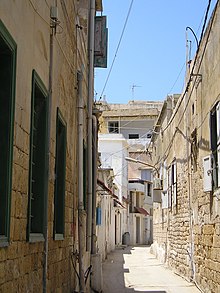
Though many foreign visitors fear widespread violence and destruction upon arrival in Lebanon, since the end of the Lebanese Civil War in 1990 Lebanon has remained relatively peaceful. The vast majority of Lebanese are friendly, and most tourists experience no problems. Nevertheless tensions with neighbours Israel and Syria sometimes erupt (but are usually confined to South Lebanon) and therefore travellers should follow the independent press while in the country.
Like in any country, it is preferable to be accompanied when visiting certain locations. In general, immediate proximity to the borders with Syria and Israel, and any Palestinian or Syrian refugee camps should be avoided.
Some areas in Lebanon are likely to be dangerous for tourists, such as the town of Arsal in the Northern Bekaa, known for kidnapping expats for ransom. In the 2010s, Arsal was also known for the activities of ISIS cells in the area fighting in neighbouring Syria, and some may still operate in the area. As such, you should generally avoid the town of Arsal.
Since the end of the war, in Southern Lebanon, the pro-Iran Shi’a militia Hezbollah holds complete dominance over everyday life, with virtually no government presence and no army presence. As such, the region has been described as “lawless”. You should avoid making any kind of criticism of Hezbollah or Iran while in Southern Lebanon, or any praise of Israel, Saudi Arabia, or Western countries as you can land in serious trouble . Though many locals in the region are angered by Hezbollah’s dominance over politics, economics, and civil life in Southern Lebanon, do not be tempted to join them in anger as you could be used as a political bargaining chip if unlucky.
Visitors should always register with their respective embassies once they enter Lebanon and keep up-to-date regarding any travel warnings regarding Lebanon.
Useful phone numbers:
- Police: 112 or 911 or 999 (it is common that if you call them for small-scale infractions e.g. pick-pocketing or sexual harassment they will not come).
- Fire brigade: 175 (metropolitan Beirut only)
- Civil defense: 125 (outside Beirut)
- The Red Cross (Medic Response): 140
- Information: 1515
Stay healthy [ edit ]
As a key destination for health tourism in the region, Lebanon has a professional and private healthcare system. Located mainly in Beirut, key hospitals include:
- AUH (American University Hospital), Hamra area: +961-1-344704.
- RHUH (Rafic Hariri University Hospital), Bir Hassan area: +961-1-830000.
- Hotel Dieu de France, Ashrafieh area: +961-1-386791.
- Rizik Hospital, Ashrafieh area: +961-1-200800.
- Mont Liban Hospital, Hazmieh area: +961-1-955444.
- Sacré Coeur Hospital, Hazmieh area: +961-1-451704.
- Saint George Hospital, Ashrafieh area: +961-1-441000.
- Tel Shiha - Zahle, Beqaa
- Nini Hospital - Tripoli, North Lebanon: +961-6-431400.
- Hopital Albert Haykel - Koura, North Lebanon: +961-6-411111.
- Sahel Hospital - Airport Ave Area: +961-1-858333
- Jabal Amel Hospital - Jal Al Baher Area, Tyre: +961-7-740343, 07-740198, 07-343852, 03-280580
- Labib Medical Center - Abou Zahr Street, Sidon Area: +961-7-723444, 07-750715/6
- Bahman Hospital - Beirut, Haret Hreik Area: +961-1-544000 or 961-3-544000
It is extremely important that you get travel insurance prior to your departure to Lebanon. Hospitals in the country can be very expensive and, with the lack of insurance, cash payments may be expected beforehand.
It's recommended to drink bottled water rather than tap water.
Respect [ edit ]
Lebanon is a country of many different religious sects, so it is wise to respect the religious differences of the Lebanese population. It is recommended to wear modest clothing when visiting religious sites (churches, mosques, etc.) and when visiting rural towns and villages. Sectarian attitudes, although widespread during the war, have largely decreased, especially in the wake of the recent financial crisis, which has seen large sectors of Lebanese society come together in unity. However it has not fully disappeared in areas such as the South.
Even in Beirut, some areas (notably the Shi’a-majority southern suburbs) are more conservative than others, thus visitors should bear that in mind when exploring the city. Overall, however, clothing considered 'western' is largely acceptable, with a large number of Lebanese women not wearing hijab in stark contrast to neighbouring Syria, and with a huge cosmetics, plastic surgery, and beauty industry. But to hedge your bets, keep your dress generally modest. Bear in mind, however, that as open and western as Beirut is, this is not Europe; "topless" at any beach, whether private or public, is not recommended at all.
In Tripoli, especially in the old city, it is recommended that women dress conservatively. The same applies on most traditional "souks" in the country. In general, Lebanese are accustomed to different lifestyles and some do not take offense easily, especially with matters related to dress. The Lebanese are people accustomed to diversity and are therefore quicker to accept different lifestyles, though not all Lebanese are so open-minded.
Social etiquette [ edit ]
- The Lebanese are indirect communicators . They are tempered by the need to save face and they will avoid saying anything that could be construed as critical, judgmental, or offensive. This said, the Lebanese value transparency and openness and they take words at face value.
- The Lebanese value sincerity and openness . Expect a Lebanese person to do exactly what they say they will do. To them, their word is their bond. Don't say something if you don't mean it. Don't say "next time" if there isn't going to be a "next time".
- The Lebanese respect their elders . You are expected to act politely around someone older than you, and it would be seen as rude if you attempt to challenge someone older than you.
- Never beckon a Lebanese person directly , even if they have done something wrong in your opinion. The Lebanese are quite sensitive to being beckoned directly, and it is considered very rude manners.
- If a Lebanese person asks you for a favour, try to follow through with it . It's completely normal for the Lebanese to try to help each other out as much as possible. Being reluctant to accept favours is considered extremely rude.
Sensitive issues [ edit ]
Politics [ edit ].
Lebanon has been facing a large-scale, multi-dimensional economic crisis since 2019, resulting in the majority of citizens losing their life savings due to banks' refusal to allow withdrawals. Furthermore, a failed "Revolution" (Thawra) in October 2019 has caused the country to unite against the government.
Discussing politics is not a social faux pas; in fact, the Lebanese may delight you with conversations about how hapless their government is.
- Has custom banner
- Has warning box
- Has map markers
- Articles with dead external links
- Has VisaRestriction box
- Has VisaRestriction box with no date
- Articles with formerly dead external links
- Has Geo parameter
- Middle East
- All destination articles
- Outline countries
- Outline articles
- Country articles
- Pages with maps
Navigation menu
13 Stunning Places to Visit in Lebanon
Adventurous Kate contains affiliate links. If you make a purchase through these links, I will earn a commission at no extra cost to you. Thanks!
What are the best places to visit in Lebanon? If you’re planning a trip to Lebanon, where should you go? Lebanon is a fantastic little country with so much to see!
The good news is that Lebanon is a compact country. So compact that it’s possible to base in Beirut the whole time and take day trips all over the country. That’s what I did on my trip — and it made it so easy to travel all over Lebanon while coming back to the same bed every night.
One of the things I love most about Lebanon is its cultural diversity. The population is about 45% Christian and 50% Muslim, with 18 recognized religious groups. There’s a sizable Armenian population, too, and people with origins all over the Middle East and the world.
Consequently, there are parts of Lebanon that feel very European, and parts of Lebanon that feel very Middle Eastern. Places where you can default to French and places where you’ll need to know a few words of Arabic.
Lebanon is geographically diverse, too — mountains, deserts, waterfalls, cities of all sizes. In Lebanon you could theoretically ski in the morning and lie on the beach in the afternoon! (Granted, you can only do that in the winter, so it wouldn’t quite be sunbathing weather, but I digress…)
Here are my picks for the best places to visit in Lebanon — along with how to get there, Lebanon safety information, and the best things to do in Lebanon.
Table of Contents
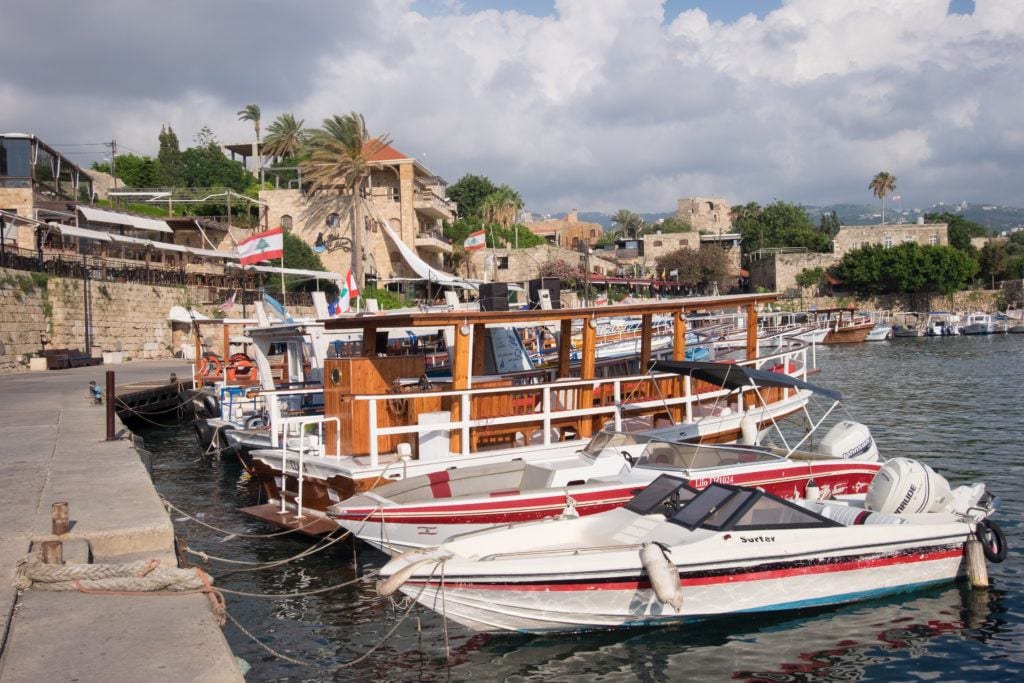
Best Places to Visit in Lebanon
All roads lead to Beirut in Lebanon, and Beirut makes a great base for your whole trip. But as far as day trips go, you have freedom to shake things up.
If you could only visit three places in Lebanon besides Beirut, I would recommend the seaside town of Byblos , the Roman ruins of Baalbek , and the small city of Tyre .
Lebanon is a lot safer than you think it is . You don’t need to worry about war or terrorism more than you do in other countries, and common sense will get you far, but it’s smart to check the latest news before you go.
Baalbek is in the Beqaa Valley, close to the Syria border in Hezbollah-controlled territory. To get to Baalbek , it’s best to hire a private driver or join a day tour from Beirut.
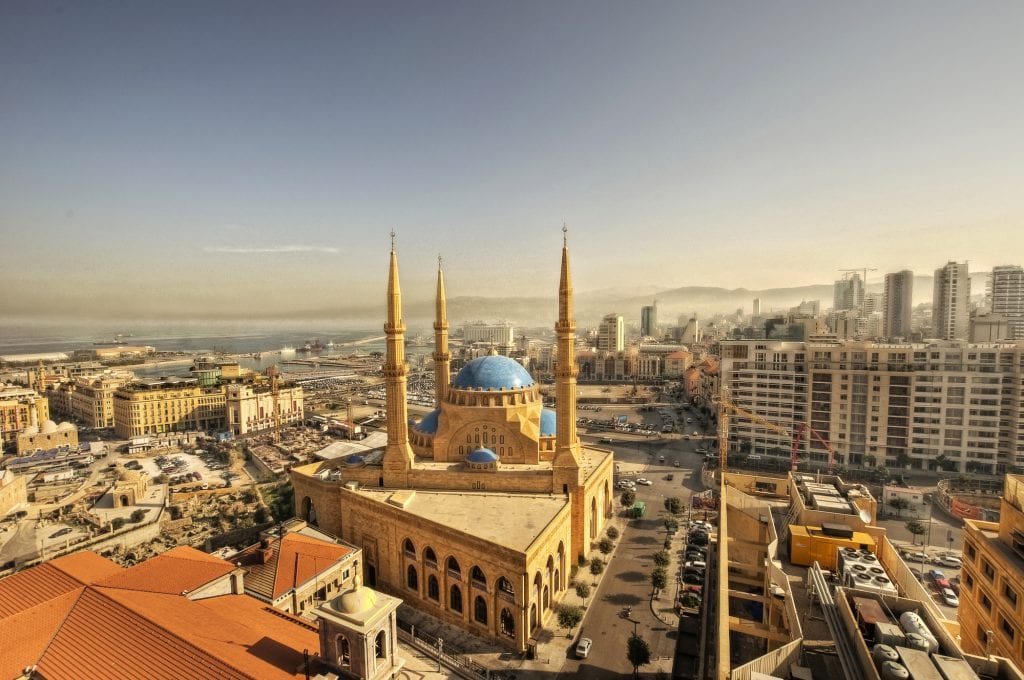
Beirut is one of the best, most vibrant, most exciting cities in the Middle East. Because it’s much more liberal than other Middle Eastern cities, there is a huge party scene, from the wild beach clubs to the roof-retracting nightclubs. But beyond the nightlife, you have centuries of history and different cultures coming together. Oh, and did I mention how good the food is here?!
Have a night out bar-hopping on Armenia Street in Mar Mikael; stroll along the Corniche in the morning; check out the cafes on Hamrun Street; visit the National Museum of Beirut; take the Alternative Tour Beirut to learn more about Lebanon from a holistic perspective; spend a day at a beach club; shop in the Beirut Souks (more a mall than souks).
How to get to Beirut: Lebanon’s land borders are closed, so the easiest way to get to Beirut is to fly. Check Skyscanner for the best rates. There are also some ferries from Cyprus.
For me, Lebanon was part of a larger trip, so I flew to Beirut from Amsterdam via Istanbul on Pegasus Airlines. On the way back I flew from Beirut to Larnaca, Cyprus, spent a few days there, and flew back to Amsterdam.
Where to Stay in Beirut: See the Where to Stay in Lebanon section below for my top accommodation picks in Beirut.
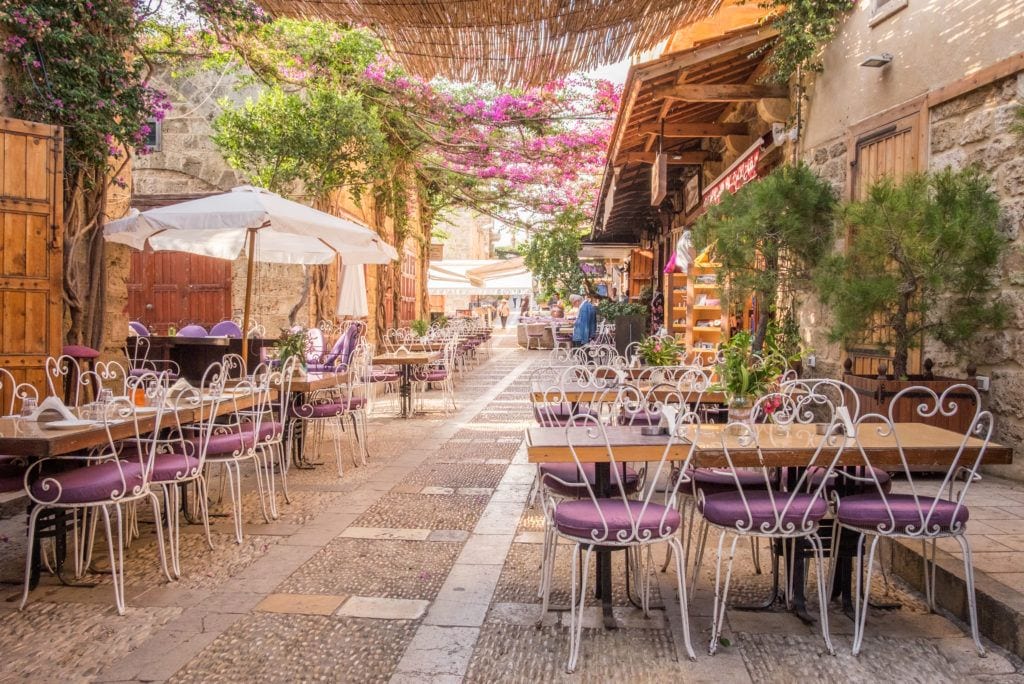
Byblos — known as Jbeil in Arabic — is easily one of the most beautiful places to visit in Lebanon. This seaside village north of Beirut looks like it could be a coastal town in Montenegro with its teal waters, palm trees, sandstone old town, and mountains rising in the background.
You might notice that the word “Byblos” is related to books — well, there’s reason for that. Byblos was a trade center for papyrus, importing it from Egypt and exporting it throughout the Aegean, distributing the earliest books.
Today in Byblos, you can visit the ruins, walk along the water, shop in the souk (now filled with souvenir shops more than anything else), or enjoy fresh seafood at one of the cafes with a water view.
Byblos is one of Lebanon’s UNESCO World Heritage Sites, designated for being one of the oldest Phoenician cities, inhabited since Neolithic times, and for helping create the Phoenician alphabet.
How to get to Byblos: Byblos is about a 45-minute drive from Beirut. It’s doable with an Uber, but you may have trouble finding an Uber to take you back to Beirut. Minibuses to Byblos (Jbeil) leave from Charles Helou bus station in Beirut, though they drop you off along the highway, about a 15-minute walk from town. This day tour from Beirut includes Byblos, Jeita Grotto, and Harissa.
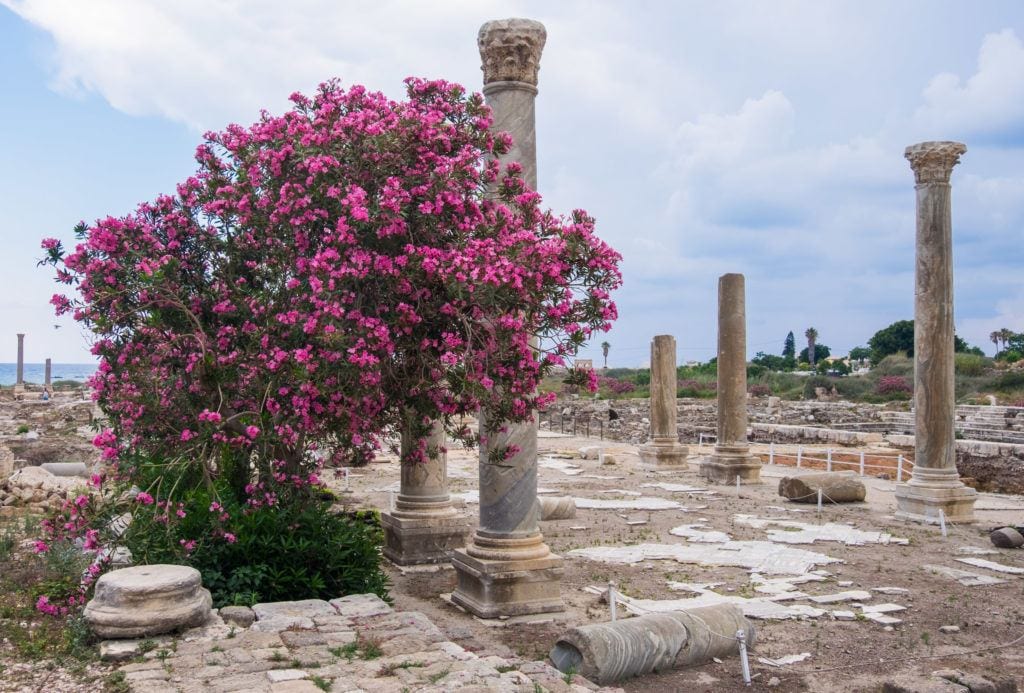
Tyre, also known as Sour (pronounced soor ), was one of the most important cities on the Mediterranean. Today, this city in southern Lebanon is home to fine Roman ruins perched up against the sea, a pleasant and walkable small town, incredibly friendly people, and fresh flowers bursting out in every direction.
Some places give you great vibes from the moment you arrive. That was Tyre to me. It was walking along the seaside and having fresh orange juice with a mother and her young son. It was being one of the few people at the ruins, wondering why it wasn’t full of tourists. It was wandering through the town and photographing each piece of it.
Tyre is one of Lebanon’s UNESCO World Heritage Sites, designated for its ancient ruins, history as a Phoenician city, founding of cities like Cadiz and Carthage — and their achievement of inventing purple dye!
How to Get to Tyre: Tyre is about a one hour and 45-minute drive from Beirut. For public transportation, the minibus to Tyre (Sour) leaves from Cola Intersection in Beirut and you may need to change minibuses in Sidon (Saida) along the way. This day trip from Beirut visits Tyre, Sidon, and Maghdouche.
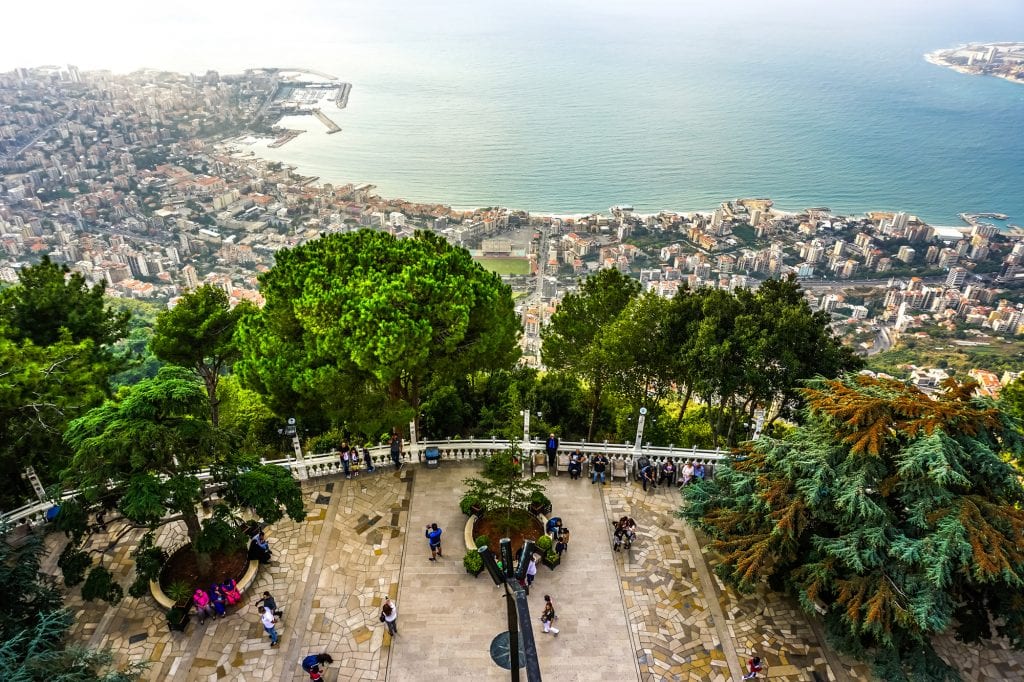
Harissa is home to one of the most famous sights in Lebanon: the Our Lady of Lebanon statue, perched on a mountaintop, seeming to look over the nation. Come to Harissa and you, too, can enjoy this Lebanese pilgrimage site — and spectacular views at 650 meters above sea level.
The Sanctuary here was created to honor the Virgin Mary — and serves as a place for peace-gathering workshops and activities between Christians and Muslims, and denominations within Lebanon’s 18 religious groups.
The most fun way to get to Harissa is to take a cable car to the top! It leaves from the seaside city of Jounieh.
How to get to Harissa: Harissa is about a 40-minute drive from Beirut. While you can drive there, you might enjoy it more if you drive to Jounieh and take the cable car to Harissa, a nine-minute journey. For public transportation, the minibus to Jounieh leaves from Charles Helou bus station in Beirut. This day tour from Beirut includes Harissa, Byblos and Jeita Grotto.
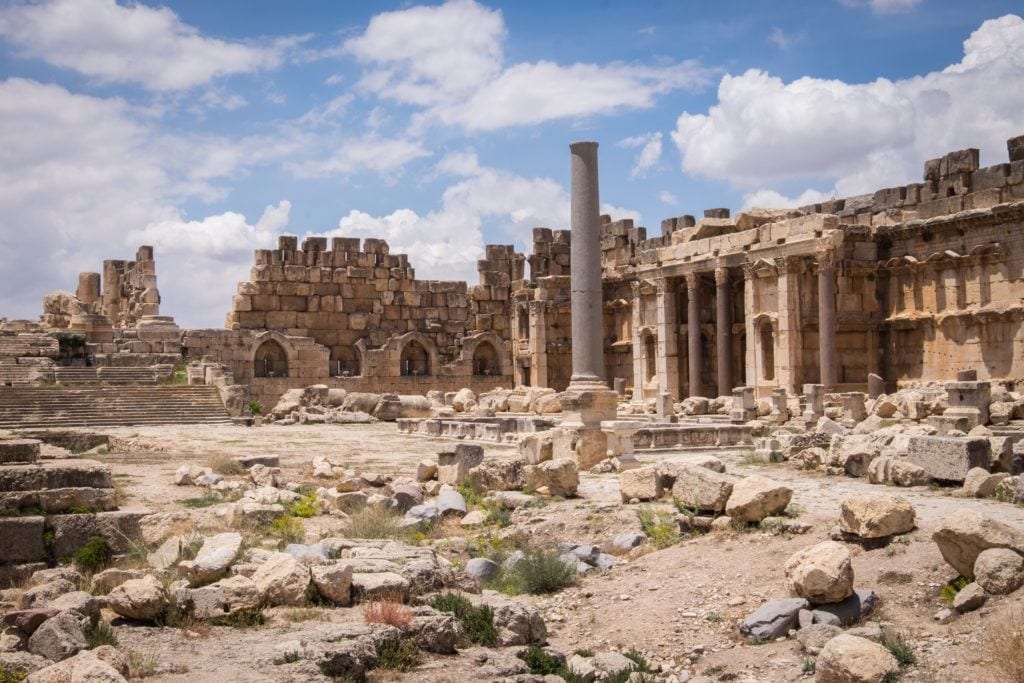
Get ready to see some of the best Roman ruins of your life! I’m not a huge fan of ruins in general, but Baalbek is home to some of the best ruins I’ve ever seen, the kind that stun you into silence. The scale alone is mind-boggling.
Baalbek is the ruins of the city once known as Heliopolis, the City of the Sun. The four temples here — dedicated to Jupiter, Mercury, Venus, and Bacchus, after Roman gods — are some of the largest remaining temples of the Roman Empire. You can also witness the two of the largest stone blocks in antiquity: the Stone of the Pregnant Woman, clocking in at 1,000 tons, and a block simply known as the megalith, clocking in at 1,650 tons!
If you’re looking to feel like an adventurer in Lebanon, there’s no better place than Baalbek. Climb to the top of the temples and enjoy the views around you, as the most powerful Romans once did.
Baalbek is one of Lebanon’s UNESCO World Heritage Sites, designated for its history as a Phoenician city and its enormous ruins, which are one of the finest surviving examples of Roman architecture.
How to get to Baalbek: Baalbek is about a two-hour drive from Beirut. I recommend spending a day exploring Baalbek in tandem with Anjar and the Beqaa Valley, possibly including a winery. This is best done with a private driver or day tour. This day tour from Beirut includes Baalbek, Anjar, and stop at Ksara Winery.
For public transportation, go to Cola Intersection in Beirut and say you want to go to Baalbek; you will be brought to a minibus to Chtaura, then you can change minibuses to get to Baalbek.
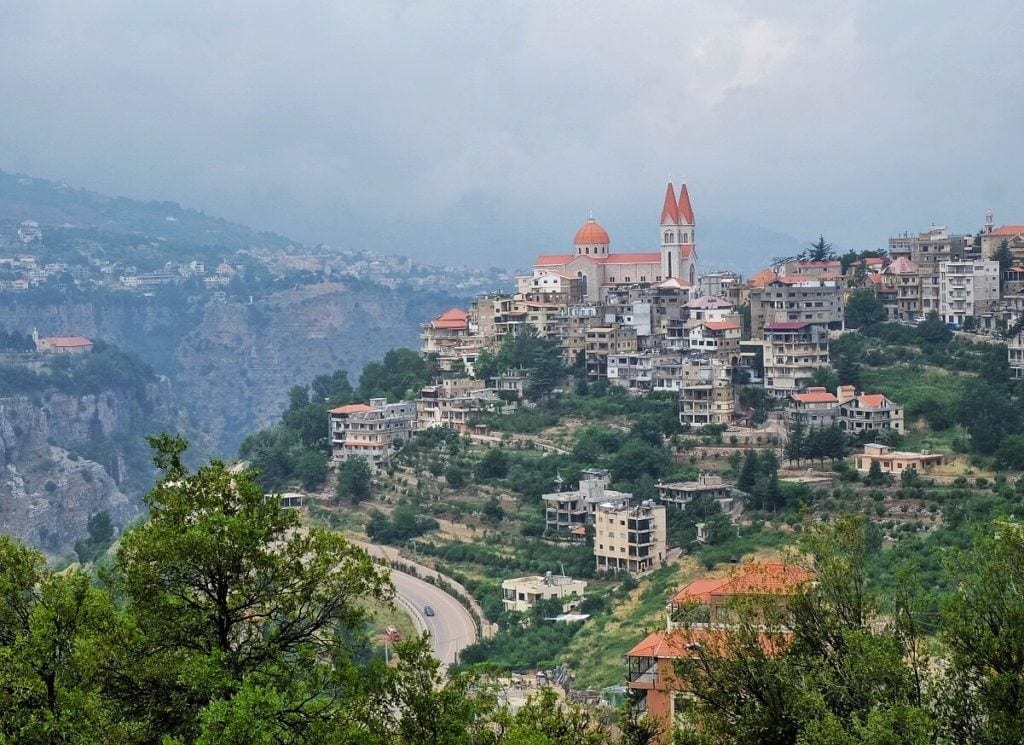
The drive to Bcharré, or Bsharri in Arabic, takes you through the winding roads of the Qadisha Valley, into river-carved canyons and mist-covered mountains. From there you’ll enjoy views that pull on your heartstrings. If you visit in the winter, you might even get to see snow.
Bcharré is famed for being the home of Lebanese-American poet, writer and artist Kahlil Gibran. The Gibran Museum was once a shelter for hermetic monks, carved into life from the rocks; today, it hosts Gibran’s tomb and a collection of his writings and drawings.
And the view above, one of my favorite views in Lebanon, it taken from the museum itself.
How to get to Bcharré: Bcharré is about a two-hour drive from Beirut. For public transportation, there is a daily minibus to Bcharré (Bsharri) that leaves from Dowra Intersection in Beirut. This day tour takes you through Bcharré, the Qadisha Valley, and the Cedars of Lebanon.
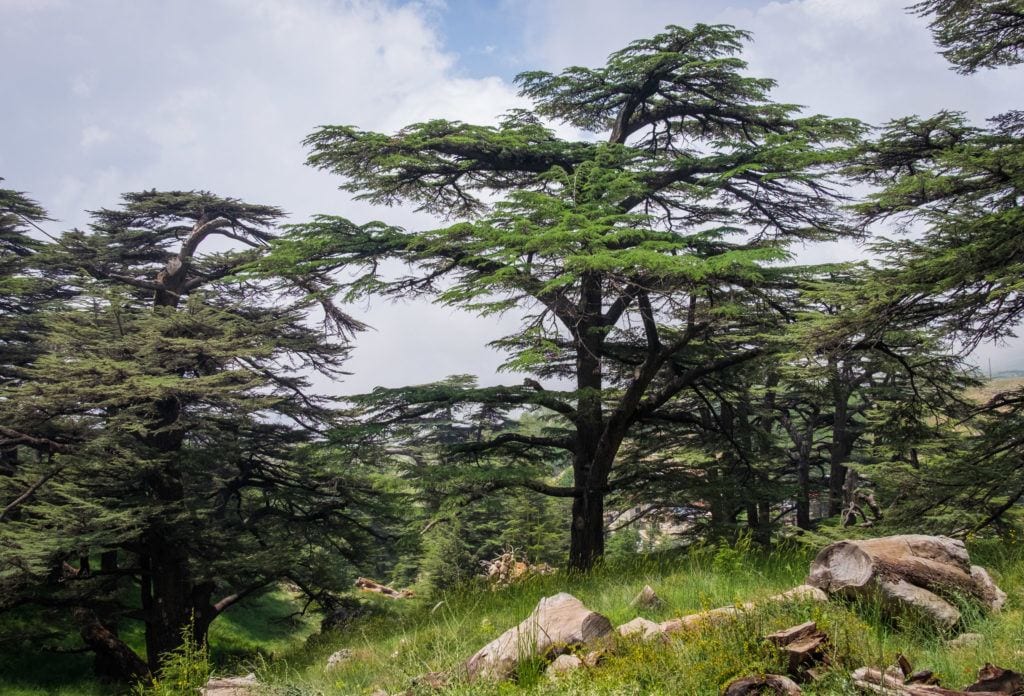
Cedars of God
Cedars are one of the most recognized symbols of Lebanon today. It proudly adorns the Lebanese flag. For centuries, these trees were lauded for their strength. The Phoenicians used their wood for boats; the Egyptians used their resin for tombs. Even U2 has a song called Cedars of Lebanon.
Sadly, there aren’t a lot of cedars remaining today. While they once covered the countryside around Lebanon, massive deforestation has led to their numbers dwindling. Cedars of God Park outside Bcharré is one of the places to see them. It’s worth visiting and hiking through the park to see their majesty up close — but seeing so few of them may leave you a bit depressed.
The cedars are fiercely protected today, however, and reforestation efforts are underway. But they take a long time to grow to adulthood, we won’t be seeing abundant cedar forests for decades.
The Cedars of God are one of Lebanon’s UNESCO World Heritage Sites, shared with the Kadisha Valley. They received this designation for their history as the most prized wood used for constructing religious buildings.
How to get to the Cedars of God: Cedars of God in Bcharré is about a two-hour drive from Beirut. For public transportation, there is a daily minibus to Bcharré (Bsharri) that leaves from Dowra Intersection in Beirut. This day tour takes you through Bcharré, the Qadisha Valley, and the Cedars of Lebanon. Alternatively, this tour gives you a full day of hiking in the Cedars .
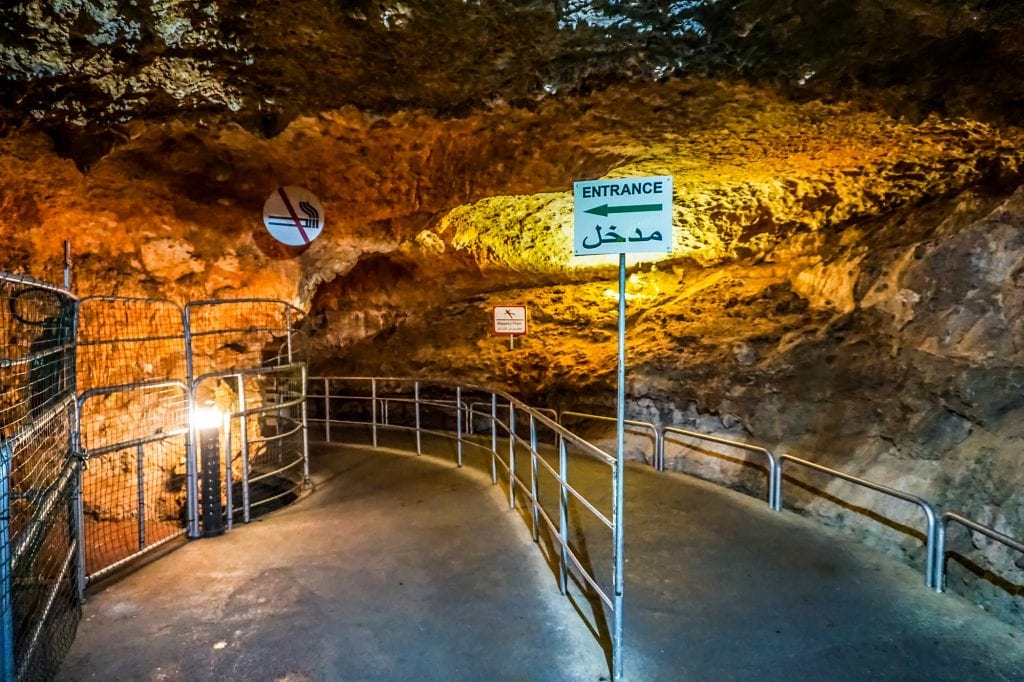
Jeita Grotto
Jeita Grotto is just outside Beirut, making it a super-easy afternoon trip (and a cool relief from a hot day!). This grotto is a system of two limestone caves. They consist of two sets of caves: the lower caves and the upper caves.
The lower caves are home to a river that provides fresh water for many people in Lebanon, and you can visit by boat. It’s a spooky but beautiful experience, especially in the boat, with the water lit up bright blue. The upper caves have a pathway to explore on foot, and they’re home to the largest stalactite in the world: 8.2 meters (27 feet) long!
Keep in mind that Jeita Grotto is VERY strict about no photos allowed. Don’t try to sneak one.
Jeita Grotto is close to Harissa and Byblos, making it a great day out to visit all three. (Though you may want to allot the most time to Byblos.)
How to get to Jeita Grotto: Jeita Grotto is about a 30-minute drive from Beirut. You can easily take an Uber there, as I did; you can’t pick up Ubers there, though, so I took a taxi from Jeita Grotto on to Byblos. This day tour from Beirut includes Jeita Grotto, Harissa, and Byblos.
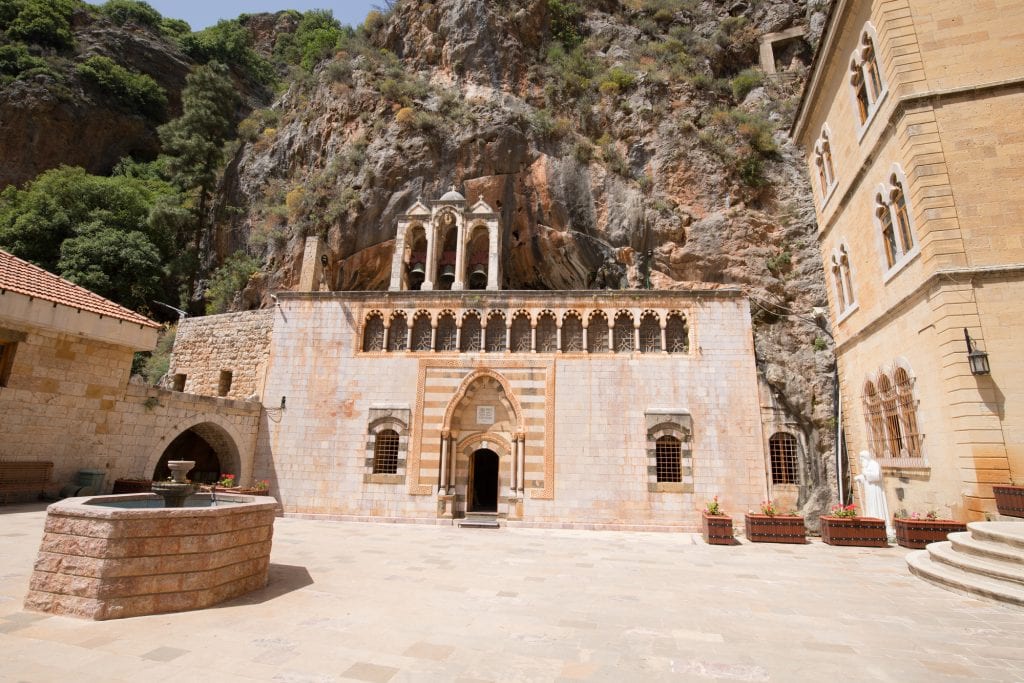
Qadisha Valley and Qozhaya
The Qadisha Valley feels like a world away from Beirut — but in a day trip you can see quite a bit of it. Mountains rise into the mist; rivers wind through the countryside, and mammoth rock faces give way to monasteries. The Qadisha Valley — also called the Kadisha Valley — was home to some of the earliest Christians fleeing persecution.
Qozhaya (Kozhaya) is one of the most important monasteries in the Qadisha Valley, and home to a convent dedicated to St. Anthony. A long drive through a wooded canyon takes you to the buildings, examples of Arabic architecture in the Middle Ages, and a rock-hewn chapel painstakingly built inside a cave.
The Qadisha Valley is one of the best places to visit in Lebanon if you’re looking to enjoy nature. Here you can hike, climb mountains, or even ski.
The Qadisha Valley is one of Lebanon’s UNESCO World Heritage Sites, designated for its history as one of the most important early Christian monastic settlements.
How to get to Qozhaya: The Qadisha Valley is about a 90-minute drive from Beirut. Qozhaya is best visited by hiring a private driver or booking a day tour from Beirut. This day tour takes you through Bcharré, the Qadisha Valley, and the Cedars of Lebanon.
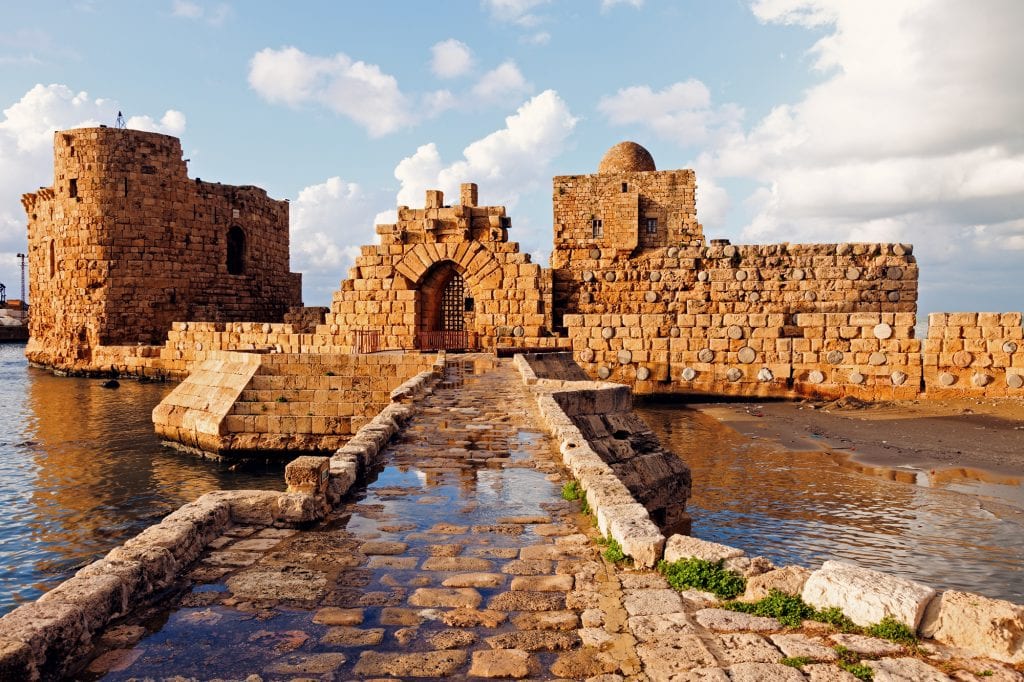
Sidon, also known as Saida, is a port city to the south of Beirut. Though it has a storied history, Sidon is one of the lower-key, calmer cities to visit in Lebanon, and one of the easier side trips from Beirut.
Sidon is famous for two places in particular: its outstanding souks, some of the most picturesque in Lebanon, which sell both traditional and modern wares in their traditional small stalls; and the Sea Castle, which was built by the crusaders as a fortress of the Holy Land.
Sidon is about 45 minutes from Tyre, so it makes sense to pair them together on a day trip from Beirut.
How to get to Sidon: Sidon is about a one-hour drive from Lebanon. For public transportation, take a minibus to Sidon (Saida) from Cola Intersection in Beirut. This day trip from Beirut visits Tyre, Sidon, and Maghdouche.
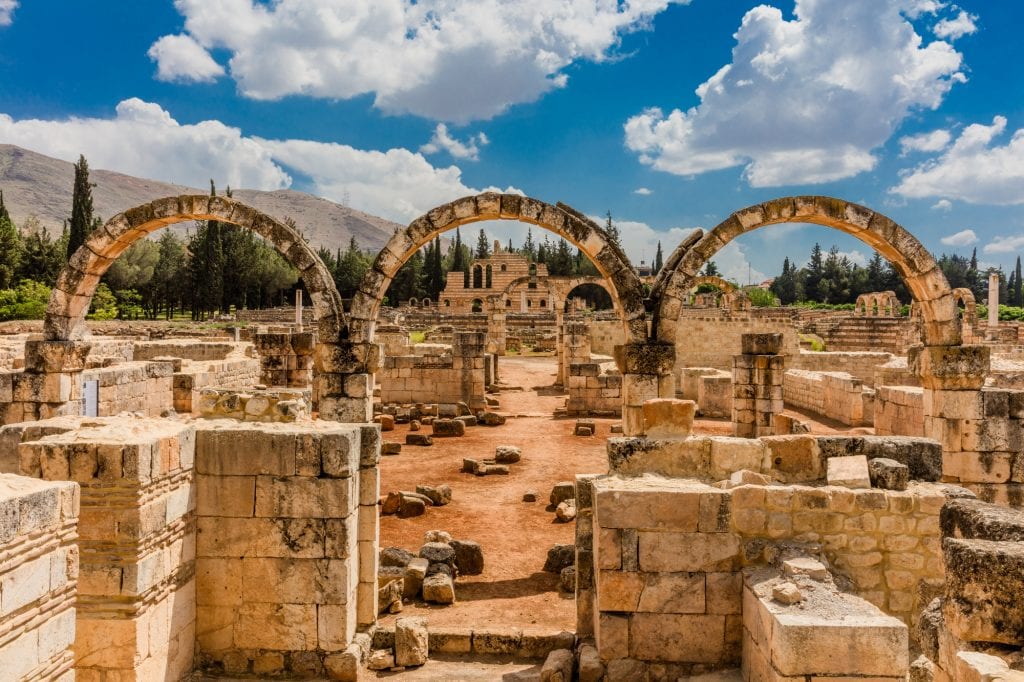
If you’re visiting the ruins of Baalbek, you should visit Anjar too — and most drivers or tours will take you to both. Anjar may not have the sweeping majesty of Baalbek, but these ruins have something unique: spectacular arches that were designed by the Umayyads. Before the Anjar ruins were studied by archaeologists, there was no other evidence of the Umayyad Caliphate in Lebanon.
Anjar’s ruins are just a stone’s throw from the Syrian border (a mountain range divides the two countries). The city of Anjar is also home to one of the biggest communities of the Armenian diaspora in Lebanon. The city is also known for its four-sided wells.
Anjar is one of Lebanon’s UNESCO World Heritage Sites, designated for its ruins, which survive as an example of city planning under the Umayyads.
How to get to Anjar: Anjar is about a 90-minute drive from Beirut. This destination is best seen in tandem with Baalbek and the Beqaa Valley, either by hiring a private driver or booking a day tour. This day tour from Beirut includes Baalbek, Anjar, and stop at Ksara Winery.
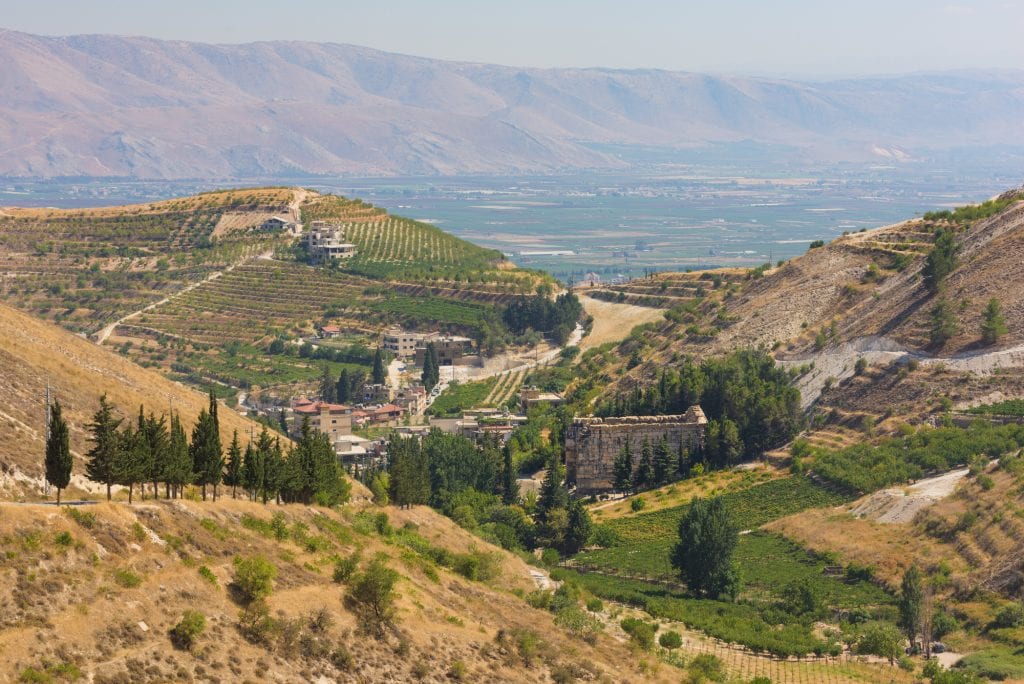
Ksara, Wine Country, and the Bekaa Valley
Did you know that Lebanon has a thriving wine scene? That might be surprising for a Middle Eastern country, but not so much in retrospective when you consider its multi-ethnic background and its location right on the Mediterranean.
The best wines grow in high-altitude areas of Bekaa Valley, close to Baalbek and Anjar. Whites are nice but forgettable; where the region truly shines is Bordeaux-style reds and dry rosés.
Chateau Ksara is one of the popular wineries and they welcome travelers for tours, tastings, and lunches. Of course, if you plan on sampling the wines, you should not be driving that day — this is a good time to come on a tour or book a private driver!
How to get to Ksara and the Bekaa Valley: Chateau Ksara is a 90-minute drive from Beirut. Many tour companies include a stop at Chateau Ksara as part of their tours in the Bekaa Valley. This day tour from Beirut includes Baalbek, Anjar, and stop at Ksara Winery. Alternatively, this wine tour spends the whole day visiting wineries in the Bekaa Valley .
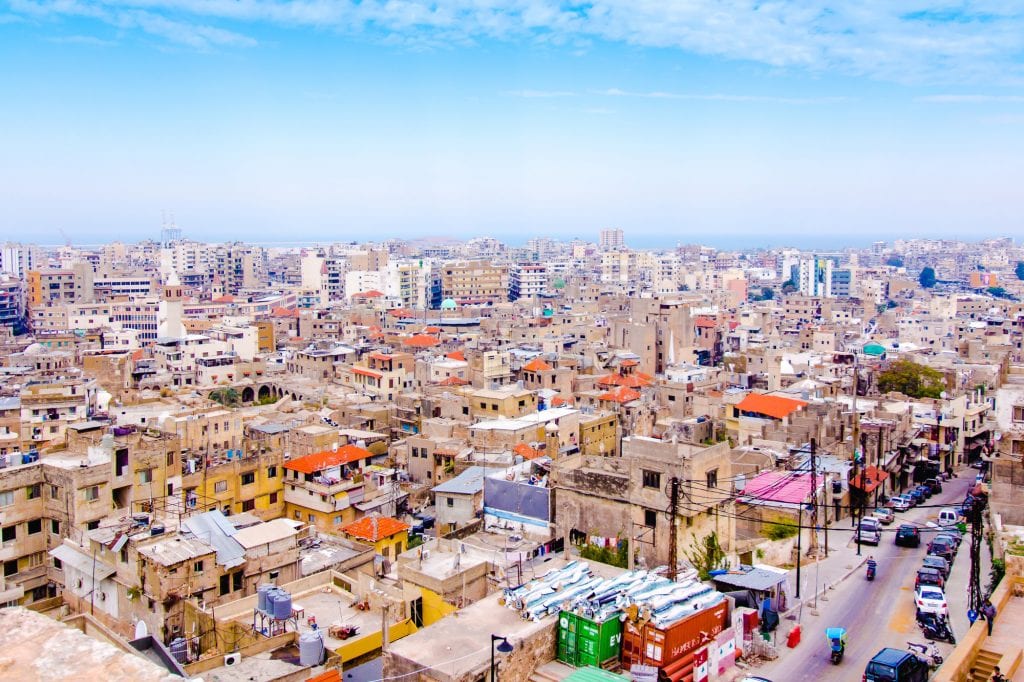
Finally, there’s Tripoli, or Trablous in Arabic — the second-largest city in Lebanon and a place that isn’t on most travelers’ itineraries. (Oh, and it’s definitely not the Tripoli in Libya!) If you do visit, though, you’ll get to enjoy a warm and welcoming city little-touched by tourism.
Tripoli has seen some hard times, and it’s one of the poorer cities in Lebanon. But there is a lot of beauty here — an Old City brimming with Mamluk architecture; dozens of souks, some of which specialize in gold or silver or fruits and vegetables or soap; and friendly locals eager to welcome you.
The El Mina neighborhood of Tripoli almost feels like another city, more like a calm seaside village. Offshore you can visit the Palm Islands Reserve and its protected turtles. Be sure to try some of Tripoli’s famous sweets (and if you’re a foreigner in the souk, everyone’s going to want you to sample theirs!).
How to get to Tripoli: Tripoli is a 90-minute drive from Beirut. For public transportation, take the Connexion bus from Charles Helou Station, which takes closer to two hours. This Tripoli day trip from Beirut gives you several hours in Tripoli, plus a stopover in Batroun or Byblos on the way back.
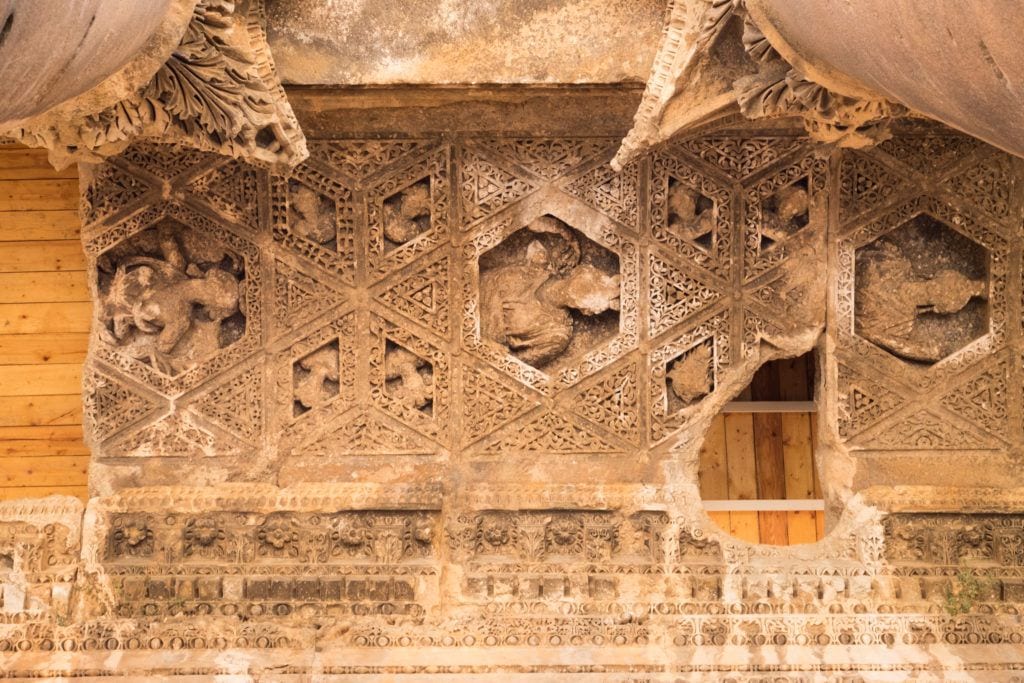
Is Lebanon Safe?
Is it safe to travel around Lebanon? Like most places in the Middle East, Lebanon is a lot safer than cable news would have you believe. The media paints the image of war, suicide bombers, and riots. Lebanon does have its problems — and has had some tough situations in recent years — but it’s not a war zone.
I traveled Lebanon as a solo woman in 2018 and didn’t feel uncomfortable at all — in fact, I was pleased with how much respect I was given as a woman. Then again, I chose not to visit Tripoli on advice from a local woman who advised me not to go alone (though other locals later told me that as an experienced solo traveler, I would have been fine).
In many ways, I felt safer as a woman in Lebanon than I have felt in many other countries. At one point, I had to sit next to a man on a minibus (usually women are sat next to women, but sometimes there’s a full bus and no other option). The man left six inches of space between us! That NEVER happened on the subway in New York!
Another issue is that part of the Bekaa Valley, including Baalbek and Anjar, is controlled by Hezbollah. When you enter that area, you pass through military checkpoints, as you do throughout Lebanon. (They are fast and easy and the guards usually have a smile for you.) Yes, it’s unnerving, especially since Hezbollah flags are for sale as souvenirs (!!), but most of the time tourists are able to visit safely.
The most important thing is to do your research before you arrive. Lebanon is not a place to arrive on a whim; doing proper research is essential. So where do you start?
I found this detailed post by Against the Compass to be an excellent resource for travel safety in Lebanon. It’s updated periodically with the latest safety information. I encourage you to save it and take a closer look before your trip.
I also recommend checking out the US State Department travel advisory and UK travel safety advice for Lebanon. I find that the US warnings tend to be more alarmist, while the UK warnings tend to be more realistic.
Most importantly, travel insurance is essential for trips to Lebanon — and to anywhere else in the world, frankly. If you need to be hospitalized with a broken bone or appendicitis, or if you have an emergency and miss your trip, or if you get robbed on a bus, travel insurance will help you recoup your financial losses. I use and recommend World Nomads .
Solo Female Travel in Lebanon: Is it Safe?
Top 10 Travel Safety Tips for Women
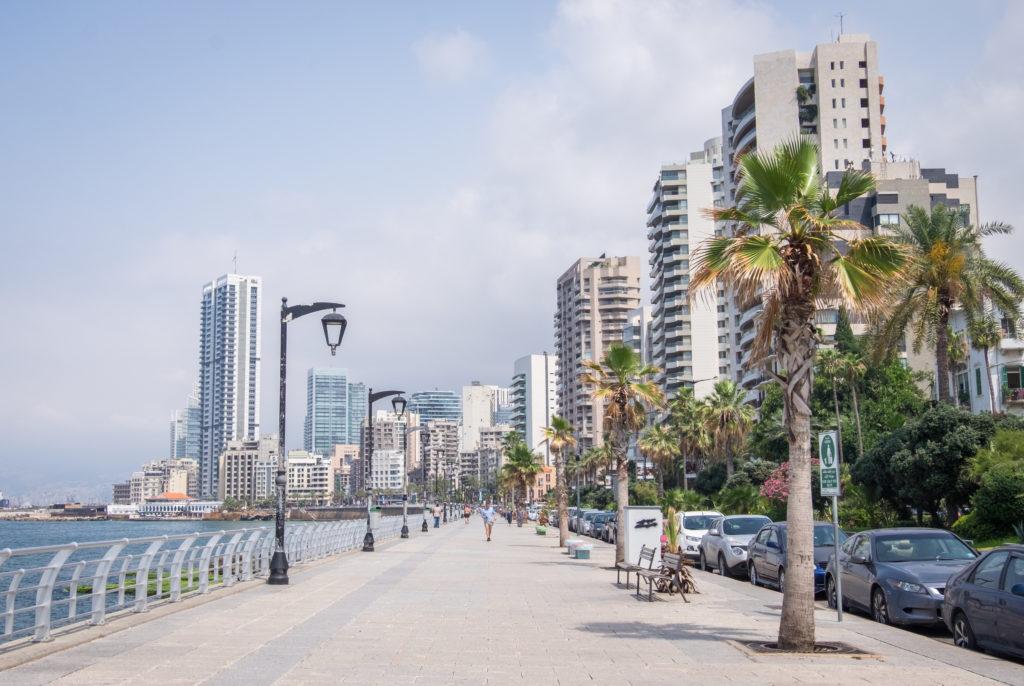
Where to Stay in Lebanon
Where’s the best place to stay in Lebanon? If you’re trying to see a lot of the country in a relatively short amount of time, it makes the most sense to stay in Beirut and do day trips. I stayed at the Radisson Blu Martinez . But there are options for all kinds of travelers.
If you want a fancy, crazy luxury experience: If you want top-notch luxury finishings and decor, go with the Sofitel Beirut Le Gabriel — it’s the best. If you want a splashed-out resort experience, go with the Movenpick Beirut , which has its own massive beach club.
If you want a small but funky local boutique hotel: The Albergo Hotel in the Achrafieh neighborhood has plant-filled terraces, local over-the-top decor, and a rooftop with a pool and outstanding views of the city.
If you want a mid-range hotel: The Radisson Blu Martinez , where I stayed, ticks all the boxes. The rooms are simple and the decor is dated, but it’s a solid option in a great neighborhood close to everything.
If you want a cheap but value-for-money place to stay: Loft 29 Residence is in the heart of the cool Hamra neighborhood, has all the facilities of apartments like laundry and a kitchen, and offers a free airport pickup in addition to very well-priced rooms.
Find deals on more places to stay in Beirut here.
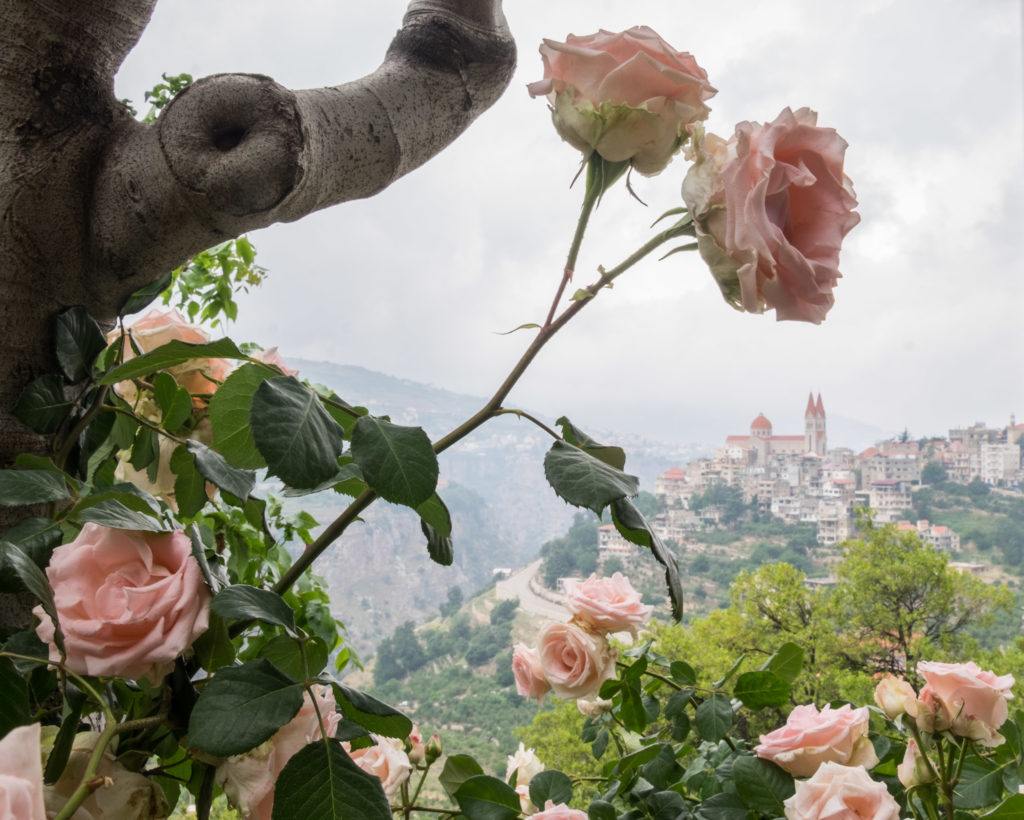
How to Get Around Lebanon
There are three main ways to get around Lebanon: you can get around by driving (either renting a car, hiring a private driver, or using Uber for short distances), you can take public transportation (mostly minibuses), or you can book organized day trips.
Should you rent a car in Lebanon? For most people, I don’t recommend it. Lebanon is home to some of the worst driving I’ve ever seen (it’s up there with Georgia and Malta). Traffic into and out of Beirut is hectic, and drivers don’t hesitate to cut across entire highways, with no warning or turn signal.
I’ve driven in lots of countries, but I had ZERO desire to drive in Lebanon once I realized how crazy it would be. You may be different, though. If you thrive in driving in erratic environments, you might enjoy driving in Lebanon.
Otherwise, there’s hiring a private driver (which can start at $150 per day and get pricier from there); and hiring one-way taxis and/or Ubers. Ubers are mainly based in Beirut, so you’ll need to use taxis on the way back.
It’s also worth noting that not a lot of drivers in Lebanon have working seat belts in their cars.
Taking public transportation is another option. Minibuses operate from Beirut all over Lebanon, departing from Cola Intersection (usually points northeast and south) and Charles Helou Bus Station (usually points north).
It’s chaotic when you get there and it seems like there are no rules! But ask where you’re supposed to go and people will help direct you. Women are sat next to women on minibuses unless there’s no other option; you pay when you arrive at your destination. Bring small bills.
I found Tyre and Sidon to be an easy day trip to do by public transportation: it’s a straightforward journey down the highway; the minibuses drop you off in town; both cities can be easily explored on foot.
Finally, there are group day tours from Beirut. I’m not usually a take-a-day-tour-on-the-bus person, but I was glad I did two tours in particular: one to the Qozhaya Valley with Bcharré and the Cedars of Lebanon , and one to Baalbek, Anjar, and Ksara Winery . Those trips would be impossible to do in a day on public transit, and they went too far for an Uber or cab driver.
More on Lebanon:
What’s It REALLY Like to Travel in Lebanon?
More from the Middle East:
Visiting Petra in Jordan
Hanging Out in Kadikoy in Istanbul
Visiting the Burj al’Arab in Dubai
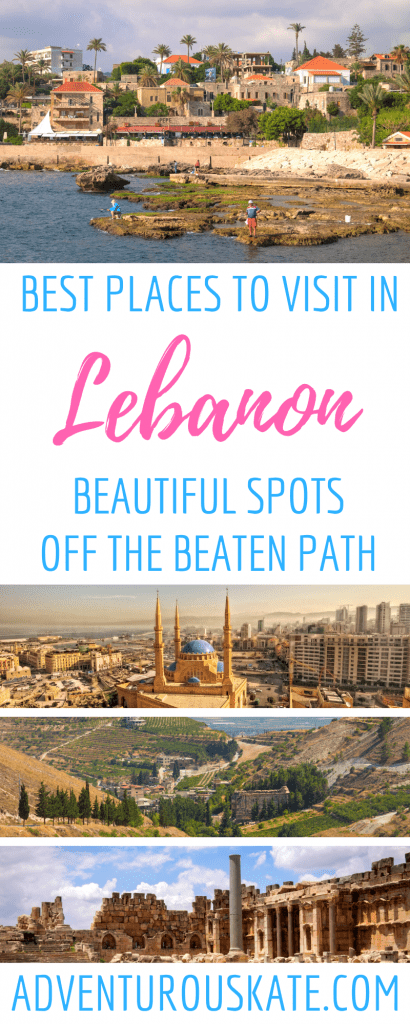
Have you been to Lebanon? What are your recommendations?

12 Incredible Places to Visit in Lebanon
Nestled along the eastern Mediterranean coast, Lebanon is a small nation—about a quarter the size of Switzerland—jam-packed with a diversity of things to see, do, and experience.
From its beaches to its ancient ruins, age-old cedar forests, bustling markets, and scenic mountains, Lebanon holds great appeal with its variety of beautiful places, many of them designated UNESCO World Heritage sites .
Pair all of this with amazing food, a friendly and hospitable population, and an agreeable climate, and Lebanon makes a great Middle East travel destination for families.

The country has a fascinating history stretching back more than 7,000 years. The Phoenicians, Greeks, Romans, Ottomans, and the French (among others) all left their marks here.
Today, the nation’s 18 different religious groups (all of which have representation in parliament) make Lebanon quite religiously diverse in comparison to other Middle Eastern nations.
Lebanon has seen its fair share of violence and upheaval over the course of its more recent history, and sectarianism still remains an ongoing issue. However, most of Lebanon remains safe and feasible for family travel, with English, French and Arabic all widely spoken.
Best Way to Get to Lebanon
Bordered by Israel to the south and Syria to the east and north, crossing overland into Lebanon can be difficult and complicated.
The best and safest way to get to Lebanon is to fly directly to Beirut’s Rafik Hariri International Airport (BEY).
As well as the national airline MEA (Middle East Airlines), BEY is serviced by airlines including Etihad, Emirates, Saudi, Air France and Lufthansa.
Best Places to Visit in Lebanon
Below are some of the top places to see in Lebanon that you’ll find to fit into a family itinerary visiting this small but vibrant country.
Lebanon’s cosmopolitan capital on the coast, Beirut, is an energetic, chaotic and dazzling feast for the senses. From the country’s recent economic crisis to the devastating Beirut port explosion of 2020, which destroyed some of the most vibrant neighbourhoods, the capital has experienced some hard times in recent years.
However, this is a city that rewards those who take the time to explore it with vibrant neighbourhoods, interesting architecture, and great restaurants. With a diverse population, Beirut is quite culturally open and welcoming to visitors.

The city’s long, wide corniche along the sea is ideal for renting bicycles or for taking a stroll to people watch or see the sunset. The famous Pigeon Rocks are a must-see. Burj Hammoud, the Armenian Quarter, is a great place to taste some local specialities while watching artisans at work and in their shops.
Visit the National Museum of Beirut which has some fascinating archaeological pieces from Lebanon’s incredibly layered history and learn more about the incredible story of how its relics were protected from 15 years of civil war.
Browse the higher-end boutiques in Saifi Village, Downtown Beirut, or visit the Souk al Tayeb in Mar Mikhael for authentic locally-sourced meals while picking up souvenirs made by local designers and artisans at its Saturday market.
You can find our complete guide to visiting Beirut with kids here .
How to get there:
Fly to Beirut’s Rafik Hariri International Airport, which is about a 20-30 minute taxi ride from Beirut’s centre. As Lebanon is a small country, Beirut makes an easy base from which to organize day trips around the rest of the country. For the most convenient travel, it’s best to rent a car or book taxis in advance.
Beirut does not have a well-organized public transport system. While there are some minibuses, their routes and schedules can be difficult to access. It’s, therefore, easier and more convenient to travel throughout Beirut by pre-booked taxi.
Companies like Allo Taxi are recommended, and apps like Uber and Bolt are widely used.
2. Harissa & the Télépherique
A stone’s throw from Beirut is the town of Jounieh, sitting north on the coast, from where you can take the Téléferique, a roughly 10-minute cable car ride up to Harissa. The ride offers some lovely views along the coast.

At the top, take a funicular up to Harissa, the location of the Our Lady of Lebanon , a large white-painted bronze statue of the Virgin Mary, arms outstretched. A site of pilgrimage for many Christians, the area offers more beautiful views, which you can take in from one of the area’s cafés. This is an easy half-day trip from Beirut.
Jounieh is about a 30-minute ride up the coast road from Beirut by car or taxi.
3. Jeita Grotto
Located about 22km from Beirut, the Jeita Grotto makes a nice day or half-day trip from the capital; it appeals to both kids and adults. The grotto itself, an impressive array of stalactites and stalagmites, is divided into the upper and lower caverns.

The upper cavern can be reached by a short cable car ride and toured on foot. The lower cavern is particularly fun as it can be toured via a boat ride through a strikingly clear and well-illuminated lake.
Apart from the grotto there are some restaurants and cafés at Jeita where you can easily grab lunch or a snack.
Jeita is about a 30-minute drive north and east of Beirut, conveniently reached by car or taxi.

4. Deir al-Qamar
About 40 km southeast of Beirut, Deir al-Qmar is a pleasant little village nestled in the lush Chouf mountains. Perched along the edge of a picturesque valley, the village’s distinctive stone houses and winding cobblestone back streets make it a lovely place to take a break from the hustle of Beirut.

The village’s expansive main square with a fountain in its centre is bordered by the Fakhreddine Mosque, which dates back to the 15 th century. Another quirky feature of the town is the Marie Baz Wax Museum, which contains 150 figures important to the history of Lebanon. Cafes and restaurants are all located within walking distance.
A visit to Deir al-Qamar also works well in tandem with a visit to the Beiteddine Palace , which is located opposite the village, across the valley.
The most direct way to get to Deir al-Qamar is to either take a taxi or rent a car. A roughly 40-50 minute drive from Beirut, Deir al-Qamar can easily be a day trip or an overnight.
5. Beiteddine Palace
The palace, one of Lebanon’s most famous attractions, was built over 30 years (1788-1818) by Emir Bashir Shihab II, Lebanon’s final ruling prince. After changing hands a couple times between the Ottomans and the French during their ruling periods, it was later made into the presidential summer residence following the country’s independence from France in 1943.

It combines Italian and Arabic architecture and makes for a couple hours of fun exploration. The palace also boasts impressive views of the valley. As with many of the historical sites in Lebanon, there is not much explanation offered on-site, so it’s best to hire a guide to gain a better understanding.
Beiteddine is an easy day trip from Beirut and also works well as an overnight or weekend trip combined with Deir Al-Qamar or the Chouf Cedars Reserve.
Beiteddine is about a 40-50 minute drive from Beirut and the easiest way to get there is to drive or take a taxi.
City Sightseeing Lebanon , which runs hop-on, hop-off bus tours in Beirut, also runs day trips to the palace from Beirut, including stops at Deir el Qamar and Shouf Cedars Reserve (more on that below!)
One of Lebanon’s gems and top sites, Byblos (or Jbeil) is an ancient coastal city. With a history that dates back 7,000 years, Byblos is one of the oldest continuously inhabited cities in the world.
Its old city, hemmed in by a stone wall built during the Crusades, is a UNESCO world heritage site . This is also where the Phoenician’s 22-letter phonetic alphabet was born, the foundation of our modern alphabet.

Byblos’s souk has plenty of places to eat and shop (mostly tourist shops). A wander through the souk can lead you down to the old port to admire the fishing boats and dine seaside.
At Byblos Archeological Site, you can see layers of history that date back to the Phoenicians and span the Greek, Roman and Crusader periods. It’s quite extensive and provides beautiful views of the sea and the coastline.
Byblos is an easy day trip from Beirut and also an ideal weekend or overnight getaway. There are also many beaches next to the port city, making it an easy place to pair with a beach escape.
Byblos is about 45 minutes north of Beirut by car. It can be great to combine with stops at Harrisa and Jeita Grotto along the way for a full day adventure north of Beirut.
Batroun is another coastal city primarily known as a summer resort destination. Just north of Byblos it also boasts a pretty harbour and a picturesque souk in its old city, which is perfect for a wander.
The town also has an ancient Phoenician wall and attractive churches like St. Stephen’s Maronite Cathedral at the old harbour and the Our Lady By the Sea Greek Orthodox Church. Batroun is also known for its citrus trees, and any visit to the old city should include a stop at the famous Hilmi’s Lemonade.

Batroun has a great variety of beaches. Although many of them are rocky, there are some beach resort options with sand beaches if that’s your preference. There are also plenty of places to eat fresh fish and other seafood along the sea, although many outside the city centre may require a short taxi ride. For scuba divers, excursions off the coast are also available.
A short trip 4km inland from Batroun is the Moussalayha Castle, said to date back to the 17 th century, which can make for a fun excursion. Its steep steps wind their way up to the top, rewarding climbers with some great views.
Batroun is about an hour’s drive from Beirut and 15 minutes north of Byblos along the coastal road.
Farther north along the coast lies Lebanon’s second-largest city, Tripoli. It has a remarkably different feel from Beirut, significantly more Arabic than the capital’s eclectic mix. Tripoli is less touristy than other cities in Lebanon, but it still has quite a bit to offer to visitors.
The Citadel of Raymond de Saint-Gilles (or Qala’at Sanjil), is a fortress that overlooks the old city and a fun place to explore plenty of hidden rooms and corners. The site also houses the Northern Lebanon & Akkar Museum , which gives an interesting historical overview of the region. To make the most of a visit here it would be best to hire a guide at the site.

Nearby, the citadel is the city’s old souk. Wander the labyrinthine passageways, and you can watch artisans working on their respective crafts and shop for anything, from authentic wooden backgammon sets to spices to tasty treats. (Tripoli is well known for its desserts.)
The port area of the city called El Mina is quieter, with many narrow alleyways and streets to explore, many of which are closed to cars. Nearby is a long promenade along the seaside.
During July and August it’s possible to do a half-day trip to the Palm Islands Nature Reserve , a group of 3 small, flat islands with UNESCO protected status due to their delicate and unique flora and fauna.
85 km north of Beirut, Tripoli is about a 1.5 hour drive from Beirut along the coast.
Connexion Transportation & Tourism offers coach bus trips between Beirut and Tripoli about 7 times daily on weekdays and 3 times per day on Saturdays and Sundays. It is best to check beforehand as their schedule changes from month to month.
Another city on Lebanon’s coast, about a 45-minute drive south of Beirut, Sidon (or Saida) has a more authentically Arab feel with a fantastic old-style souk to explore.
The arguably biggest attraction, however, is the Crusader Sea Castle (Qalaa al-Bahr), built on top of a Phoenician temple, which dates back to the 13 th century and is actually located offshore, but is connected to land by a stone causeway. A short walk from the castle is the Khan al-Franj , a caravanserai from the 17 th century, impressively restored and open to visitors.

Nearby, the Great Omari Mosque , which was originally a church for the Knights of St. John, has an impressive courtyard and is worth visiting. Sidon’s Soap Museum is also surprisingly interesting journey through the manufacturing process of the product that Sidon was once known for.
South of Beirut along the coastal road, Sidon is about a 45-minute drive from the capital.
Lebanese Transport Co also has coach buses that travel between Beirut and Saida, usually about once per hour.
10. Baalbek Archeological Site
Perhaps less known than other sites in the Middle East, Baalbek (ancient Heliopolis) holds some of the most impressive Roman ruins in the world and they are a must-see for visitors to Lebanon. About two hours northeast from Beirut by car, the ruins of the temples of Baalbek are a treasure trove to behold.
The site itself dates back to the Phoenicians. It was later taken over by the Greeks before it became part of the Roman empire where its structures were built over the course two centuries.

The Temple of Bacchus is certainly one of the most impressively intact temples you will find anywhere globally. The Temple of Jupiter was once the largest in the Roman Empire, though only six columns remain now.
While Baalbek is located near the Syrian border, in the part of the country where Hezbollah’s presence is strong, it is generally considered a safe place to visit with children and one of the best places to visit in Lebanon. Multilingual guides are readily available for hire at the site entrance, where a small entry fee is payable.
One of Lebanon’s most popular tourist sites, Baalbek can be easily reached by taxi hire or car rental. In addition, many tour operators organize day trips to the site and the surrounding area, such as the city of Zahlé or Anjar, from Beirut.
See some suggested tour operators which can be conveniently booked using Viator
11. qadisha valley.
The Qadisha Valley (Kadisha Valley) is one of the most stunning parts of Lebanon and a must-see for nature lovers and hikers. It is a natural gorge that cleaves the land in half. The valley is dominated by dramatic cliffs, scenic mountains views, and a river that snakes along its floor. There are many hiking opportunities here, and several small companies offer guided tours.

As an area inhabited by early Christians fleeing persecution, there are many monasteries cut into the rocks that can be visited today, along with some grottos, like Notre Dame de Lourdes and Qadisha Grotto. Qadisha was also home to one of Lebanon’s most famous sons, the poet Khalil Gibran whose former home and tomb, also carved into the rock, is now a museum.
The village of Bcharré sits above the valley and offers splendid views of the valley, with accommodation if you want to make this an overnight. Qadisha is also located near the Cedars of God and the Tannourine Cedar Forest Nature Reserve.
Bcharré is about a 1.5 hour drive from Beirut.
12. Cedar Forests
The cedar tree is Lebanon’s national treasure, woven into the cultural tapestry of the country’s identity. (There’s even a cedar tree on the nation’s flag.)
Unfortunately, these majestic trees, previously abundant in Lebanon and used by the Phoenicians, the Egyptians, the Romans and the Ottomans, have been whittled away over the last century due to resource exploitation and deforestation. Today, a handful of protected reserves remain, but they are a great experience for nature lovers.

The most well-known reserve is Cedars of God (Arz Al-Rab), just five km from Bcharré, which is home to some of the oldest trees in Lebanon, some dating back nearly 2,000 years. It is a small preserve but with an impressive array of trees and well-marked paths.
The Arz Tannourine Nature Reserve , south of the Qadisha Valley and around 85 km from Beirut, has several hiking trails ranging in length from between 2-4.5 km. While rockier and more demanding than the other preserves, it has some of the largest cedar trees in Lebanon and is designated a UNESCO World Heritage Site.
The Chouf Cedar Reserve , a protected Biosphere Reserve by UNESCO, is Lebanon’s largest nature reserve and extends over three cedar forests (Barouk, Masser Al-Chouf and Ain Zhalta). The Chouf Cedar Society offers different activities like hiking, bird watching, and mountain biking within the reserve. The reserve features trails for all levels, including a specific 300-meter trail for people with physical disabilities.
The most convenient and reliable way to access any of these three reserves is by car. From Bcharré, the Cedars of God can easily be reached by a short drive or taxi ride.
The Arz Tannourine Nature Reserve can be reached by car or taxi from Beirut.
The Chouf Cedar Reserve is about an hour’s drive southeast from Beirut.
More on Visiting Lebanon
Don’t miss our further family-friendly guides to exploring Lebanon with kids:
- Best of Beirut with Kids
- Review of the Gefinor Rotana – family-friendly hotel apartments in the heart of Beirut
Save this to Pinterest for Later

Take me back to the Lebanon with Kids homepage
This page may contain affiliate links to our preferred suppliers. We can earn a qualifying commission on bookings and purchases made. You can see our disclosures, privacy policy and website terms of use here .
The Family Travel in the Middle East team of travel writers are all parents based in the Middle East, sharing first hand experiences and reviews from across the region to help you plan your next family adventure.
Find me on: Web | Twitter | Instagram | Facebook
You may also enjoy:
25 best things to do in beirut with …, beyond beirut: 8 best day trips from beirut, when is the best time to visit …, what to wear in lebanon: dress code ….
Very informative, beautiful and nostalgic.
Marvelous presentation. Very informative
Good morning, i think you forgot jezzine , Tyr, maghdouche ( south of sidon), chateau Beaufort near nabatieh…..
All great places to visit too

Ultimate Lebanon Travel Guide
The ultimate travel guide to lebanon.
Last Updated: 22 Feb 2023.
This guide will tell you everything you need to know for visiting Lebanon during the current crisis, updated regularly with the latest pandemic travel restrictions and for changes caused by Lebanon’s current crises. I have lived in Lebanon for the past three years ( narrowly surviving the 2020 port explosion ) and have visited almost every inch of this beautiful and crazy country.
Lebanon was a beautiful country with vibrant cities and beautiful ancient historic sites before the multiple crises that began in 2019. And actually, it still is. With a bit of planning, it’s still possible to have an amazing trip here, despite the political crisis, economic crisis, electricity shortages, frequent protests and the after effects of the port explosion.
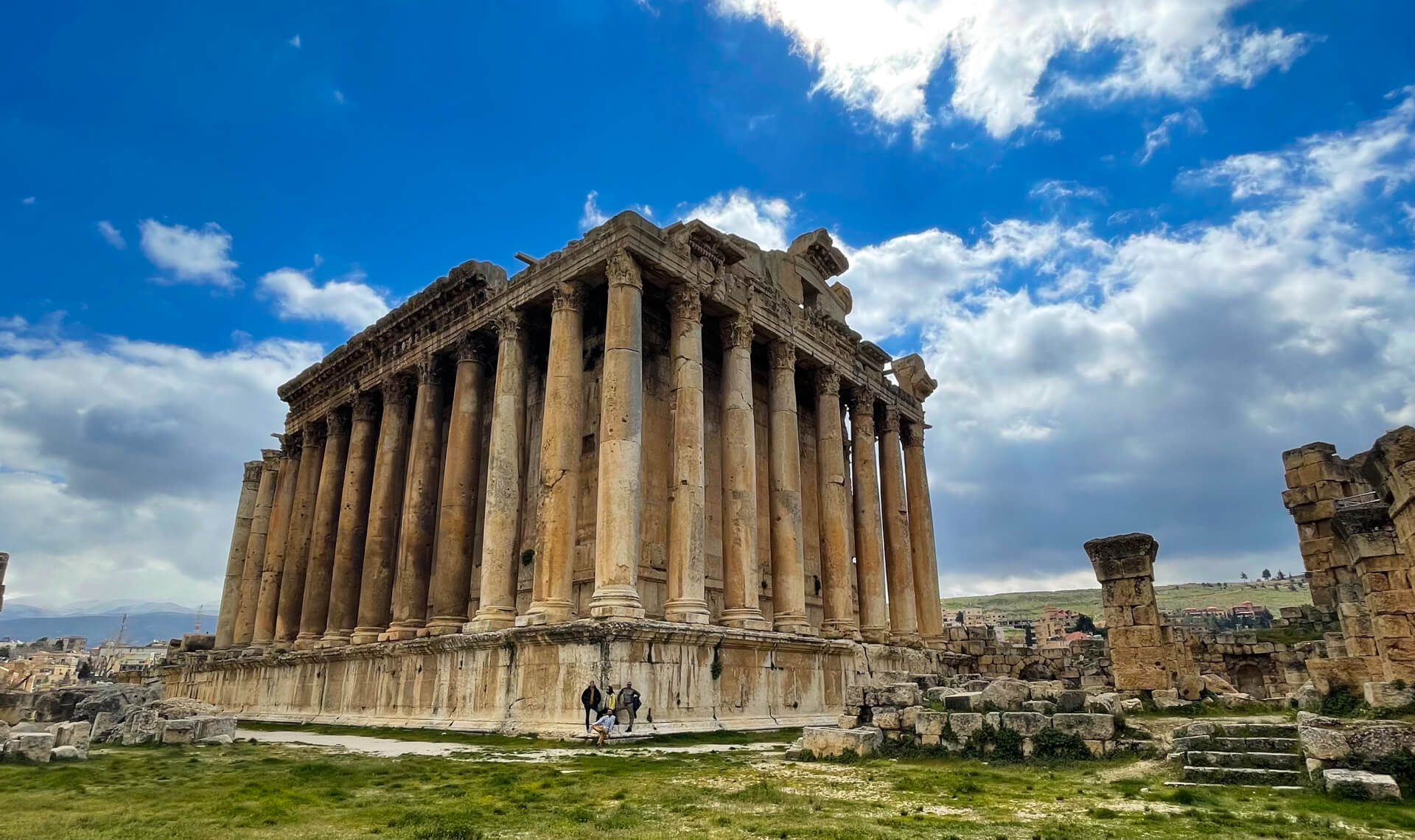
The 2,200 year old Roman temple of Bacchus, the wine god, in Baalbek.
Places to Visit
One of the best things about Lebanon is that almost any area can be visited as a day trip from Beirut. You can choose to do the below as a series of day trips or stay overnight in different cities as you travel. Staying overnight reduces the time spent travelling, but also means you have to take everything with you as you travel.
In my opinion, the real must see place in Beirut are the Raouche (Pigeon) rocks, which are a beautiful place to watch the sunset. If you’re feeling adventurous, take the path down the cliff from the viewing point next to the Bay Rock Cafe (opposite Starbucks) and sit on the rocks opposite Raouche. From there, not only do you get a beautiful view of the rocks themselves, but also of the sun setting over the Mediterranean Sea. It’s a great place to enjoy a couple of beers or a bottle of wine.
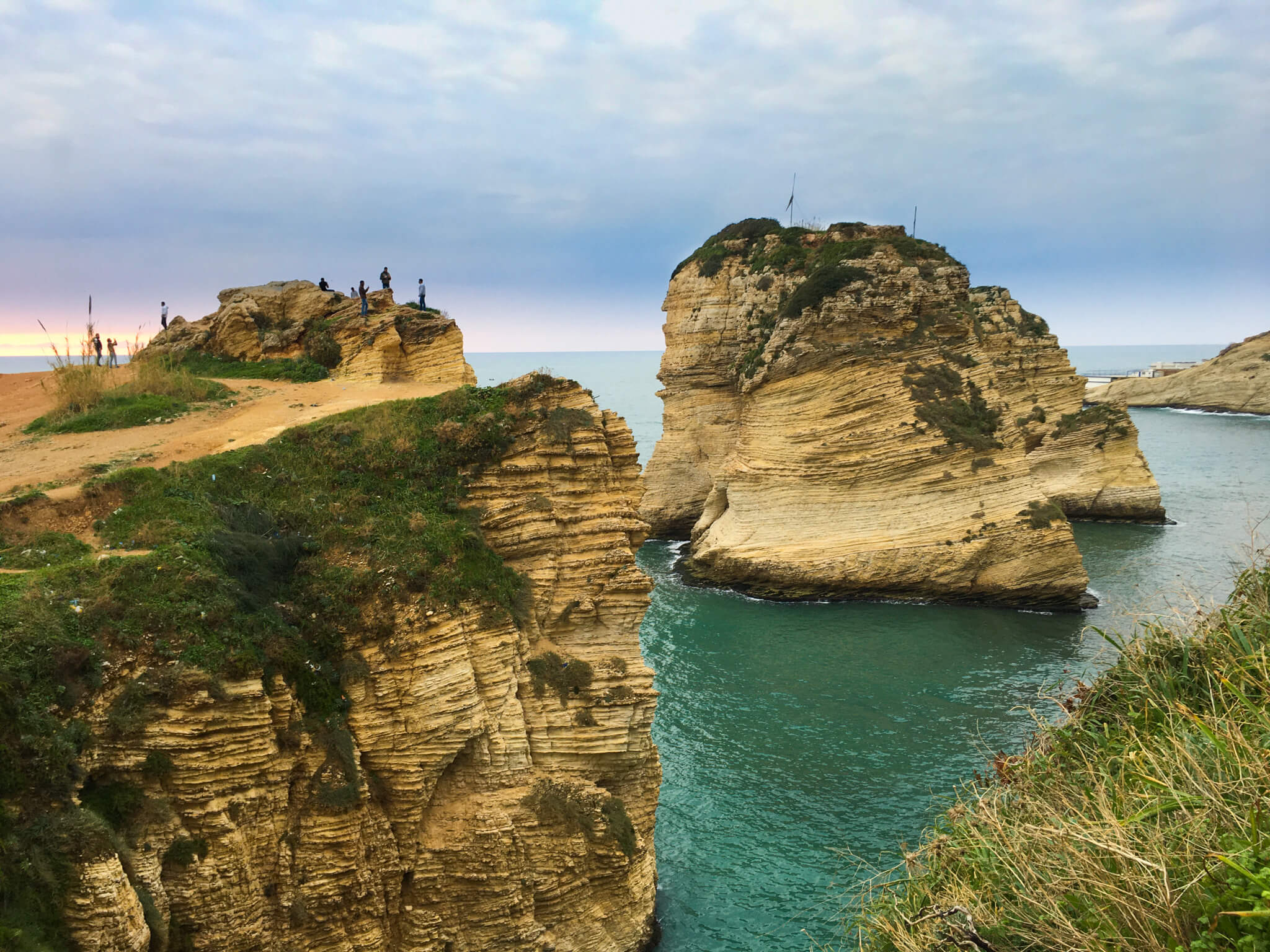
The best place to view Pigeon Rocks (left, with people gathered). Also a great location to take a bottle of wine for a romantic sunset date.
One of the joys of Beirut is just strolling through its vibrant neighbourhoods. I particularly recommend Hamra, which is an interesting mix of old and new, with boutique shops, bars and restaurants. Gemayze and Mar Mikhael, the main bar district, are also gradually coming back to life after the port explosion destroyed them in 2020. Zaytuna Bay is a chance to see the more upmarket side of Beirut.
The centre of the Beirut Souks area, including the iconic clock tower in Place de L’Etoile and the Roman baths, has reopened after being cordoned off by the military due to protests for the past two and a half years. Until recently, it was still possible to enter the ‘egg,’ an abandoned cinema building purportedly left to remind people of the atrocities of the civil war (it’s full of bullet holes), but unfortunately the authorities have now built a fence around it to keep people out.
The National Museum of Beirut reopened to tourists in summer 2021 and is currently open daily. Be sure not to miss the ‘mummy room’ on the basement level, which houses three mummies from the Qadisha Valley. It’s a little temperature-controlled room in a corner and easy to miss if you don’t know it’s there.
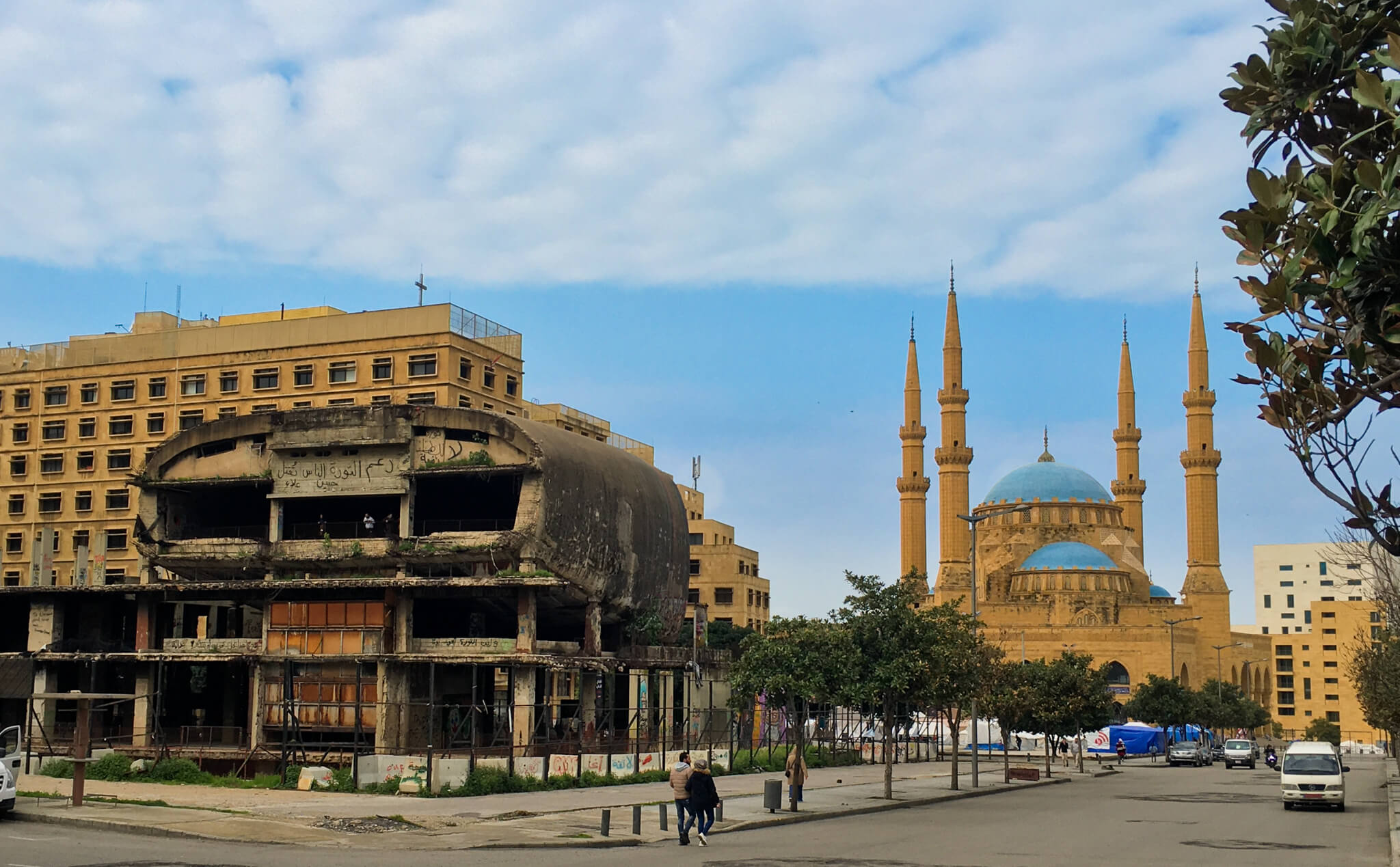
The Beirut ‘egg’ (abandoned cinema) and the main mosque.
The Jeita Grottoes & Byblos
The Jeita Grottoes, located slightly to the north of Beirut, are spectacular and conveniently located not far from the coastal highway up to Byblos, making the two a convenient day trip. You can also choose to stay overnight in Byblos before heading further up north.
At the Jeita Grottoes, you have to leave your phone in a little locker near the entrance, as they don’t allow photographs. It doesn’t look very secure, but I’ve never heard of anyone having problems.
The main attraction of Byblos is wandering the beautiful historic centre, with its ancient Mediterranean architecture, beautiful flowers growing up the walls and in some cases across nets over the streets and cute boutiques, bars and restaurants. There’s also an ancient citadel that’s worth checking out and the picturesque little harbour.
If you’re looking for something a little adventurous, walk along the right hand wall of the harbour (as you’re facing out to sea) until you reach the ancient tower at the harbour entrance. From here, with a bit of care, you can climb up to the top of the tower for amazing sunset views, often without any other people.
If the beach is more your thing, slightly north of the harbour you’ll find a pebble beach that’s great for swimming in the summer (approximately May to October). Finally, Byblos is home to Fenicia restaurant, in my opinion one of the best restaurants in the whole of Lebanon.
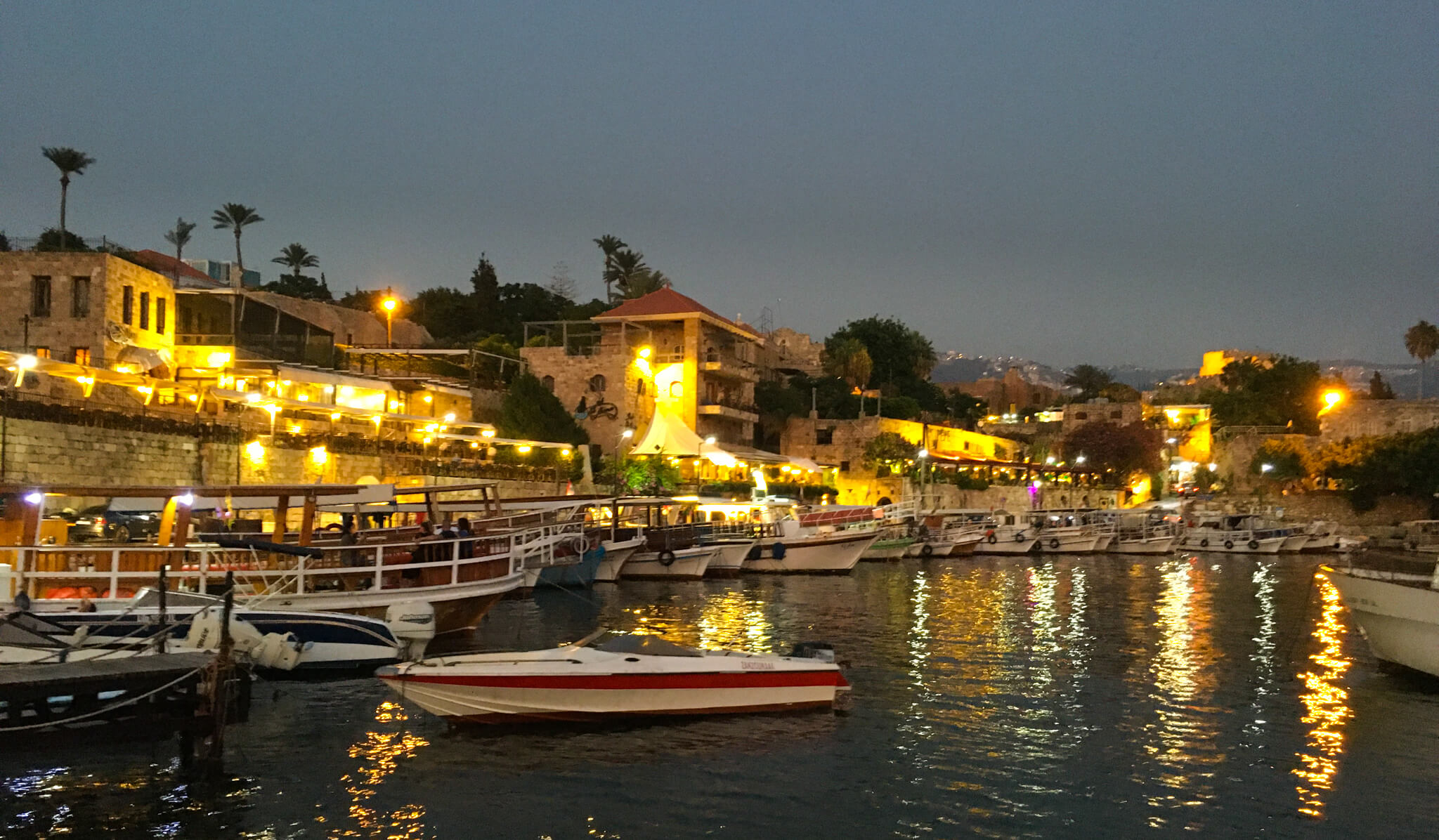
Byblos harbour is beautiful day and night.
A pretty seaside town in the north of Lebanon, Batroun is nice for an afternoon to wander it’s old town, which is basically a less touristy version of Byblos. In the Batroun area there are several off-the-beaten-track places that are worth checking out if you have time:
- The Msailha fort, just up the main highway from the city, is small but impressive, standing alone on a huge rock (it’s also free to enter). The location is here on Google Maps .
- The Rock of Hamat, a giant rock painted in the colours of the Lebanese flag, on the edge of the old cliffside road from Batroun to Chekka. The location is here on Google Maps .
- The cliffside walk though the old road tunnel to the north of the cliffside road from Batroun to Chekka. Go to coordinates 34.311459, 35.681865 ( here on Google Maps ) and then take the footpath on the left hand side of the road before the current tunnel entrance.
- For the more adventurous travellers, the disused railway tunnel. To reach the entrance, after the current road tunnel walk about 100m then go down the footpath on the left hand side of the road. Two thirds of the way down, there’s a little bank on the left that you can scramble up (about 2-3m). The entrance to the tunnel is at the top of this bank.
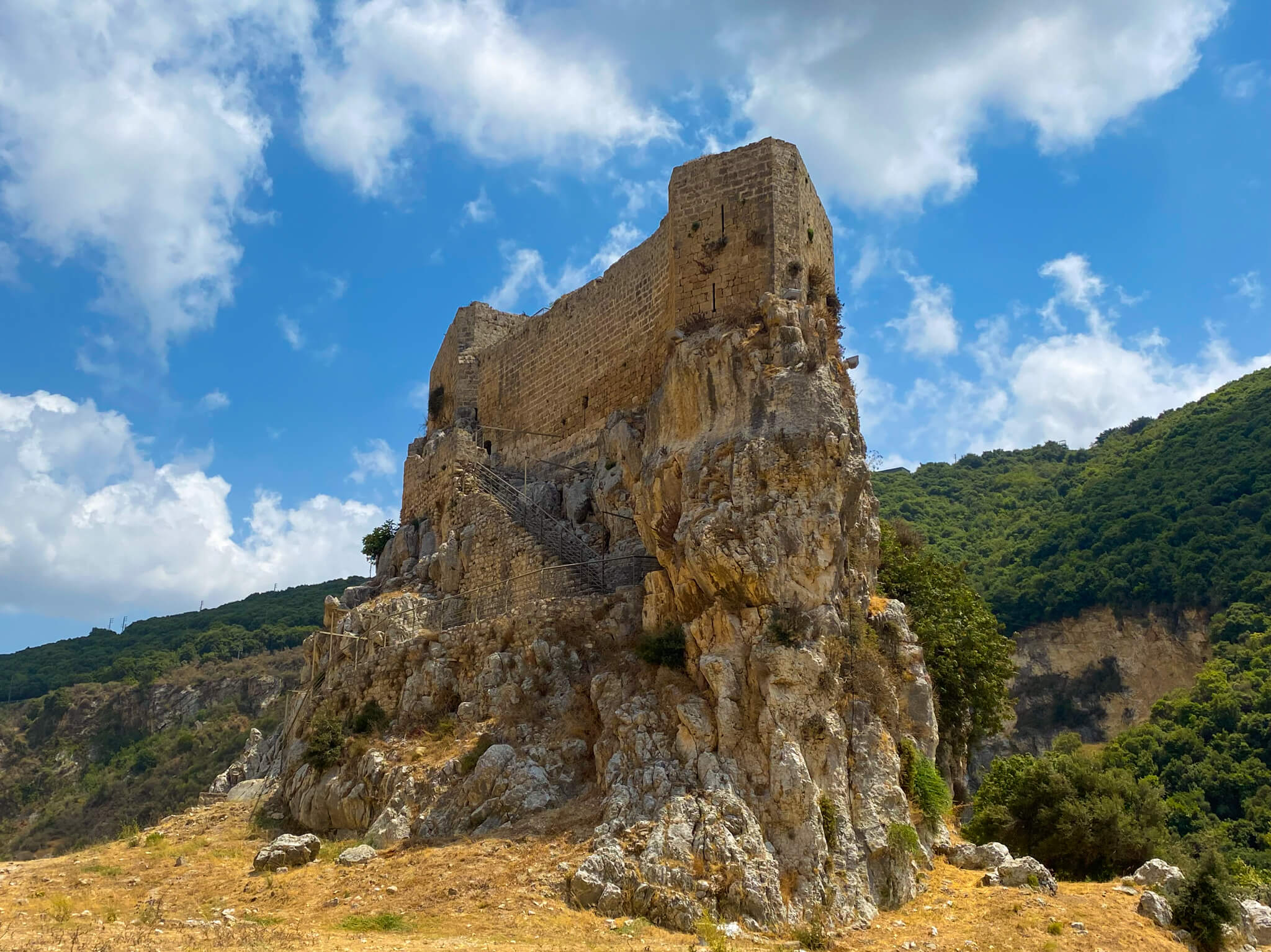
The spectacular Mseilha Fort, just outside of Batroun.
Much of the time, Lebanon doesn’t feel like the Middle East. There are no deserts, no camels (apart from a couple in Chouf that were imported from Saudi just to entertain tourists) and many of the main cities, including Beirut, Byblos and Batroun, have more of a Mediterranean feel than a Middle Eastern feel. And then you reach Tripoli. Check out the old souk (market) and the citadel. The souk seems to close around sunset at the moment, possibly due to a lack of power after dark.
Tripoli’s Corniche is, in my opinion, not as nice as Beirut’s, but Al Mina, the old town, is quaint and has several nice restaurants, including The Sailor Woman, my favourite seafood restaurant in Lebanon. If you have plenty of time, you can also catch a boat from the Corniche to Palm Island, which has the biggest sandy beach in the north of Lebanon. It’s a nice place to chill out and swim in the sea.
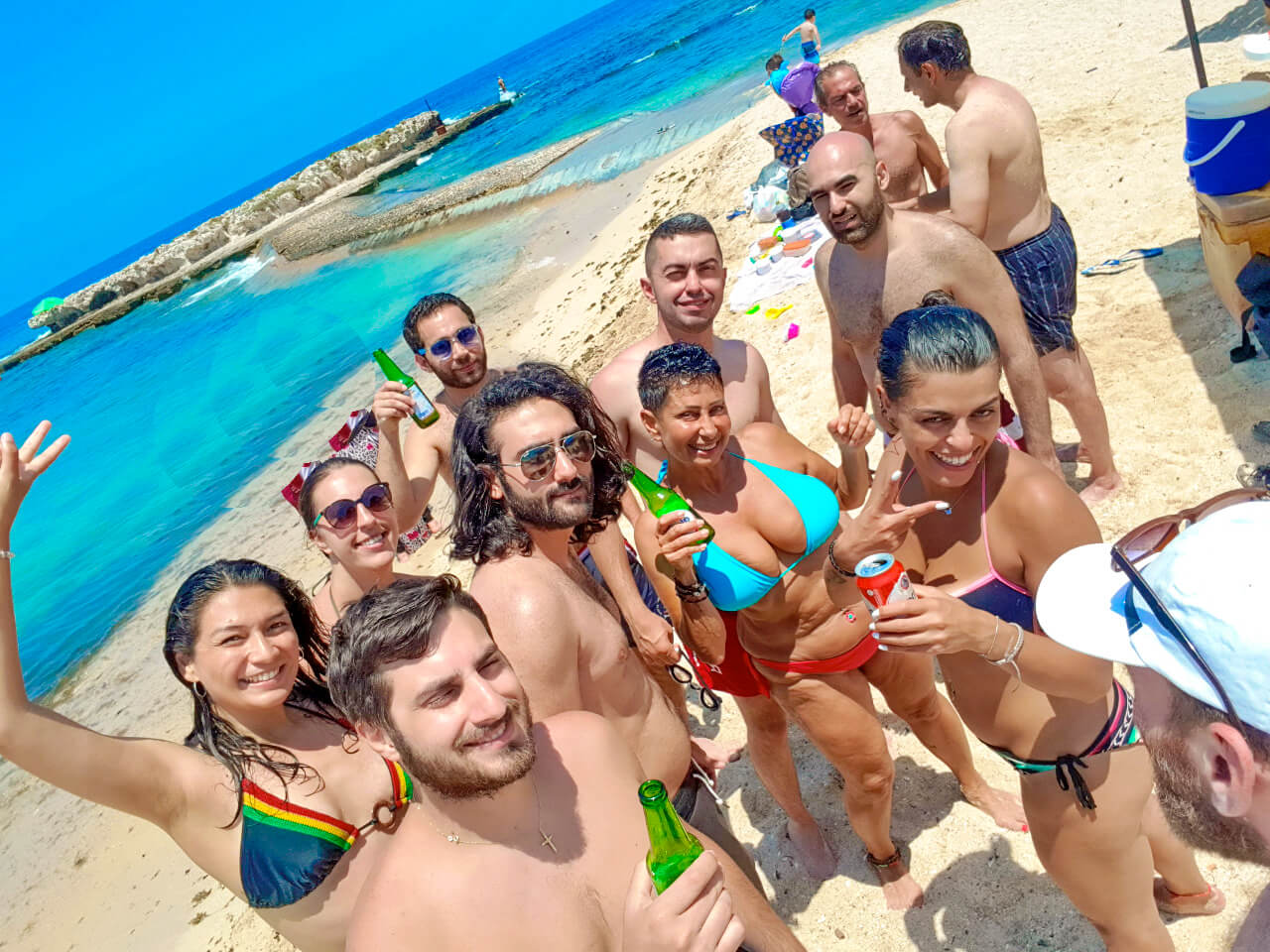
Beach Day on Rabbit Island with a group of crazy Couchsurfers.
Anjar & Baalbek
The Roman ruins at Baalbek are some of the most spectacular in the world, especially the enormous temple of Bacchus, the wine God (gotta love Roman priorities). That’s why you should visit Anjar first! Anjar is beautiful and spectacular, but after Baalbek, it will seem small and insignificant in comparison. Don’t forget to try sfeeha, the local delicacy, while you’re in Baalbek. Baalbek is also home to the Sayyida Khawla shrine, one of the most beautiful and historic Shia shrines in Lebanon.
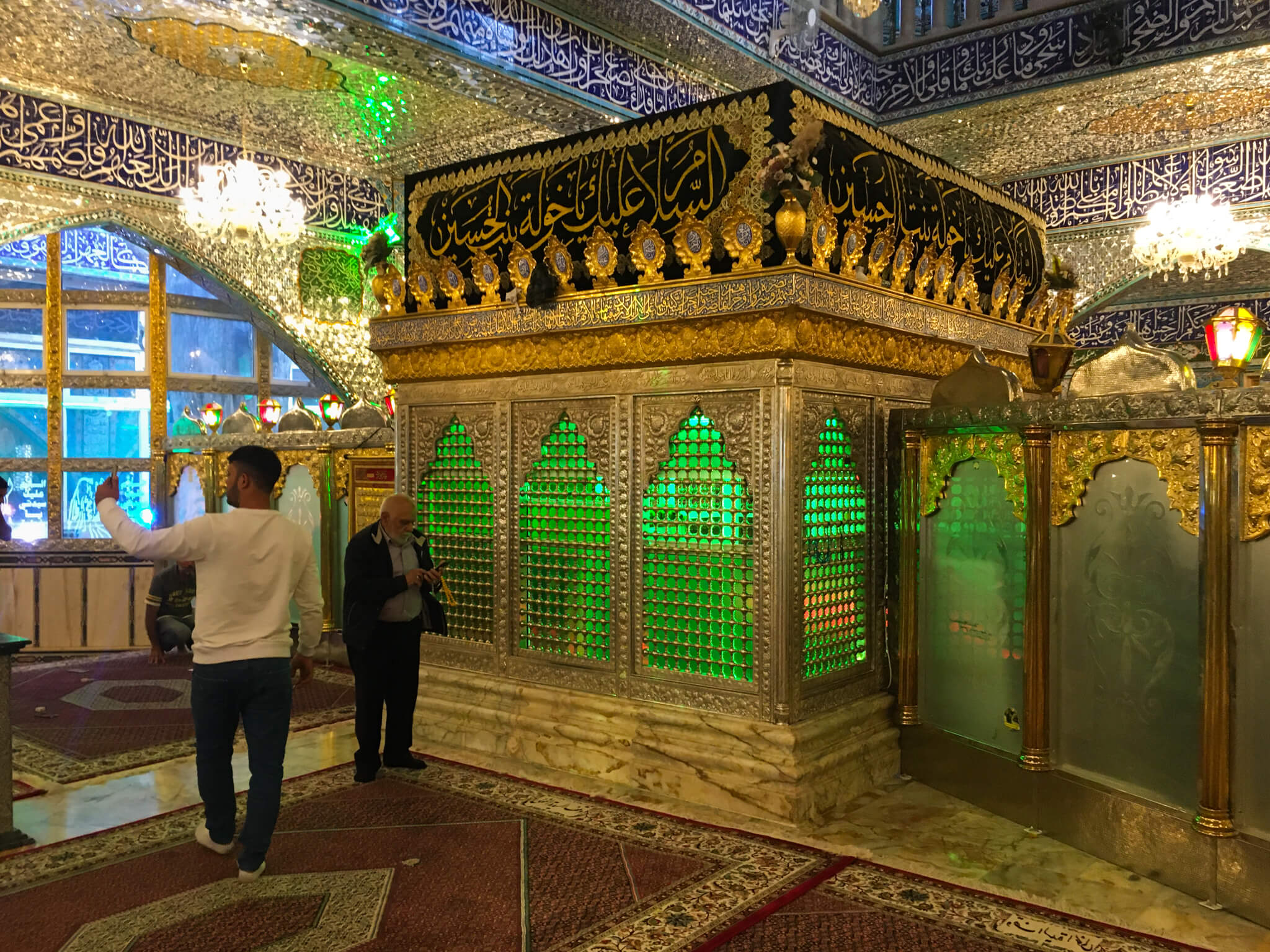
Local believe that Khawla, daughter of Imam al-Husayn, is buried in this tomb, although historians aren’t sure that Imam al-Husayn even had a daughter.
Baalbek has a bad reputation for safety, but this generally refers to other parts of Baalbek governorate, not Baalbek city. If you’re concerned about safety, just don’t go north of the city (and definitely keep away from Arsel, which has a justifiably rough reputation).
Saida & Mleeta
Saida has probably the most beautiful souk (market) in the whole of Lebanon, full of ancient stone archways and local people hawking traditional wares (and delicious Arab sweets). There’s also the small but worth-a-visit Dabane Palace Museum, a soap museum and the Hammam el-Sheikh traditional bathhouse. The seafort on the waterfront is also worth a visit (although more spectacular from the outside than inside). If you want a beer, go to Resthouse, a restaurant next to the seafort that is the only place in Saida allowed to sell alcohol. Its garden is also a great place to take photos of the seafort.
Mleeta is a tiny village in the mountains that is home to probably the most well-maintained museum in Lebanon – The Hezbollah Museum. Here, a free English-speaking guide will take you around and tell you about the various wars against Israel and Hezbollah’s role in protecting and driving out the enemy. Whatever your political views, the museum is very well done and worth a visit. It’s located about a 40-minute drive up into the mountains above Saida.
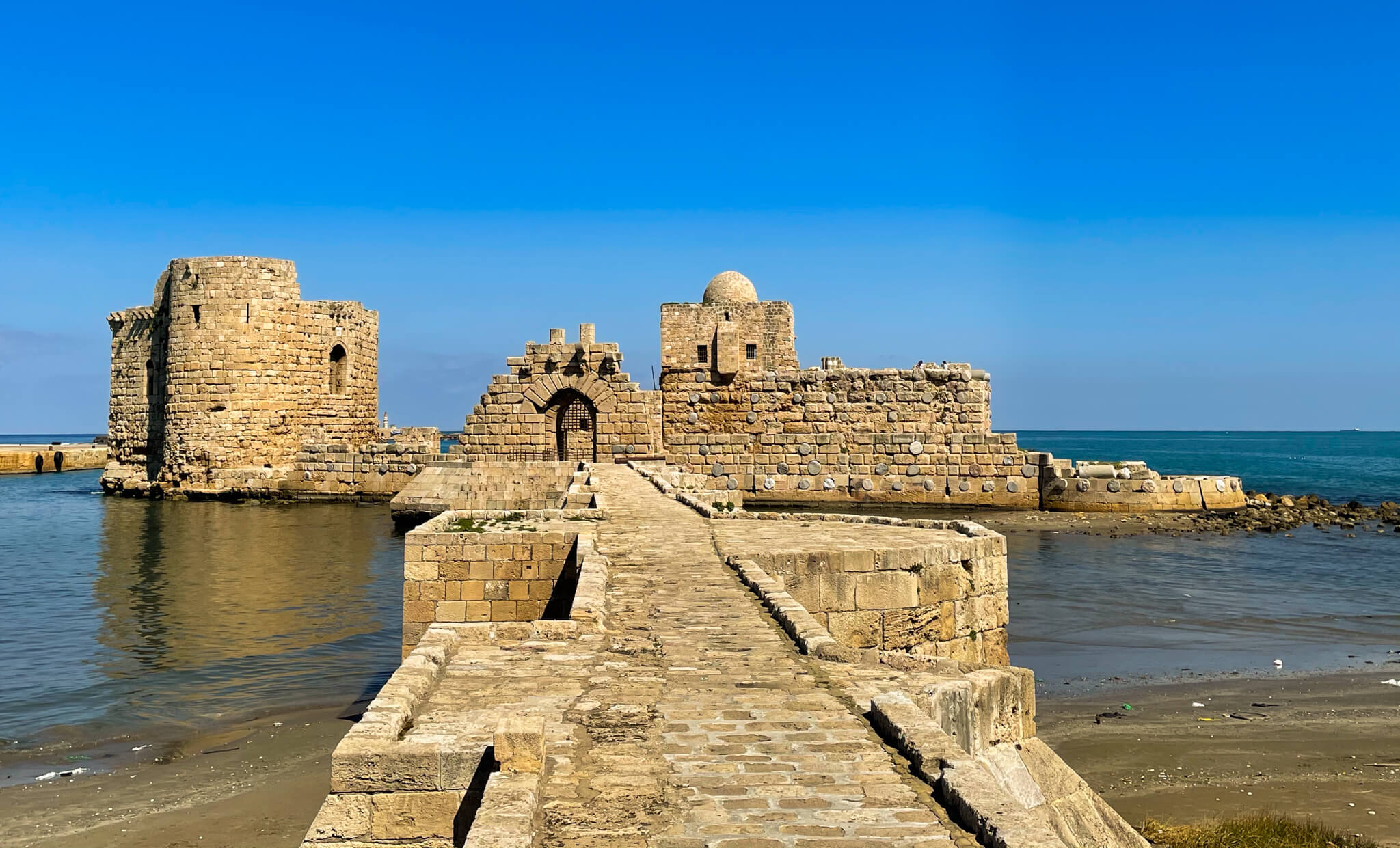
The Saida seafort – a castle in the sea.
One of the oldest cities in the world, Tyre is home to an ancient Roman Hippodrome. The site itself is a bit rundown now, but the ruins are still impressive. There’s also a pretty little old town with less tourists than other cities in Lebanon and a colourful harbour full of fishing boats. The restaurants next to it are worth checking out for some fresh seafood too. To the south of the city is Lebanon’s longest sandy beach. This was affected by the oil spill off Israel in 2021, but is now clean again and safe for swimming.
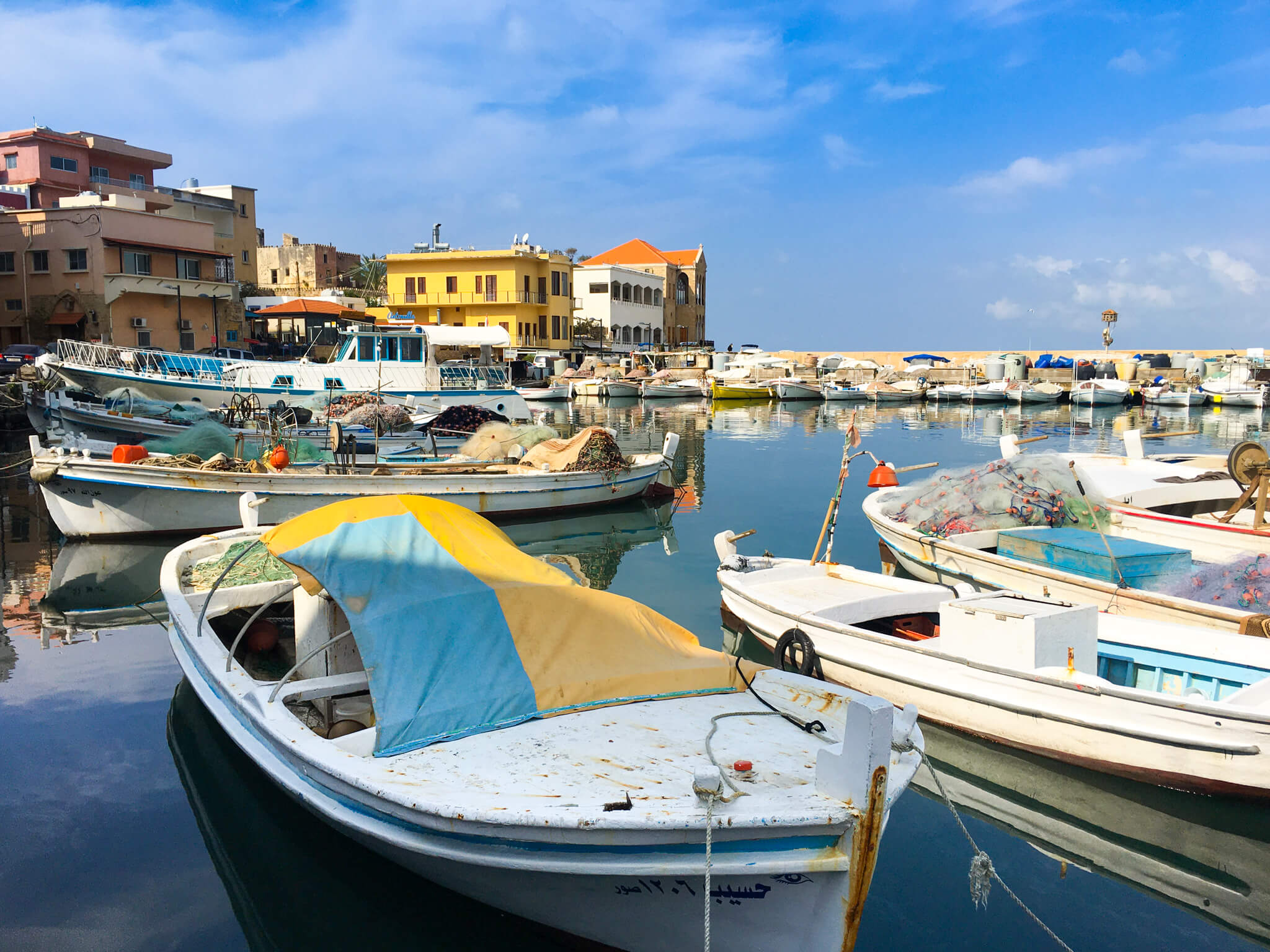
Tyre’s colourful harbour – a great place to eat fresh seafood.
The Northern Mountains
There are many beautiful places to visit in the northern mountains of Lebanon, aside from just the pleasure of driving through the local villages and the often breathtaking scenery. The three I would recommend for visitors are:
- The 2,000 year old olive trees in Bchaleeh, which are supposedly the oldest in the world. Local legends say that the olive branch from the story of Noah’s Ark came from one of these trees, but you can make up your own mind. The location is clearly marked on Google Maps .
- The viewpoint at Aqoura. Climb the rocky hill opposite the church for spectacular 360 degree views). The start point is at Saydat Al Qarn church ( here on Google Maps ).
- The Batarra Waterfall. This 255m (837 ft) waterfall, which passes through several layers of Jurassic limestone rock, is definitely the most beautiful in Lebanon. It’s best visited in the spring when there is plenty of meltwater. I went in early August once and there was no water at all.
- The Cedars of God. At possibly 2,500 years old, the Cedars of God are some of the oldest cedar trees in the world and a UNESCO world heritage site to boot.
You will need a car to reach these locations, or you could try hitchhiking.
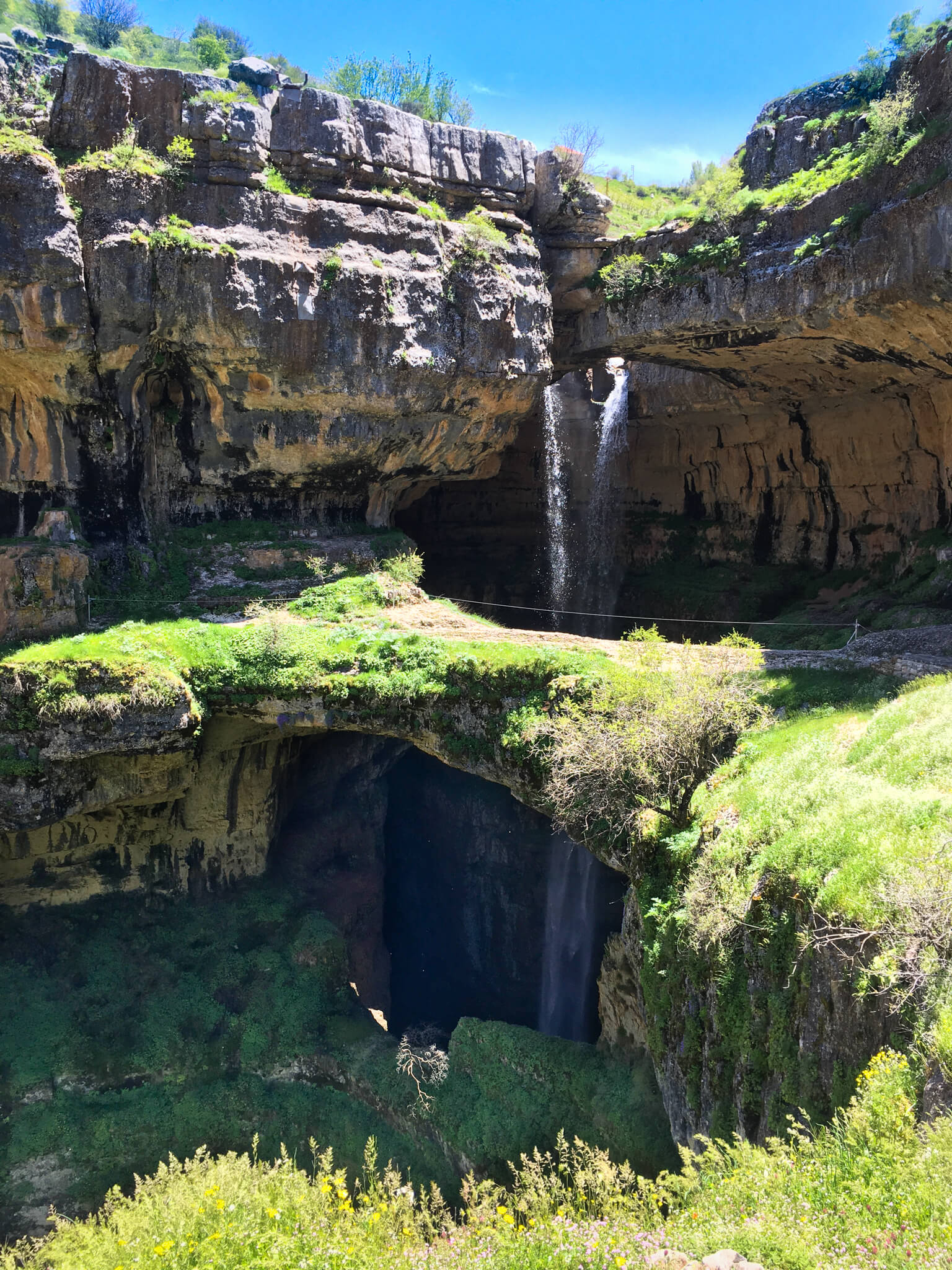
The 255m Batarra waterfall. Try throwing a stone down into the chasm below and see how long it takes before you near it hit the bottom.
The Chouf Region
Home to the majority of the Druze population of Lebanon, the Chouf region also contains the country’s largest remaining cedar forests at the Chouf Biosphere Reserve. This is a great place to do some hiking with trails from 5 minutes to a full day.
The region also contains the Bettadine palace, which was built by the Ottomans, and the Moussa Palace, which was built over several decades by a crazy Lebanese man who wanted his own palace. The latter contains a vast collection of ancient weapons and some very well done scenes from traditional Lebanese life, created with models animated in various ways. I love the concept that the guy just suddenly decided to build himself a palace!
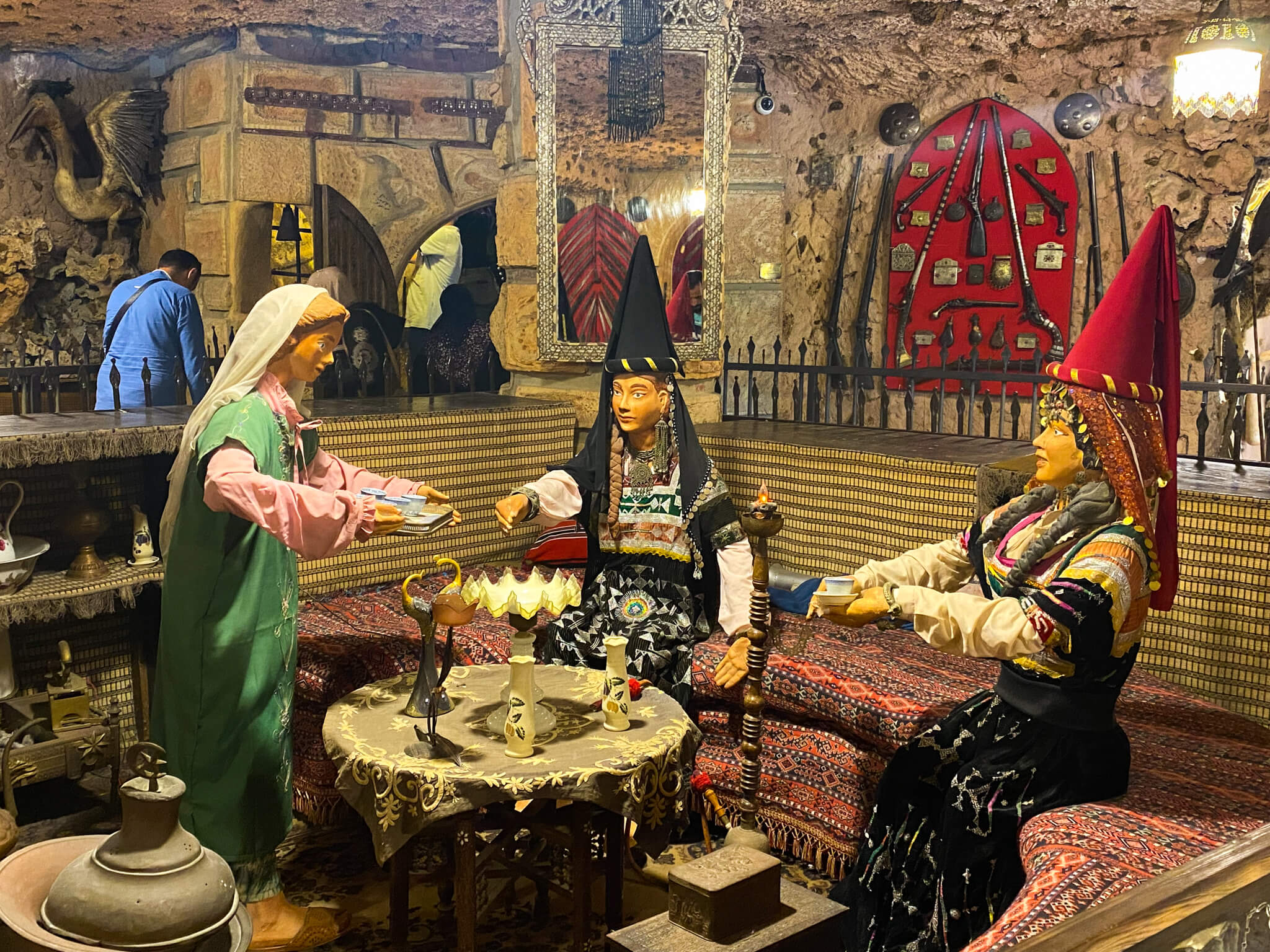
A traditional Lebanese scene in the Moussa Palace museum.
The Christian city of Jounieh used to be where Arabs from stricter countries in the Middle East went to party and unwind, as evidenced by the strip of hotels on the coast that look like they’ve seen better days. Even now, the city is still home to Lebanon’s only casino, Casino du Liban, and a bunch of ‘super night clubs’ – basically stripclubs.
For tourists not looking for such things, the main attraction is Harissa, the hill behind the city with a statue of Our Lady of Lebanon on the top. There is also a very nice (but steep) hike up from the city below through the dense forest with occasional views across the bay. The start of the path is at coordinates 33.997710, 35.650976 ( here on Google Maps ). Recommended for sunset.
Hermel and Akkar
The far north of Lebanon is known as one of its most dangerous areas, but most reports are highly exaggerated. The main attraction here is the 2,500 year-old Pyramid of Hermel, which I visited in 2021 . Even now, no one’s quite sure who built it! Worth a visit if you have the time, but its location in one of the most remote parts of the country means that it won’t fit many peoples’ itineraries.
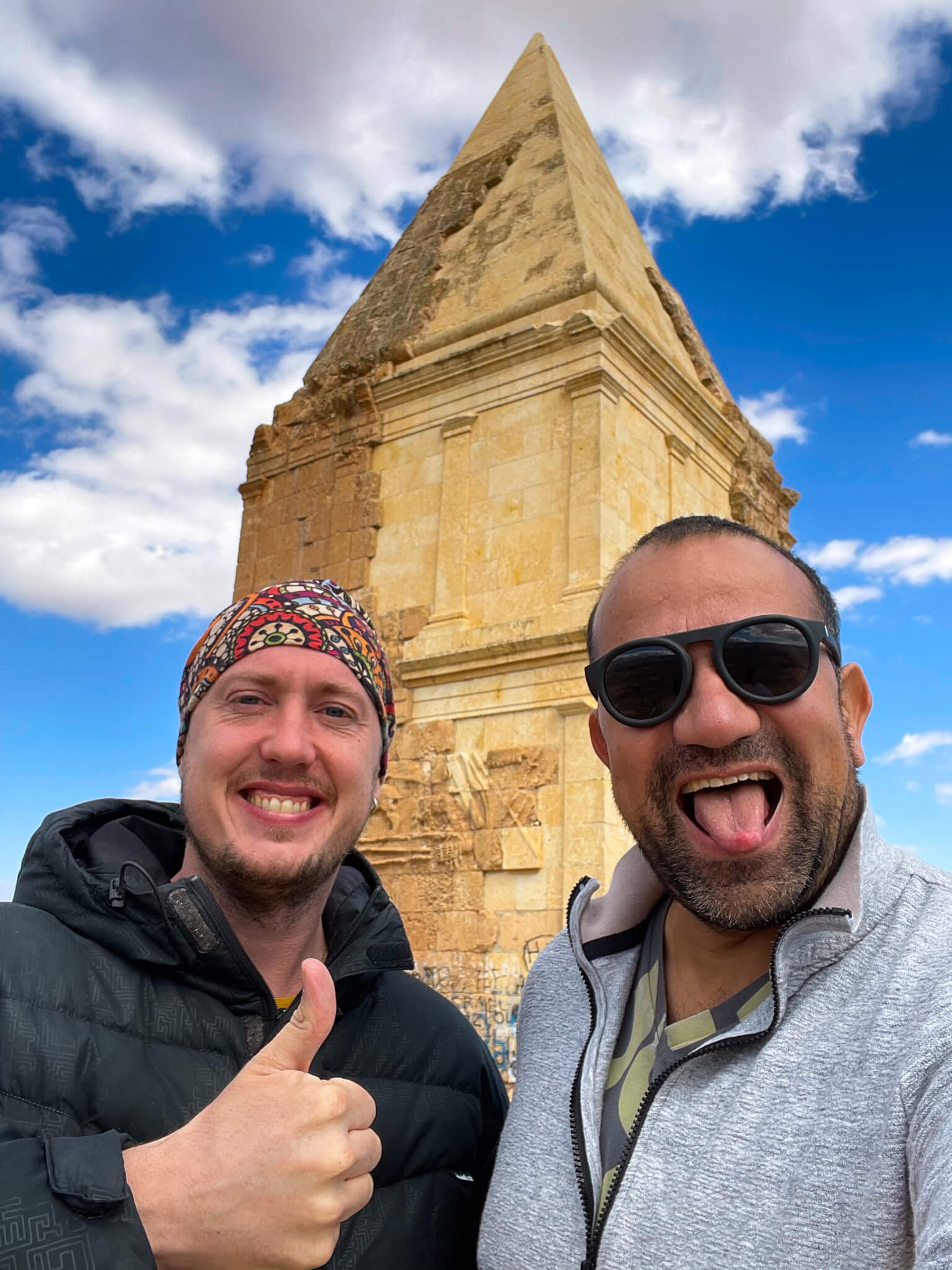
Nobody is sure why the Pyramid of Hermel was built.
The Far South (UNIFIL-Controlled Area)
The far south of Lebanon is interesting, because you can drive along beside the border wall with Israel, which is covered in security cameras and, in some places, graffiti similar to that seen in the Palestinian territories. The coast at Naqoura also have the cleanest waters in Lebanon for swimming, thanks to the low population density and proximity to Israel, which has better sewage treatment facilities than Lebanon.
The downside is that this area is under control of the UN peacekeeping force (UNIFIL) and foreigners need a permit to enter it. See below the section on Entering the UNIFIL-Controlled Area for details of how to obtain the permit.
This picturesque little village in the mountains near Saida is often overlooked by travellers, which is a pity, as it boasts one of Lebanon’s most spectacular waterfalls. For hikers, the village is surrounded by Lebanon’s largest pine forest. For those who want something darker, there’re also some interesting abandoned buildings leftover from Lebanon’s war of resistance against Israel to explore. Read more in my dedicated Jezzine guide here.
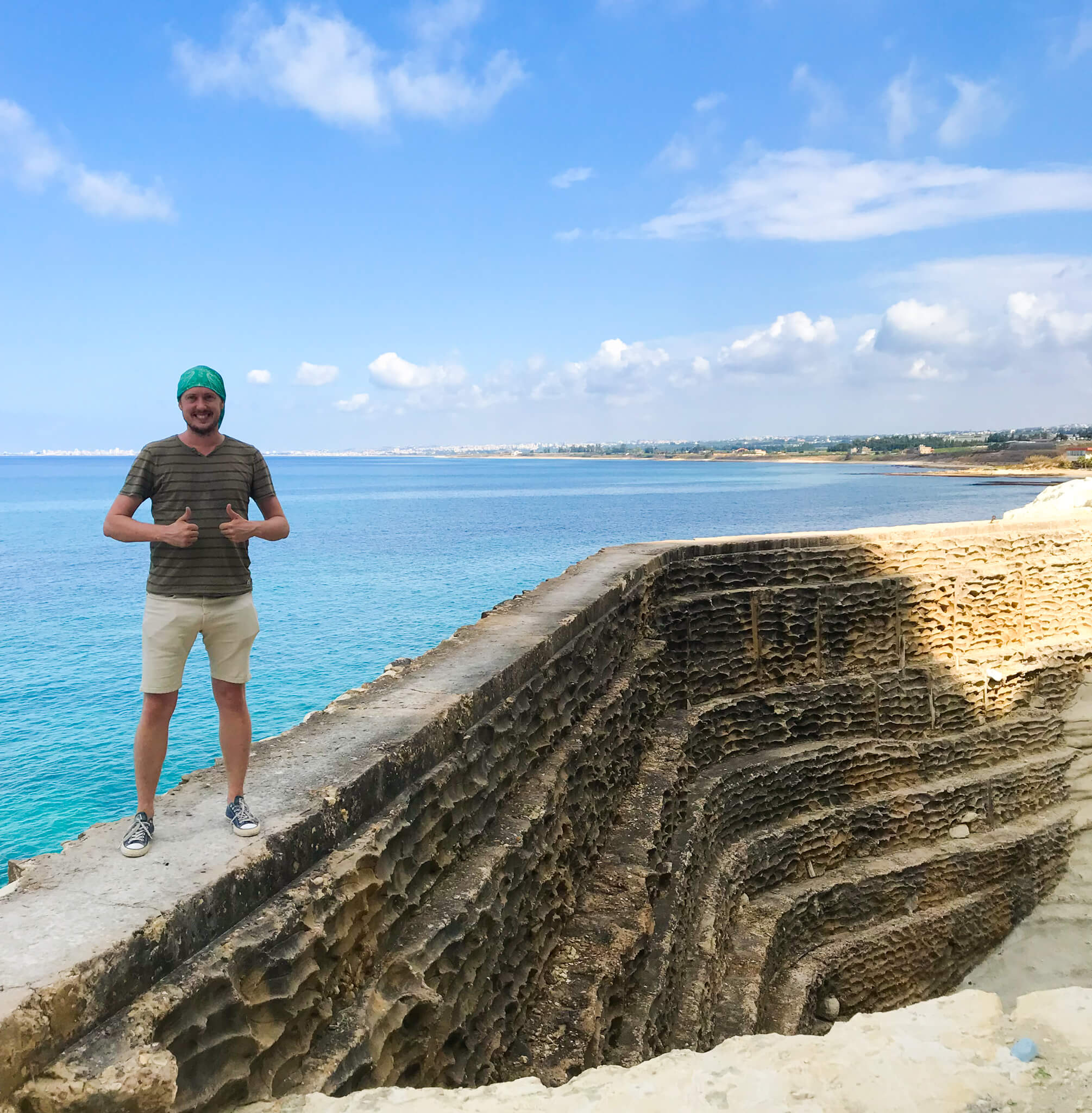
The sea wall south of Naqoura
Suggested Itineraries
Pick and choose where to visit from the places above. However, my suggestions are as follows:
Two-day Trip: Beirut – Jeita Grottoes & Byblos . This is way too short, but spend one day wandering Beirut, watch the sunset at Raouche in the evening and then head to the Jeita Grottoes and Byblos on day 2.
Four-day Trip: Beirut – Jeita Grottoes & Byblos – Saida & Mleeta – Anjar & Baalbek. Best to base yourself in Beirut for this itinerary, which covers the major highlights of the country.
One-week (7 day) Trip: Beirut – Jeita Grottoes & Byblos – Tripoli – The Northern Mountains – Saida & Mleeta – The Southern Mountains – Anjar & Baalbek. This itinerary includes most of the highlights of the country with a variety of cities, ancient ruins and nature.
Two-week (14 day) Trip or Longe r : Beirut – Jeita Grottoes – Jounieh – Byblos – Batroun – Tripoli – The Northern Mountains – Anjar & Baalbek – Saida & Mleeta – Jezzine – The Southern Mountains – Tyre . You could easily spend more than a day in many of the places listed here, making the trip more relaxing and enjoyable. Alternatively, add in some hiking or visit some random villages in the mountains, many of which are beautiful.
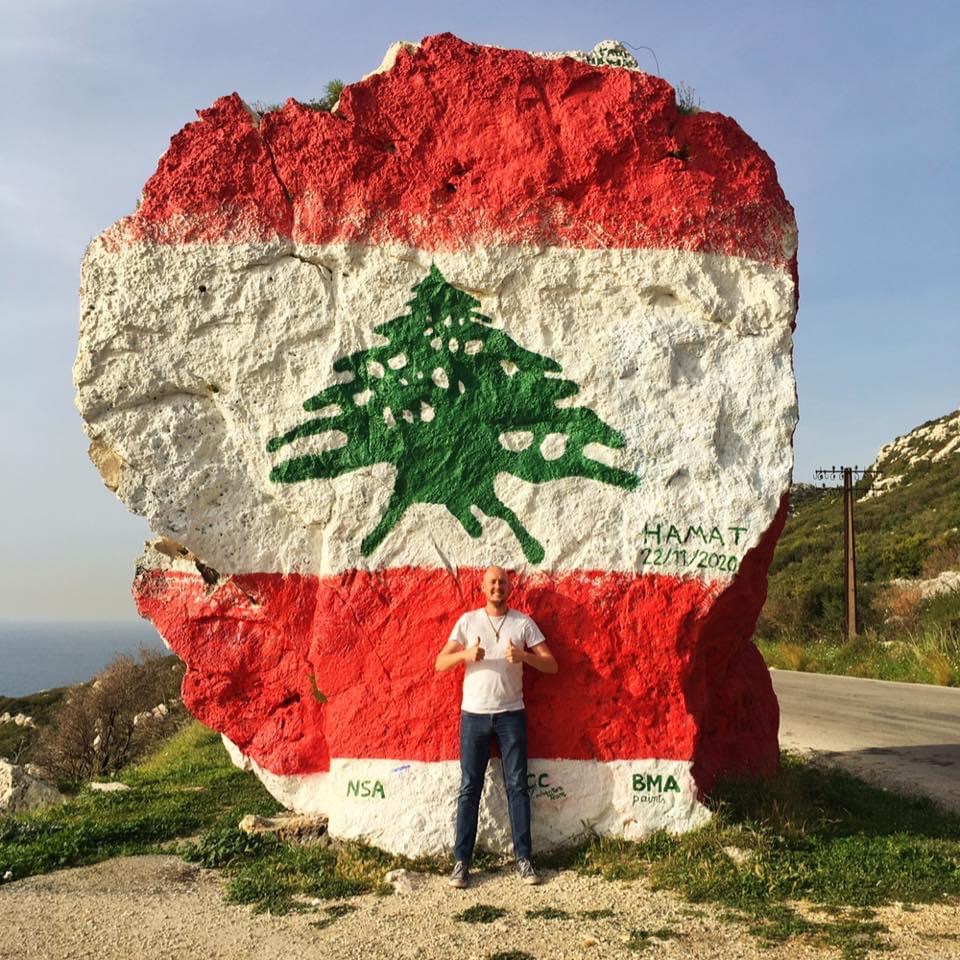
If you have the time, check out the Rock of Hamat near Batroun for a very Instagrammable pic.
I had no idea until I moved to Lebanon, but the country has some amazing hikes. My personal favourites are the following:
- Qornet As Sawda (Black Peak) – The highest mountain in not only Lebanon, but the entire Levant region, and 5th highest in the Middle East, at 3,088m. The landscape is like nothing else in the country, as barren as the moon. It gets very cold near the top and is covered in snow from around November to May, so it’s best to avoid these times. The hike starts from the Cedars ski resort near the Cedars of God and the first two hours follow the ski lifts. The total hiking time is about 8 hours and it’s long, but not difficult.
- The Chouf Biosphere Reserve – The largest cedar forests in Lebanon make for some beautiful hiking. The reserve is clearly marked on Google Maps and is suitable for short or long hikes.
- The Qadisha Valley – Possibly the most beautiful place in the whole of Lebanon, a Colombian monk lives in a tiny monastery perched high on a cliff above the valley. The path to the monastery is narrow with beautiful views and not particularly difficult, although the monk himself has stopped meeting visitors recently, due to the risk of Covid, as he is very old.
- Jabel Moussa Biosphere Reserve – There are many hikes here, from short 3-5km jaunts to 20km marathons and over steep mountain paths. The highlight is Chouwen lake, which is a beautiful turquoise blue. It’s also possible to swim in it during the summer.
- Bkassine Pine Forest – The largest pine forest in Lebanon is riddled with beautiful hiking trails. Check out my Jezzine guide for details .
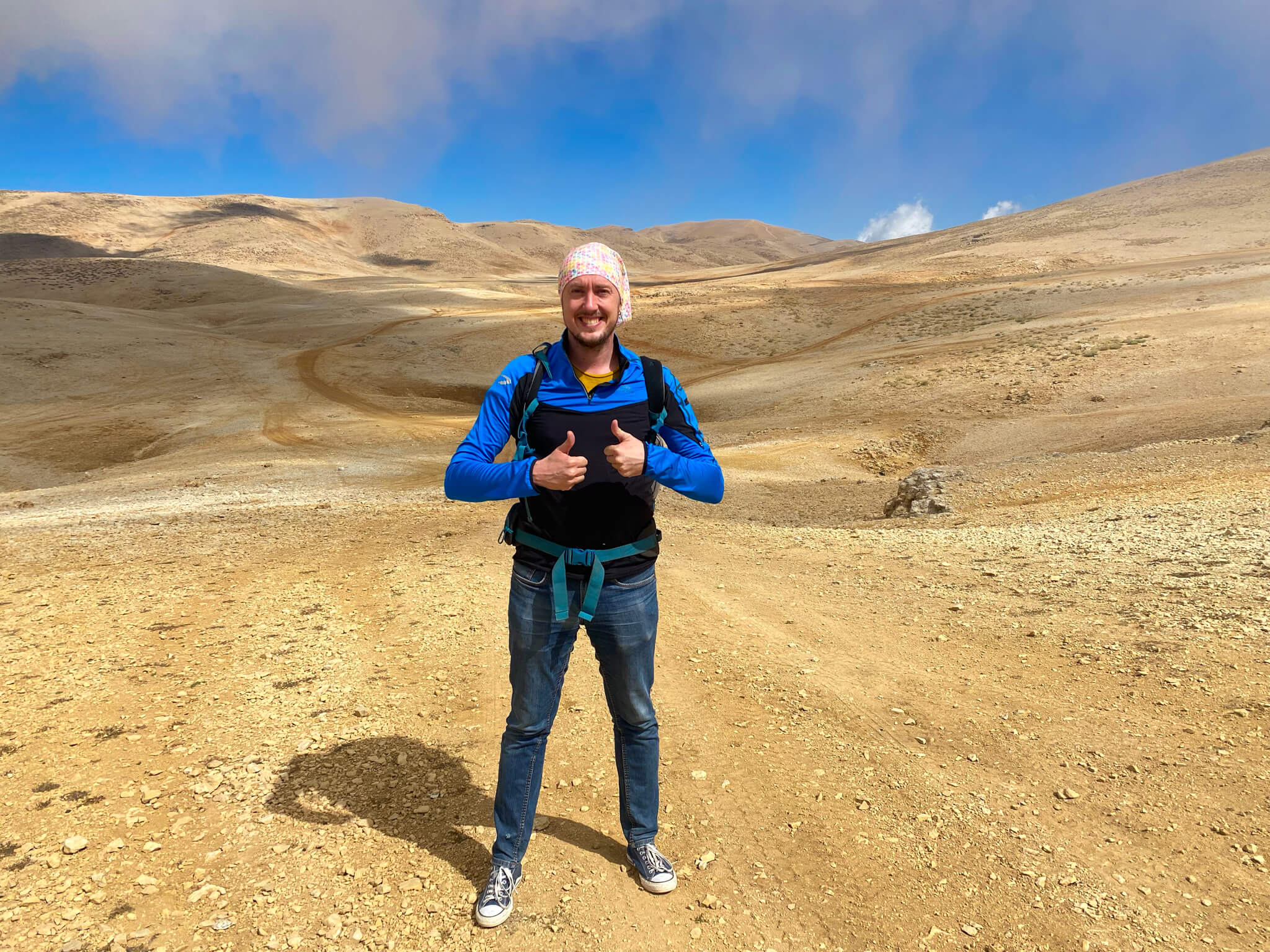
The moonscape of Qornet As Sawda is like nothing else in the whole of Lebanon.
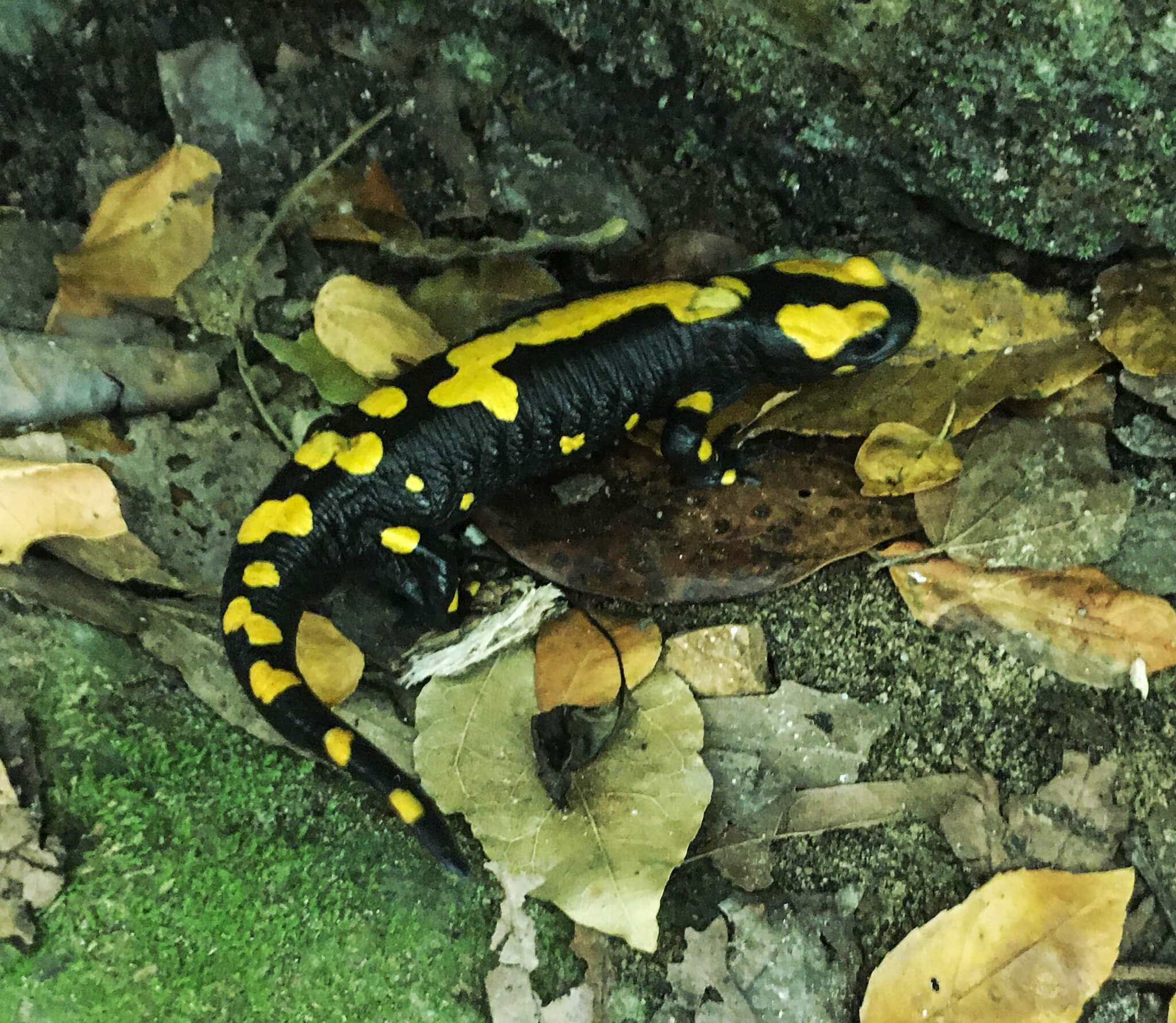
A rare near eastern fire salamander, spotted by yours truly while hiking in the Chouf region.
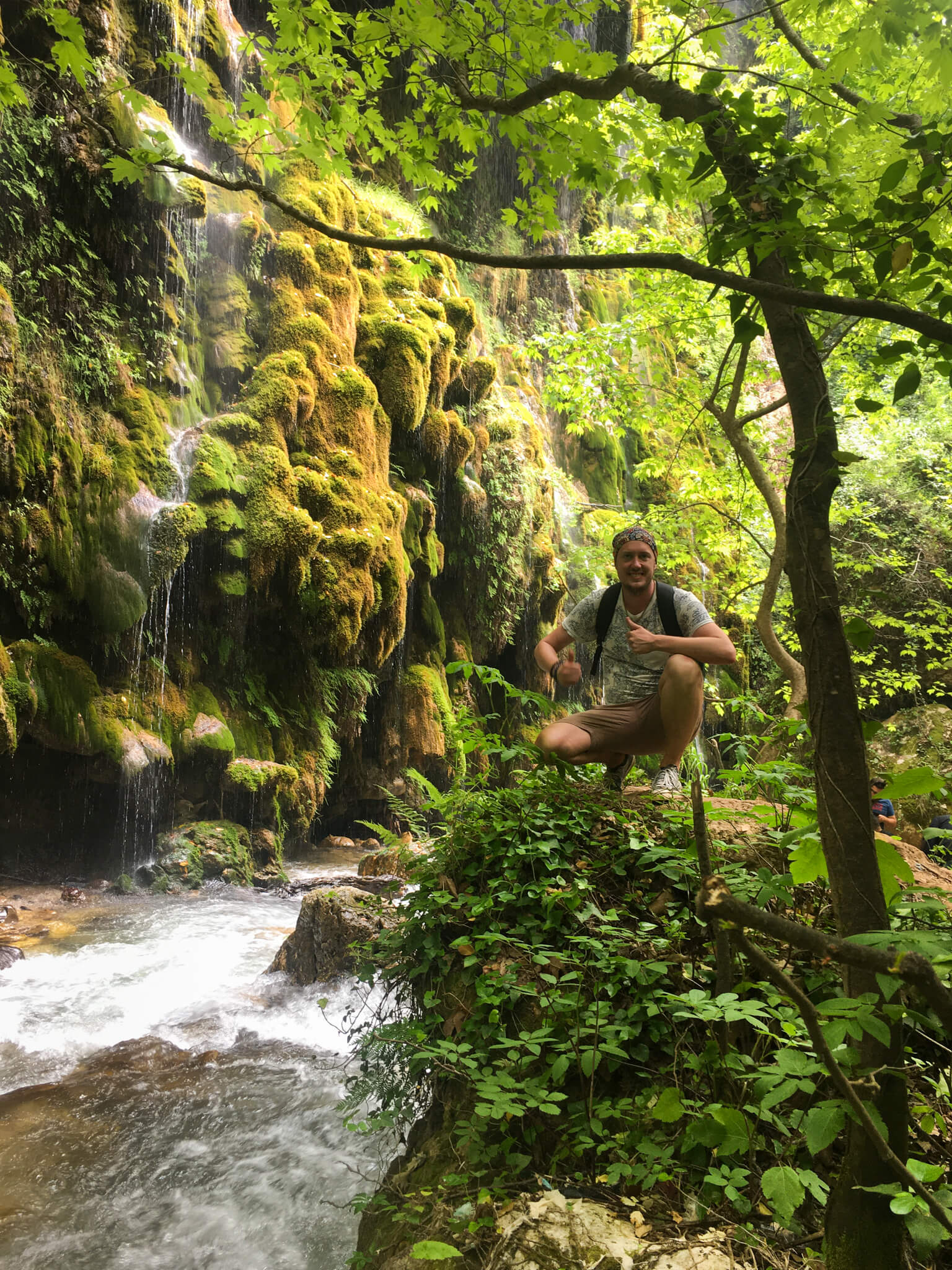
Anyone who thinks the Middle East is only desert and camels has never been to Lebanon – the lush green of the Qadisha Valley is like something out of a Disney film.
Impact of the Crisis – Electricity
Lebanon’s national grid currently only supplies about 1-2 hours of electricity per day to most parts of the country, due to a shortage of fuel, insufficient capacity and various other factors. This is terrible if you’re local and don’t have a backup power supply. However, for tourists it’s actually not that big a problem, as major hotels have good generators that provide 24/7 power and most restaurants and other businesses also have generators, if not all the time.
The best advice here is check with your hotel before visiting. Some generators are not designed to run 24/7 and so buildings can have gaps without power. My apartment currently has seven hours in 24 with no power, split between the night and morning, when they let the generator ‘rest.’
The electricity crisis has made the roads more dangerous – many street lights and traffic lights are not operating. If you do drive in Lebanon, when you come to a junction without working traffic lights, just slow down and drive slowly through. Most Lebanese drivers are very cautious at these junctions, as the economic crisis has made imported car parts astronomically expensive and no one wants to damage their car.
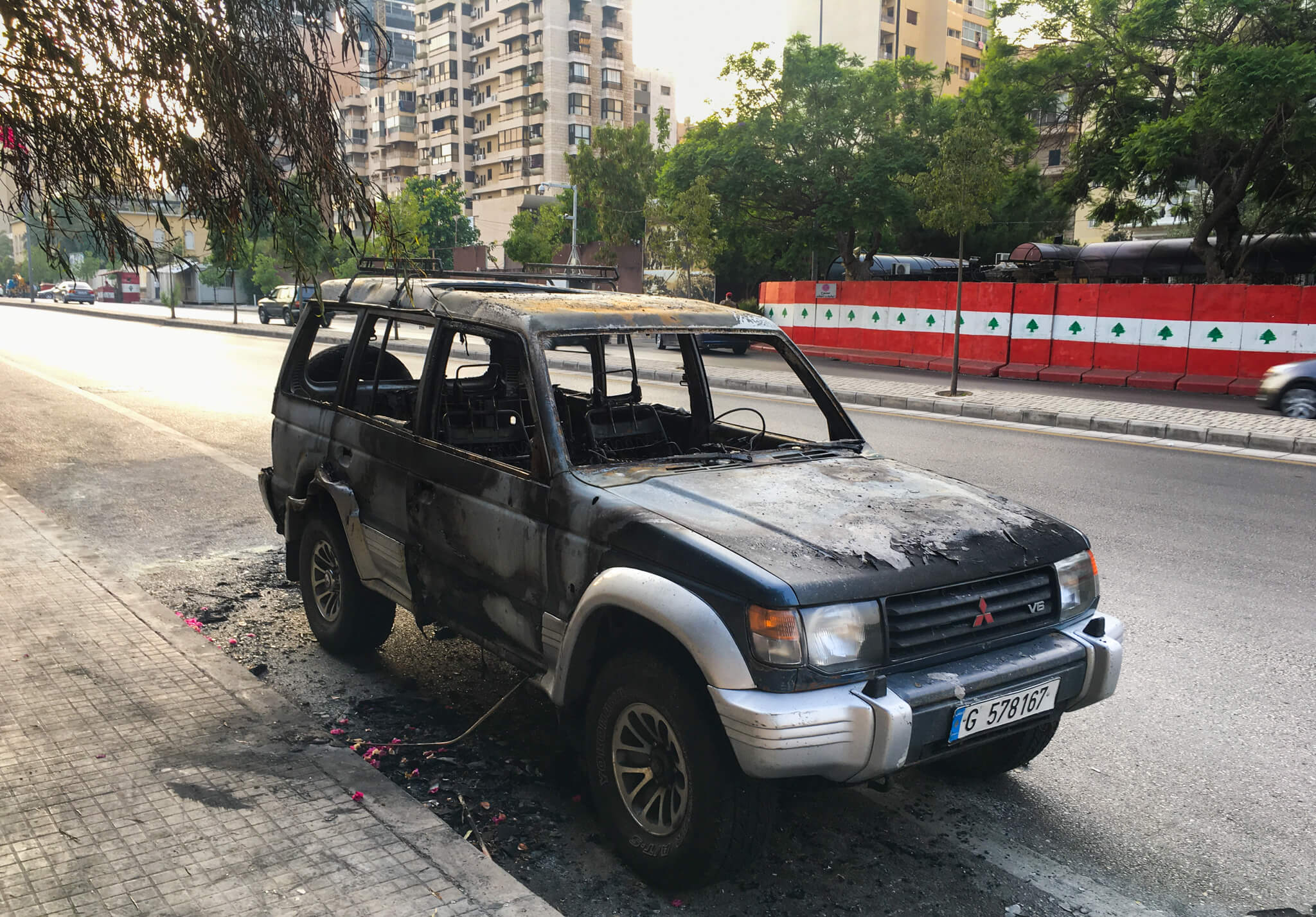
Protests occasionally turn violent, but luckily protest areas are easily avoided by visitors.
Impact of the Crisis – Hyperinflation
The most important thing to remember is to bring enough cash for the duration of your stay. The best currency to bring is USD, but other common currencies, such as EUR and GBP, can also be exchanged at black market rates. Licensed currency exchange shops are now permitted to exchange currency at black market rates, so you no need to be hooked up with a black market dealer.
Pro tip : before coming to Lebanon, download the Lira Rate or Lira Exchange app for your smartphone. These apps show the current black market rates and, although the rate on the street is usually slightly lower, give you a good guide as to the approximate rate you should expect when changing money.
If you do run out of money in Lebanon, don’t withdraw money from an ATM if you can possibly avoid it. ATMs currently operate at the official rate of 15,000 LBP to the USD, so you’re losing most of your money to the banks. The same applies to paying for things priced in LBP with credit/debit cards. ATMs no longer offer USD currency withdrawal for foreign bank cards. The best approach for travellers is to use a currency transfer service like MoneyGram or Western Union, which allow you to transfer in foreign currency and collect it in USD.
One knock on effect of the economic crisis is that Lebanon is now significantly cheaper than it used to be. Hotels have started charging foreigners in dollars again, but everything else, and especially food, is much cheaper than it was before. A good Lebanese meal for two in a normal restaurant will usually cost about $15, including drinks. In a slightly more upmarket restaurant, expect to pay around $30.
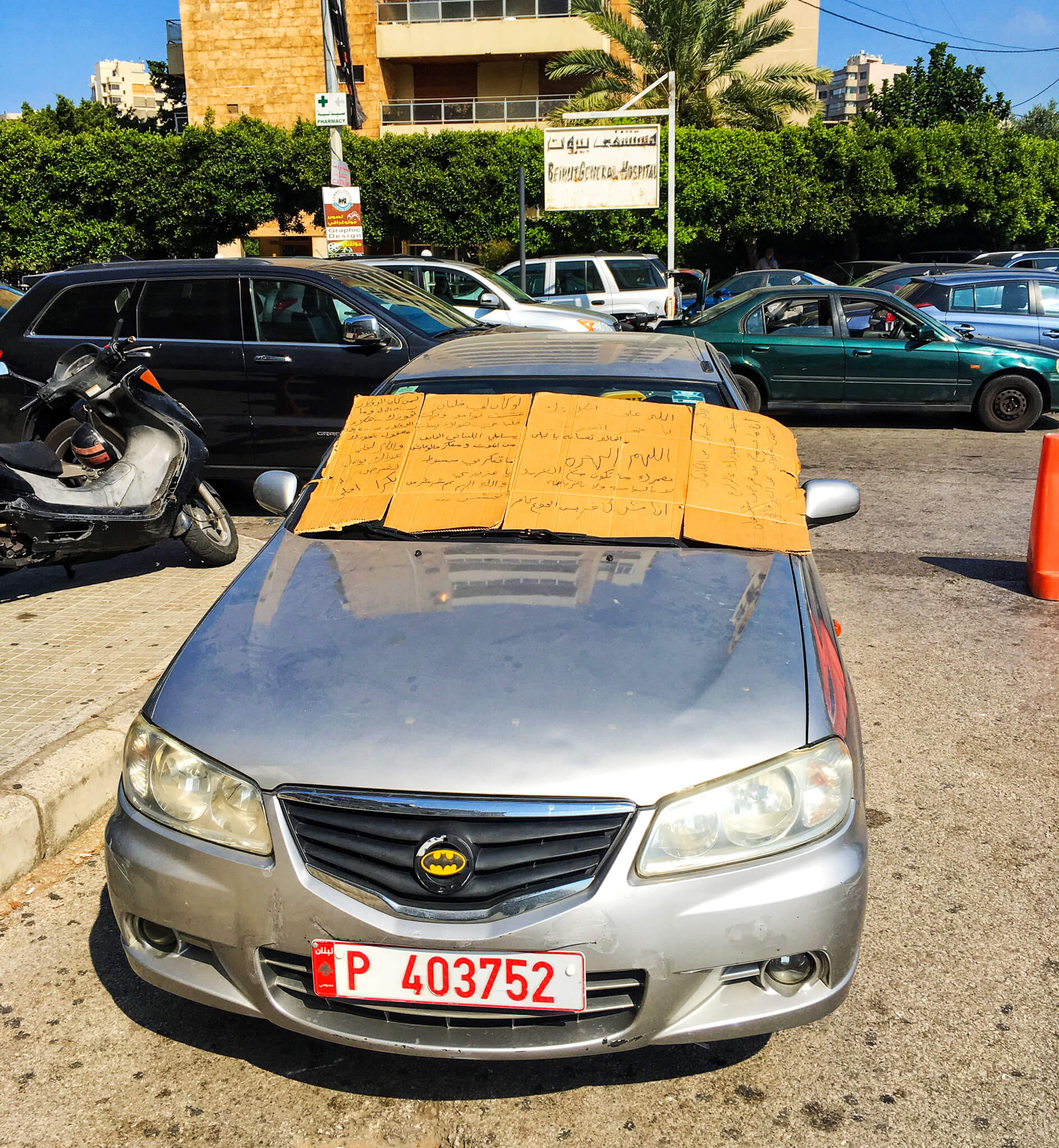
The economic crisis is so bad that Batman had to trade in the Batmobile.
Impact of the Crisis – Safety
Crime rates in Lebanon are very low and, although they have risen recently as people become increasingly desperate, rates of petty theft are still lower than in most of Europe and criminals in general do not specifically target foreigners. That said, the atmosphere can feel tense and the fortifications erected in some areas (lots of barbed wire, concrete barriers and patrolling soldiers) can give the impression that the safety situation is worse than it is.
Most violent incidents that have been in the news recently have occurred during protests, often of a political nature. If you do see the beginnings of a protest, such as groups of people marching together or tyres burning in the road, simply turn around and leave the area. Protests usually start peacefully, but build to a point where the demonstrations spill over into violence. Again, protests do not target foreigners, but there is a risk of being caught in the violence if you stick around.
An unfortunate legacy of the Lebanese civil war is that a lot of the populations still own guns. At a recent protest in Beirut, not only were there shootings with machine guns, but the violence escalated with the use of RPGs. This is an extreme case. Again, I stayed away from the area.
Guns are also often used at funerals or celebrations, where they are shot into the air in waves of celebratory gunfire. Unfortunately, what goes up must come down, and people are occasionally killed by falling bullets or by bullets entering buildings through windows. If you do hear shooting while you’re in a building, move to the interior, away from the windows and wait for it to subside. If you’re outside, leave the area. Funerals rarely happen in the city centre, which is the most interesting area for foreign travellers, so you probably won’t come across them anyway. Furn El Chebek, Chiyah, Tariq El Jdideh and Jnah are common areas for funerals.
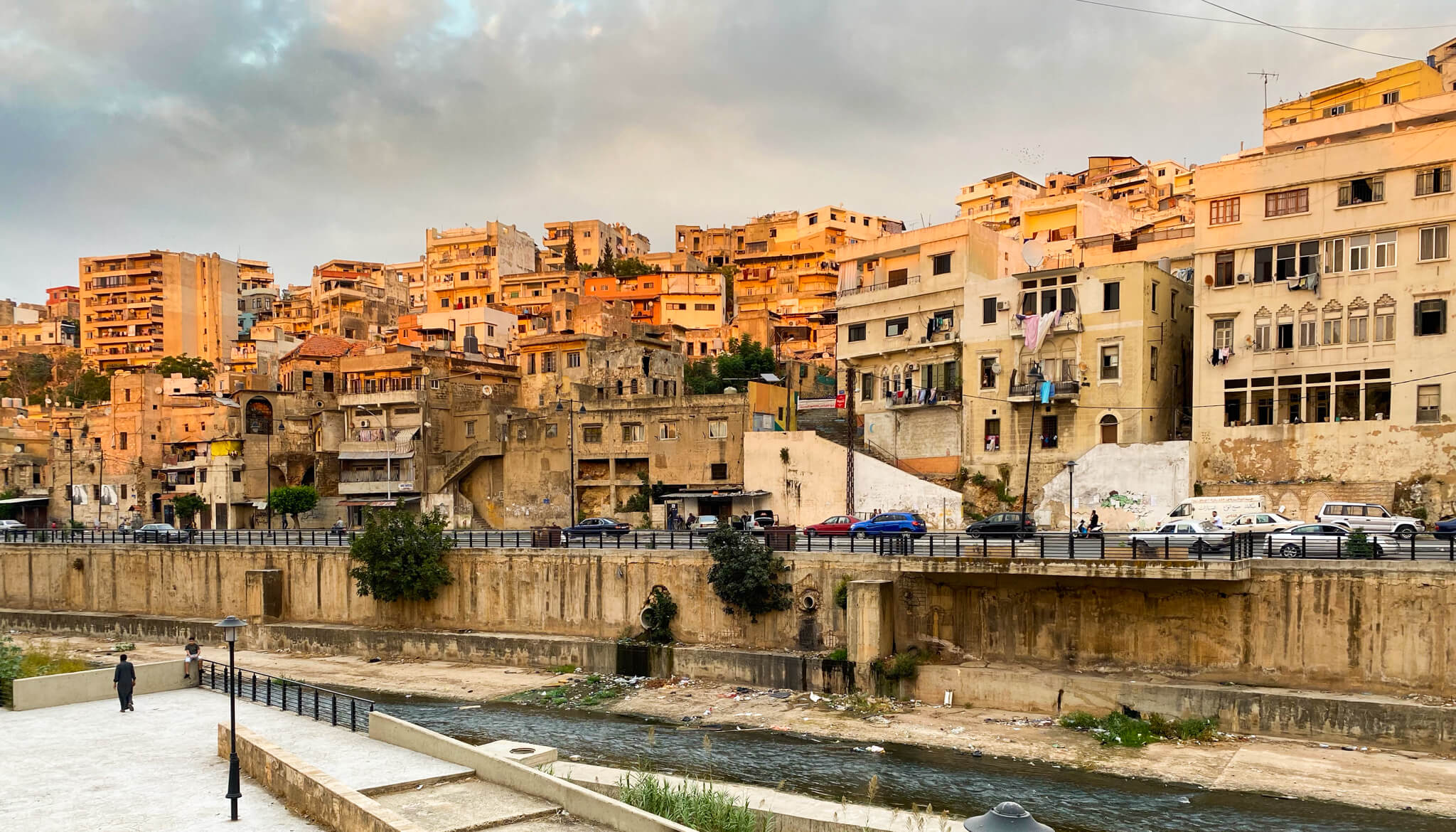
Lebanon is generally very safe. Even walking through the slummier neighbourhoods of Tripoli, Lebanon’s poorest city, I never felt unsafe.
Certain areas of Beirut experience violence far more than others. In general, the southern suburbs of Beirurt, south of main road where the National Museum of Beirut is located, are less safe than the city centre. In particular, Chiyah, Cola and Tayouneh and Tariq El Jdideh have all seen violent protests. Martyr’s Square and the Beirut souks area also see frequent protests, but these tend to be less violent than those in the south.
As a tourist, the only areas you’re likely to visit to the south are Badaro (an upmarket bar street) and the Cola Intersection, as it’s the main hub for public transport to the south and the Bekaa Valley. I visit these locations regularly and have never had problems, but keep an eye out just in case.
This may all sound very scary, but actually Lebanon is very safe for tourists. Even now, by far the most dangerous thing is the roads, where accidents are frequent. Just use a bit of common sense and you’ll be fine.
Impact of the Crisis – Fuel
One of the best ways to see Lebanon, and especially the more remote parts, is to rent a car and drive yourself. During the summer of 2021, fuel became extremely difficult to obtain, often requiring queuing for hours (if you can even find a fuel station that’s open). The only other option was to purchase it on the blackmarket at vastly inflated prices.
The good news is that, since the end of September 2021, fuel has been readily available again. The government has let the price of fuel rise to close to market value, which has reduced incentives for fuel hoarding and smuggling to Syria.
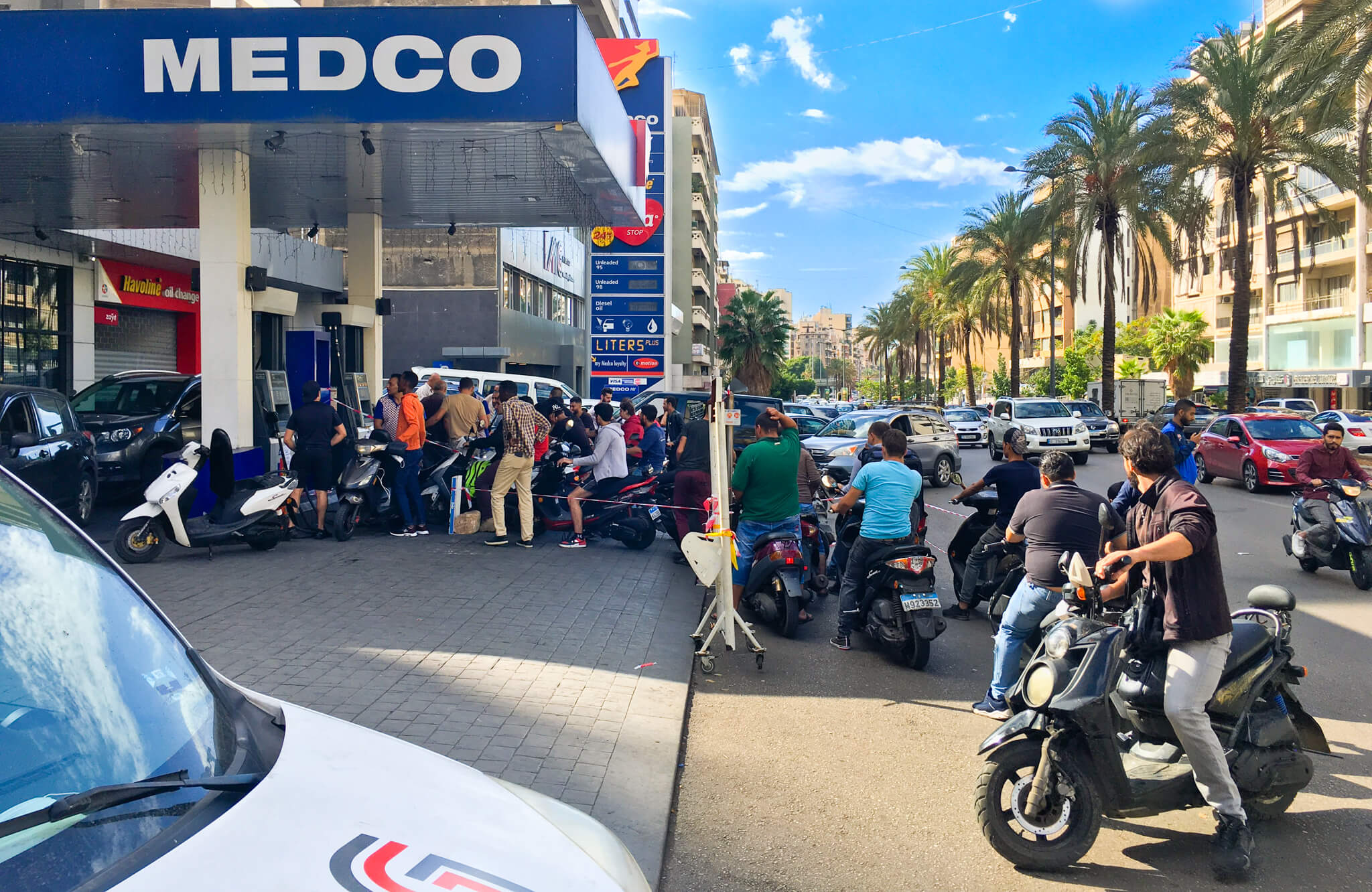
Bikers queuing for fuel at the peak of the fuel crisis in 2021
Ethics – Should I Visit Lebanon During the Crisis?
With frequent power cuts and shortages of some products, many people question whether they should visit a country while it’s in crisis, as they feel they may be using limited resources that are needed by the local population. In the case of Lebanon, the answer is definitely yes, you should visit. Lebanon produces very little domestically – even 80%+ of food is imported. Shortages are not caused by a lack of supply on global markets, they’re caused by a lack of financial means to purchase supply (compounded by corruption and a range of other factors).
By visiting Lebanon, you are bringing much needed foreign currency into the country and, by buying products and services from local businesses, ensuring that it reaches local people who need it. One of the biggest problems for Lebanese people is that the value of the LBP to the dollar is so low, which makes imports expensive. Everytime there is a large influx of visitors, for example with the Lebanese diaspora returning home over Christmas, the LBP gains value, helping local people. This shows the positive effect that an influx of foreign currency has and, as an individual your contribution will be small, but will certainly be positive. In other words, don’t feel bad about visiting!
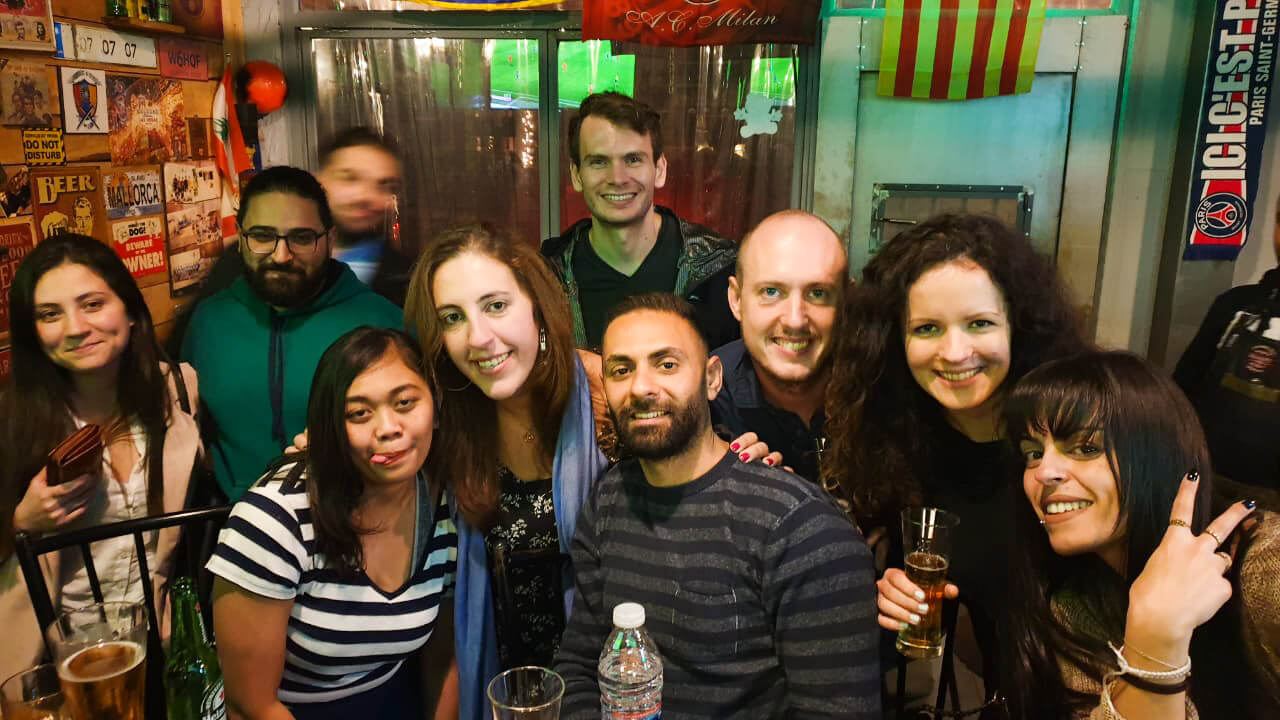
Lebanese people are very good at enjoying life, even in the middle of a crisis.
One of the best ways to see Lebanon is to rent a car. Car rentals are cheap now (about $20/day for a small car, including insurance) and Lebanon is a very car-based society. A deposit of around $100 is often requested in cash for your first rental. So far, I’ve not heard of any problems having this refunded. In theory, an International Driver’s Permit is required, but in reality no one cares, at least not if your local driver’s licence is in English, French or Arabic.
I usually rent from Mike Rent-a-Car, which is a good option if you want to support local businesses. The price is generally $20-30/day depending on the season for a small car and their Website is at www.mikerentacar.com . Their office in Beirut is located here . Alternatively, the big international car rental companies, such as Avis and Europcar , also operate in Lebanon. They also have the advantage of having a presence at the airport, so you don’t need to bother with other transport to get to your accommodation.
Cars and Drivers
If you don’t feel confident driving in Lebanon, it is possible to hire a car and driver from a hotel or hostel. This can cost upwards from around $70 a day plus fuel, but hotels may charge significantly more.
Ride Hailing Apps
Uber and Bolt both work well in Beirut. Bolt is usually slightly cheaper, but Uber cars are generally in better condition and the drivers are more professional. These apps are also by far the cheapest way to get to or from the airport in Beirut. Just be sure to change the payment method to cash, as credit cards are billed at the official exchange rate so you’ll end up paying $50 for a 5-minute trip across town.
Public Transport
Lebanon has an informal public transport network made up for service (shared) taxis and minibuses. These are operated privately with pricing regulated by the government. There are also public buses from Beirut to Tripoli. Vehicles licensed for public transport, including taxis, all have red number plates (or red lettering on the number plate).
To catch a service (shared) taxi, stand on the edge of a road (main roads are usually better) and hold out your arm when a taxi comes past (look for the red number plates). Ask the driver “Service?” If he agrees, it means the taxi is shared, so you will not be charged for a private journey. Then tell him your destination. If he’s going in the right direction and willing to take you there, he’ll agree. Finally, ask him the price. Most drivers are very honest, but a few do try to overcharge foreigners.
Inside Beirut
Service taxis operate throughout Beirut, although explaining the destination can be tricky. Often, the easiest approach is just to say the name of the area, such as “Hamra,” “Gemayze,” “Daora,” or “Cola.” Minibuses on set routes also operate, but finding the routes is extremely difficult, so use the same approach as when taking a service and ask the driver whether he goes to your destination. Prices for service taxis are just over $1 and for minibuses around $0.50.
Northern Lebanon
Shared taxis and minibuses run from the Daora roundabout in Beirut up the coastal highway to Jounieh, Byblos, Batroun and Tripoli. Prices vary, but are cheap, starting at about $1 to Jounieh. Just ask the drivers whether they go to the city you want to reach.
For Tripoli, there’s also a bus that runs on an actual schedule from Martyr’s Square in Beirut.
Their current schedule can be found on their Facebook page at https://www.facebook.com/connexion.transportation .
Southern Lebanon and the Bekaa Valle y
Minibuses run from the Cola Intersection in southern Beirut down the coastal highway to Saida and Tyre, as well as to Baalbek in the Bekaa Valley and to the Chouf region. To visit the Chouf Biosphere Reserve, catch the bus to Barouk, the name of the nearest village. From there, you need to walk several kilometres to enter the reserve and there is no public transport. Hitchhiking could be an option.
To reach Anjar, take the minibus to Baalbek and get off at Chtoura. From here, there are other minibuses running to Anjar.
The Jeita Grottoes
The Jeita Grottoes are located about halfway between Beirut and Byblos, approximately 5km from the highway. Take public transport from the Daora roundabout and get off at the Ajaltoun exit of the main highway (coordinates 33.960616, 35.604071, here on Google Maps ). From here you can either walk (5km uphill) or take a taxi. There are usually several drivers hanging around this area, although prices can be high and will depend on your negotiation skills. To get back to the highway afterwards, you can usually find a driver in the Jeita Grottoes carpark. Another good option to reach the Jeita Grottoes is to take an Uber all the way from Beirut. Uber is cheap in Lebanon, so this works out around the same price.
I’m not aware of any public transport option to reach this area of the country (including Aqoura, the Batara waterfall and the Cedars of God), so your options are really driving or hitchhiking.
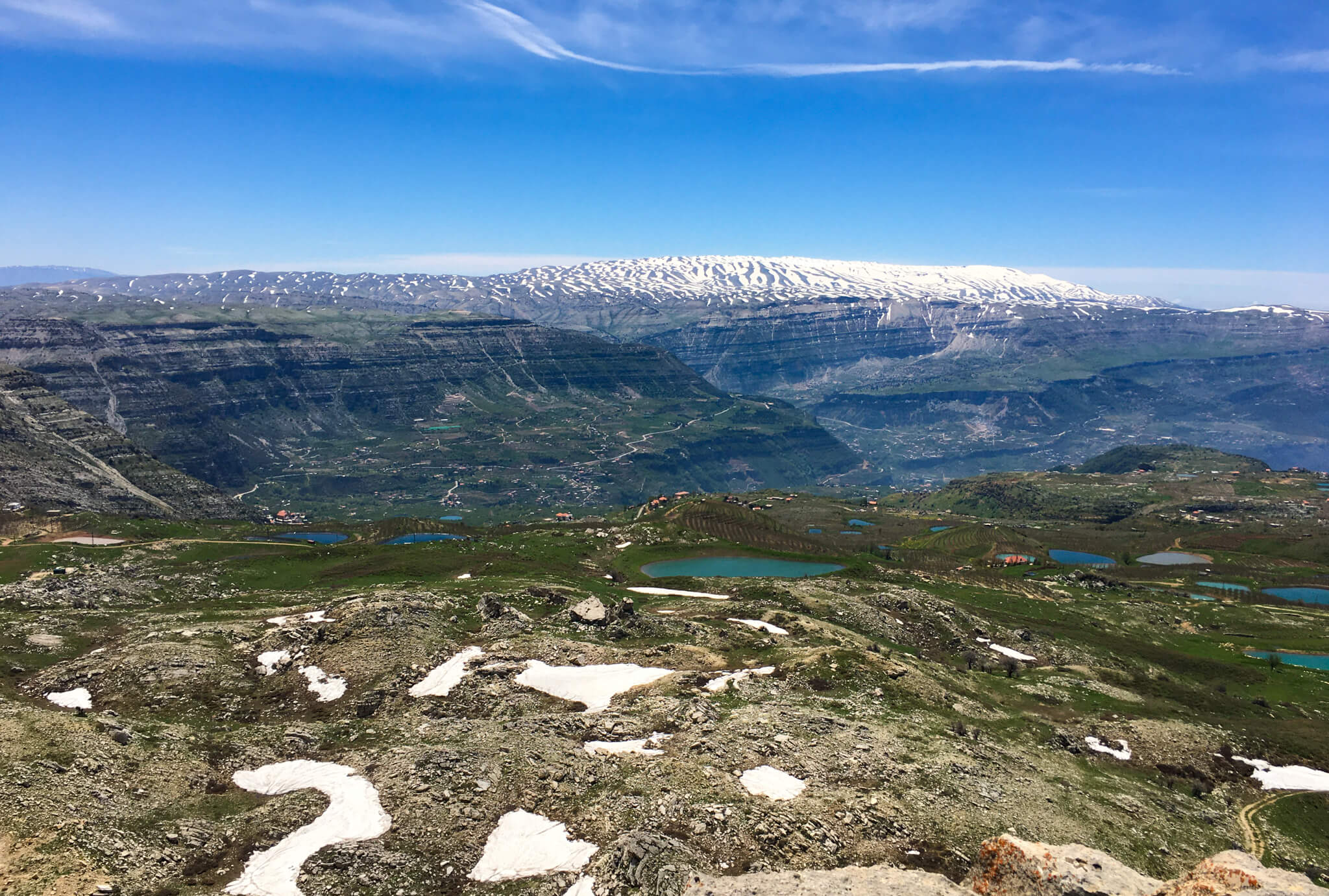
The view from Aqoura – there is still snow on the mountains in early May. The northern mountains are a pain to get to without a car, but worth the effort.
Transport to and from Beirut Airport
Uber is a cheap and convenient way to get to or from the airport in Beirut. This should cost around $6. However, this can be tricky when first arriving, due to needing to obtain Lebanese pounds to pay the driver. If the exchange counter at the airport is not open or the rate is bad, you can try negotiating with the Uber driver to pay in USD at the black market rate.
There are always plenty of local taxis waiting at the airport to take you to the city centre. These often try to charge ridiculous rates to foreigners – up to $50 for the 10-15 minute journey. With a bit of bargaining, you should be able to agree on around $10.
Checkpoints
There are military checkpoints on the roads throughout Lebanon and even within some parts of Beirut. Generally, they wave foreigners through without saying anything. If driving yourself, slowdown at the checkpoint, wind down the window and greet the soldier. Most times, he’ll wave you though before you even come to a stop.
In my two years here during which I’ve travelled the country extensively, I’ve been asked twice for my nationality and had my passport checked once (so carry it with you, just in case), and that was on the road between Hermel and Qobayat, one of the most remote parts of the country.
Entering the UNIFIL-Controlled Area
The only exception to the above is the checkpoints for entering the UNIFIL-controlled area south of the Litani river near the border with Israel. Foreigners can only enter with a permit obtained in advance (with the exception of UN employees). To obtain the permit, visit the police headquarters in Saida with your passport. The police station is at coordinates 33.550327, 35.381710 ( here on Google Maps ). You need to bring your passport and colour photocopies of the identity page and your entry stamp to Lebanon (and visa, if you come from a country that needs a visa to enter Lebanon). It generally takes less than one hour and permits can be issued for entry on the same day. Permits can be obtained for one or multiple days.
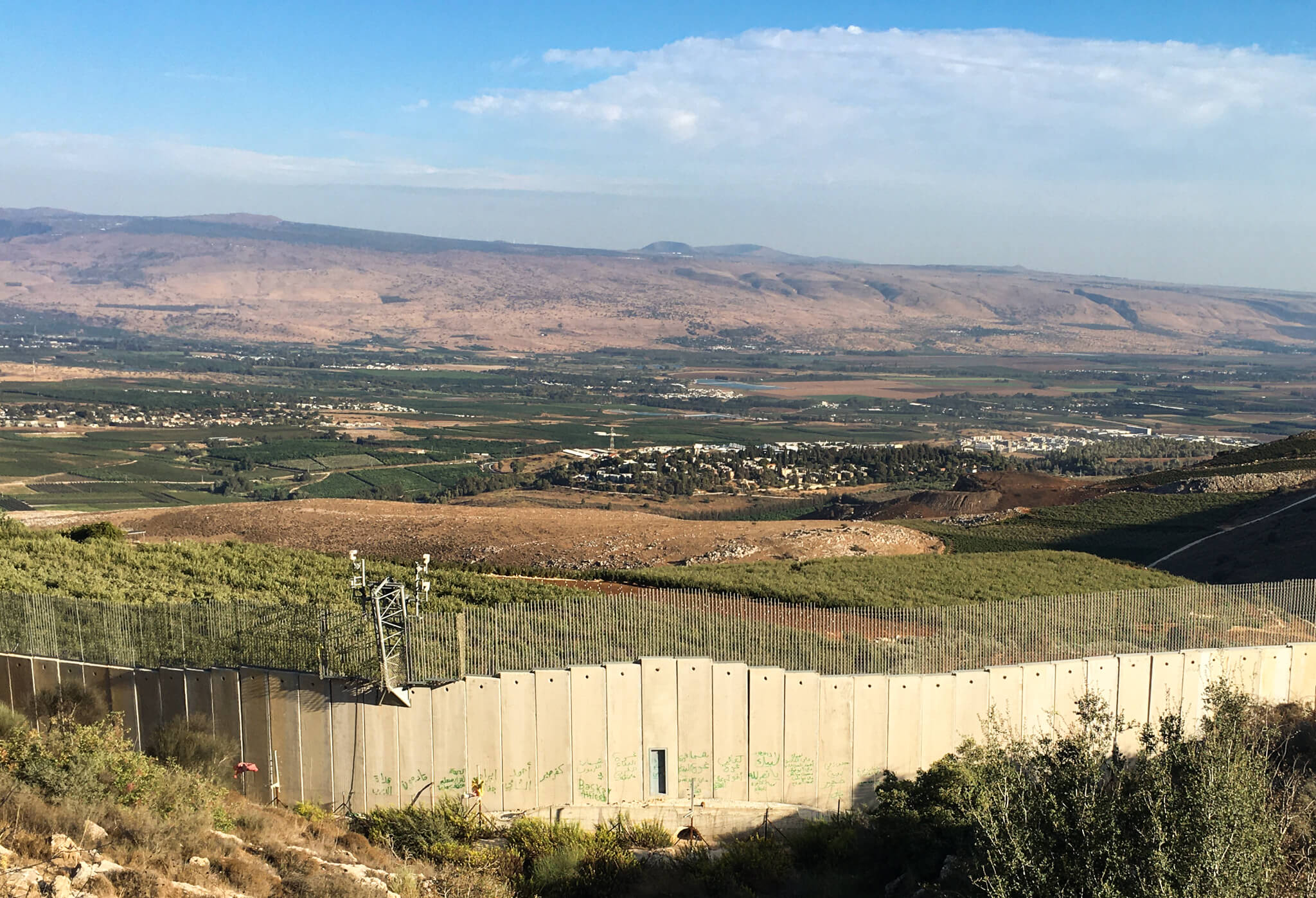
Northern Israel, as viewed over the imposing border wall in south Lebanon.
Recently (as of early 2023), the black market exchange rate has been hovering around the 80,000 LBP to the USD rate, whereas the official rate is 15,000 LBP. Previously, currency exchange shops were prohibited from giving the black market rate, but the government has relaxed this rule, so any currency exchange shop can exchange money for you. Just make sure you bring plenty of cash.
Whatever you do, don’t use a foreign bank card in an ATM or to pay in shops. The banks still apply the official rate, so you’ll be paying several times the real price.
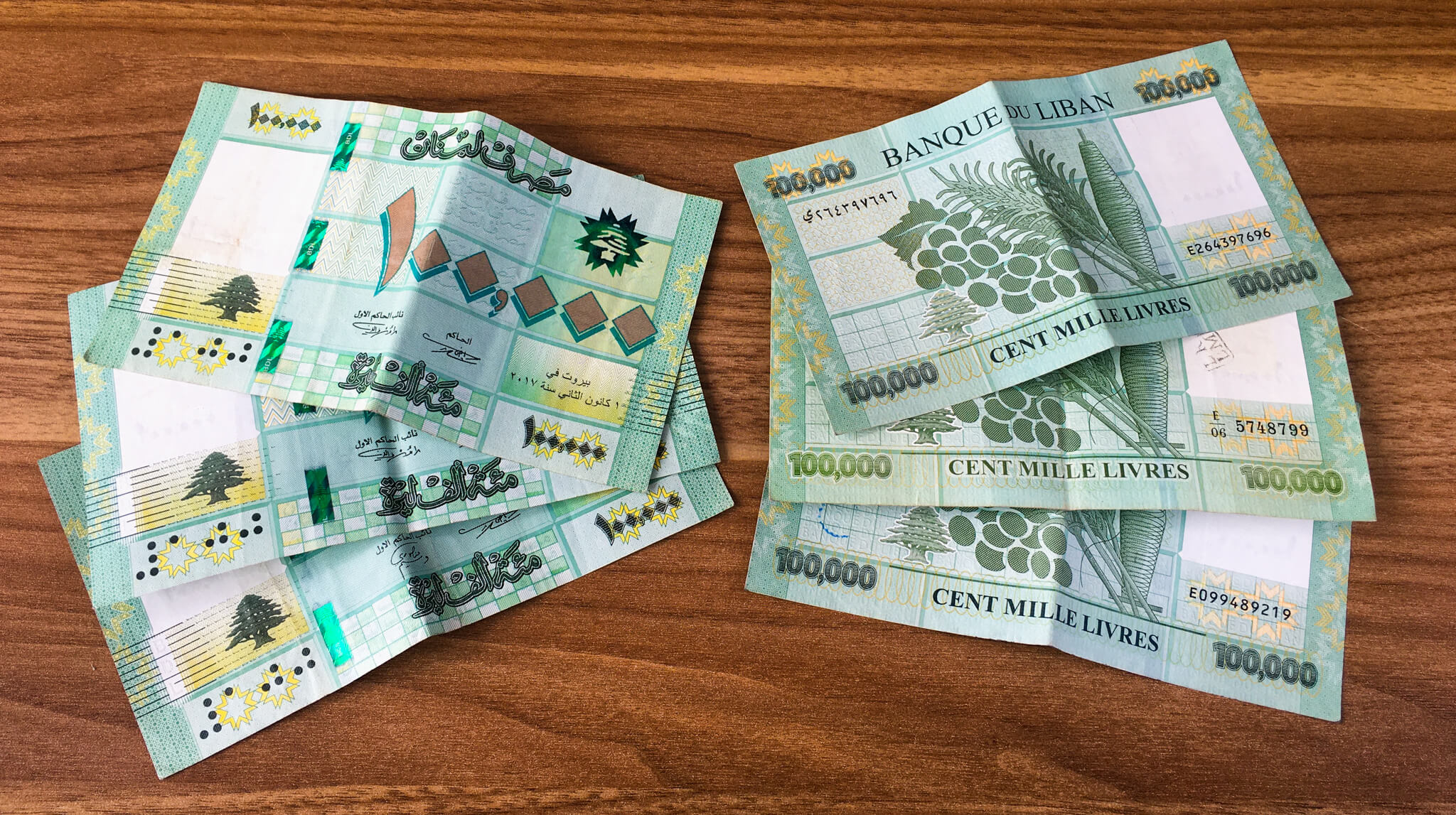
Pre-crisis, these notes were worth about $66 each. Now they’re worth around $3.
Mobile Phone Service and SIM Cards
Lebanon has good mobile Internet even in most rural areas. SIM cards are widely available from mobile phone shops. I use Alpha, which has good 4G coverage across most of the country. Passports are not required to obtain a SIM. Prices fluctuate, but a SIM card with 6GB of data valid for one month can be obtained for around $20. I have been warned to check that the seller gives you the packaging to ensure that it’s not a reused, although I’m not sure what the problem would be with this..
Restaurants and Coffee Shops
One of the greatest pleasures of visiting Lebanon is the food. This list is by no means exhaustive, but here are my favourite restaurants. I happen to like coffee a lot, so I’ve also slung in a few coffee shop recommendations for good measure.
- Resto Ghazar: My favourite Lebanese-Armenian restaurant. Try the soubeureg (cheese pastries), mouhamara (pomegranate with nuts) and manti. Although not Armenian, their batata harra (spicy potatoes with coriander) is also out of this world. Prices are very reasonable, at about $10-15 a person, including drinks.
- Ohannes Restaurant: Another great Armenian restaurant, with beautiful tiled decor. The food is also great, especially the Ohannes salad and fried liver. This place is a bit more upmarket at about $15-25 per person, including drinks.
- T-Marbouta: A variety of great Lebanese food in the heart of Hamra with a nice outdoor seating area. About $8-15 a person, including drinks.
- Sawani Falfoul: A great place for breakfast in Badaro, an upmarket bar street. In particular, try the foul (a kind of chickpea soup, pronounced like the word “fool” in English), shakshuka (scrambled egg with tomato) and hummus (the “Malaysian” hummus is particularly good, if not very Lebanese sounding).
- Barbar Restaurant: Basic but tasty Lebanese barbeque restaurant in Hamra. Not sure of the current price, but cheap!
- Le Chef: A traditional Lebanese restaurant that claims to be the oldest in Lebanon, although my Lebanese friends tell me that this is bullshit. The place has a lot of character and was saved from bankruptcy by a donation from Russel Crow, who once ate there, after being destroyed in the port explosion in August 2020.
- Notes Speciality Coffee: My local coffee place. Great brews and the chance to meet me if you’re there in the morning (I often work from there).
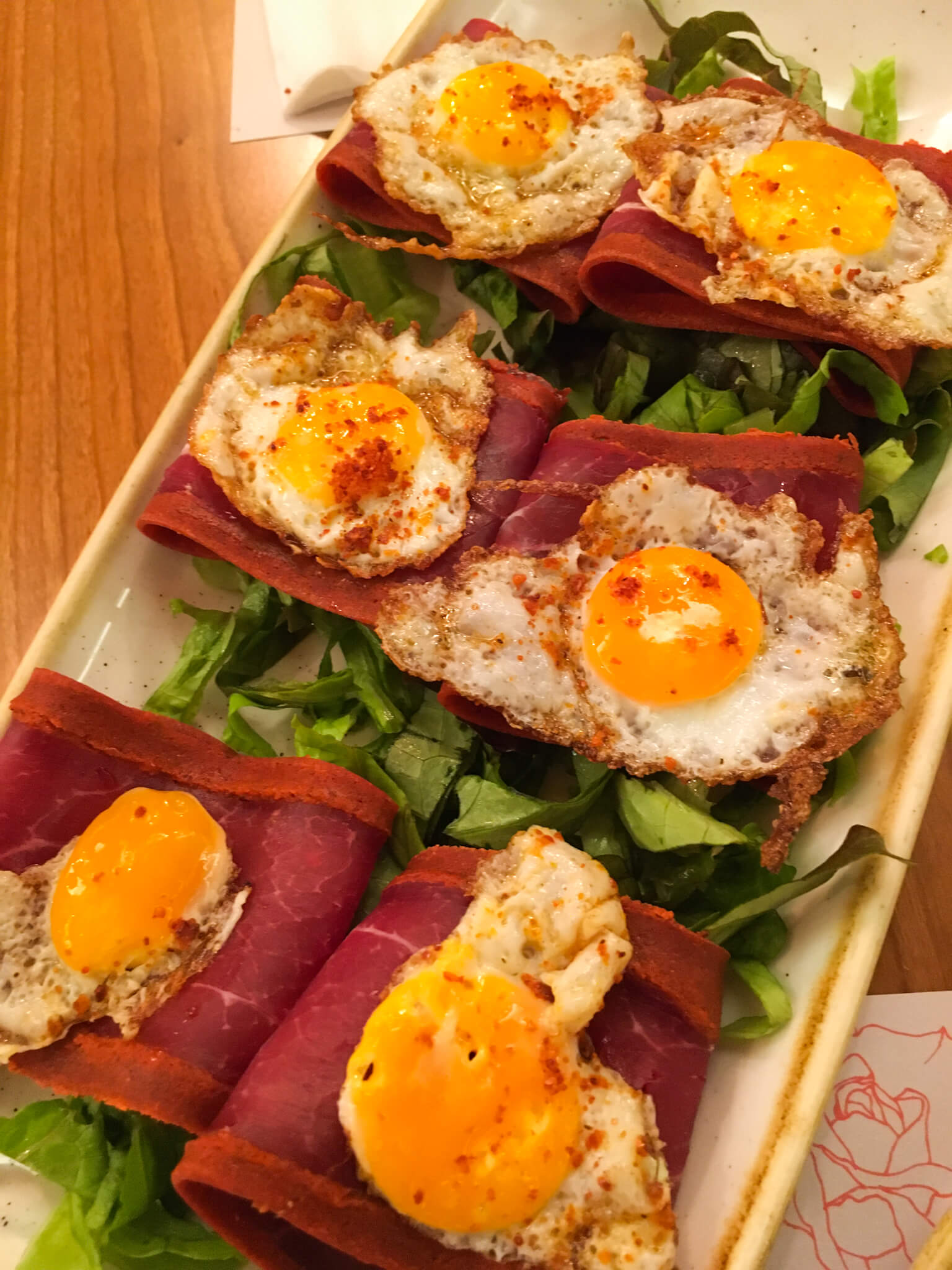
Quail eggs with basterma (seasoned meat) – an Armenian-Lebanese delicacy.
- Fenicia: This restaurant is so good that I have hardly eaten anywhere else in Byblos. Up there with Resto Ghazar as one of my two favourite restaurants in Lebanon. The environment is elegant and the food is absolutely out-of-this-world. The cheese/shrimp rolls and the mixed grill plata are my recommendations. Prices are about $15-25 per person, including drinks. The only problem is that they don’t take reservations and getting a seat can be difficult.
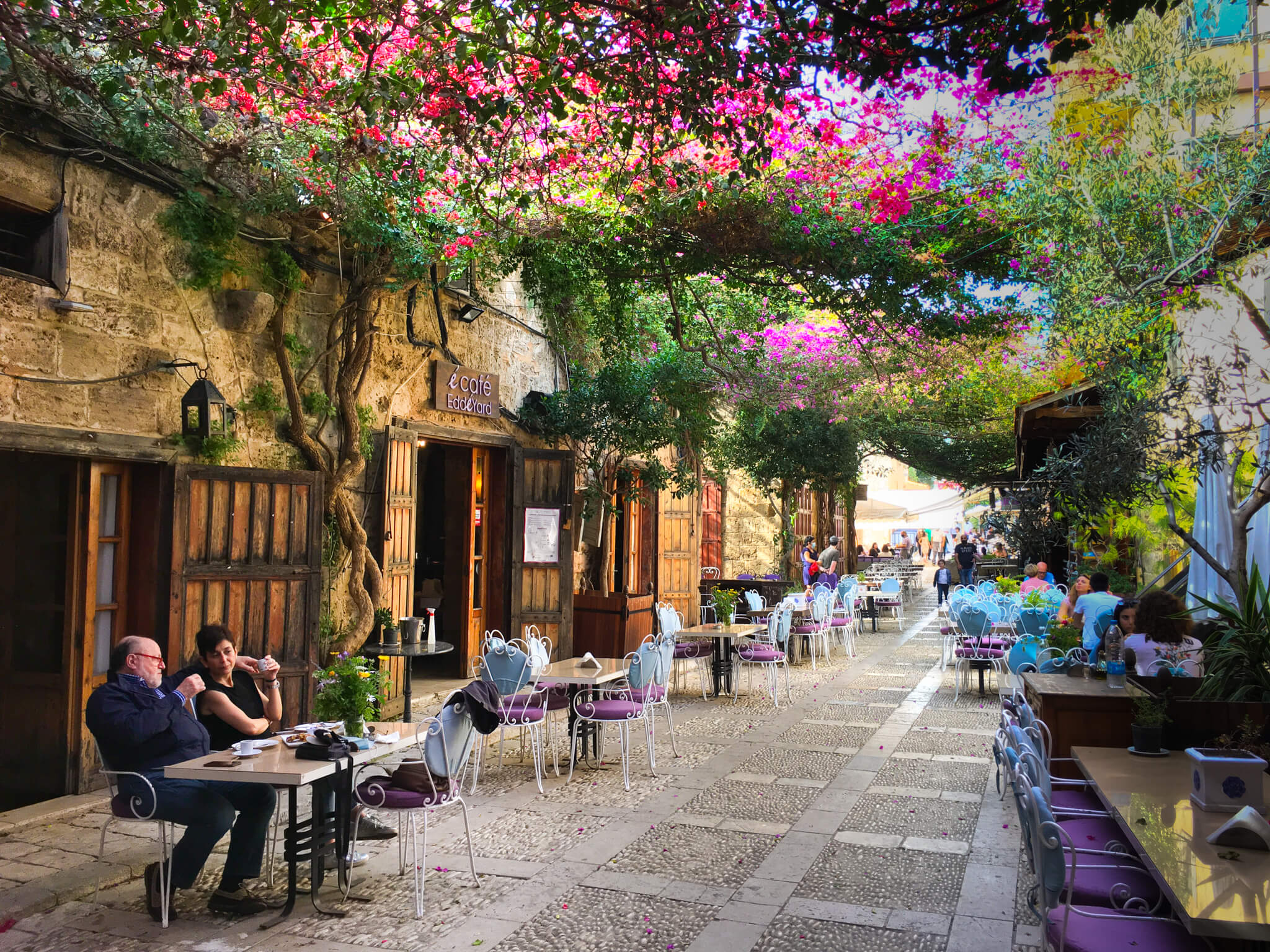
Byblos has many local restaurants, like this Italian one, where you can sit outside and enjoy the old town vibe.
- The Colonel Brewery: Lebanon’s most famous craft beer brewery, the Colonel recently opened a restaurant with a view of the Mediterranean and a great selection of fresh seafood. Try the delicious raw fish if you’re feeling adventurous. A meal for two including drinks is around $30.
- Barrio 67: Not Lebanese cuisine, but delicious international food and nice decoration in the heart of the old town. Prices are about $15-25 per person, including drinks.
- The Sailor Woman: this cute little restaurant serves only six dishes – fish with tahini, calamari, octopus, french fries, fattouch (traditional Lebanese green salad) and Tabbouleh (traditional Lebanese salad with Parsley). What makes it so special is that all the cooking is done by a little old lady in her apartment, which is just next to the restaurant. The fish is also very fresh, as Tripoli is the centre of the Lebanese fishing industry.
- Newtown Coffee: Great place to take a break from sightseeing and chill. Nice environment and good coffee.
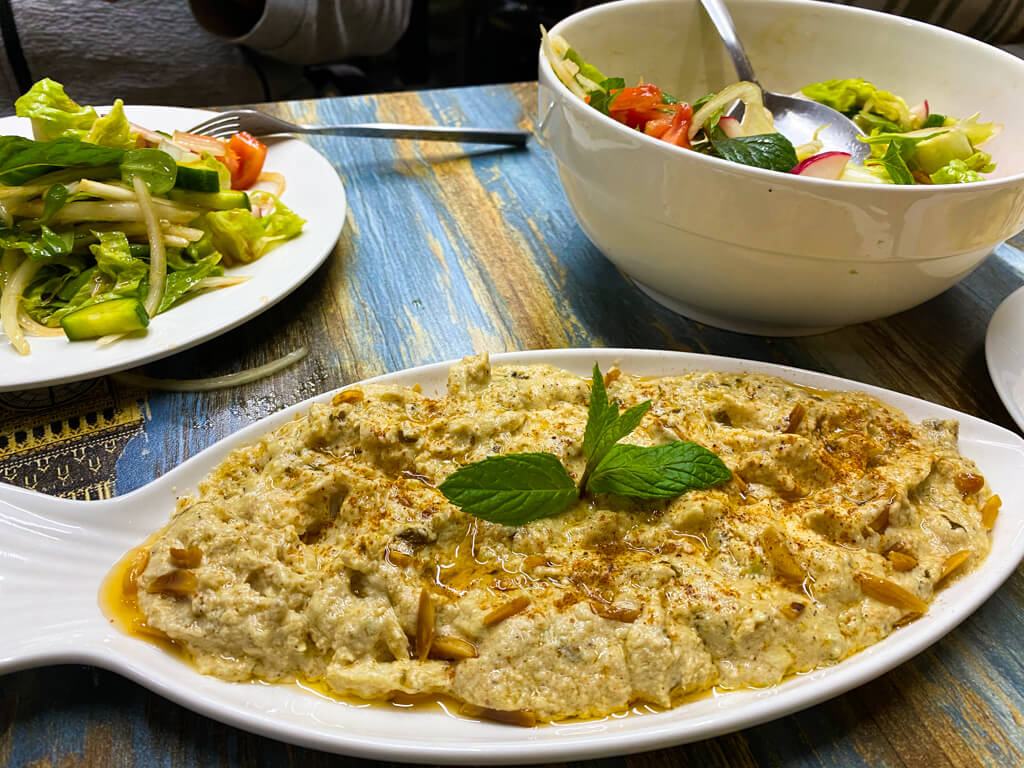
My favourite fish in Tahini at The Sailor Woman restaurant.
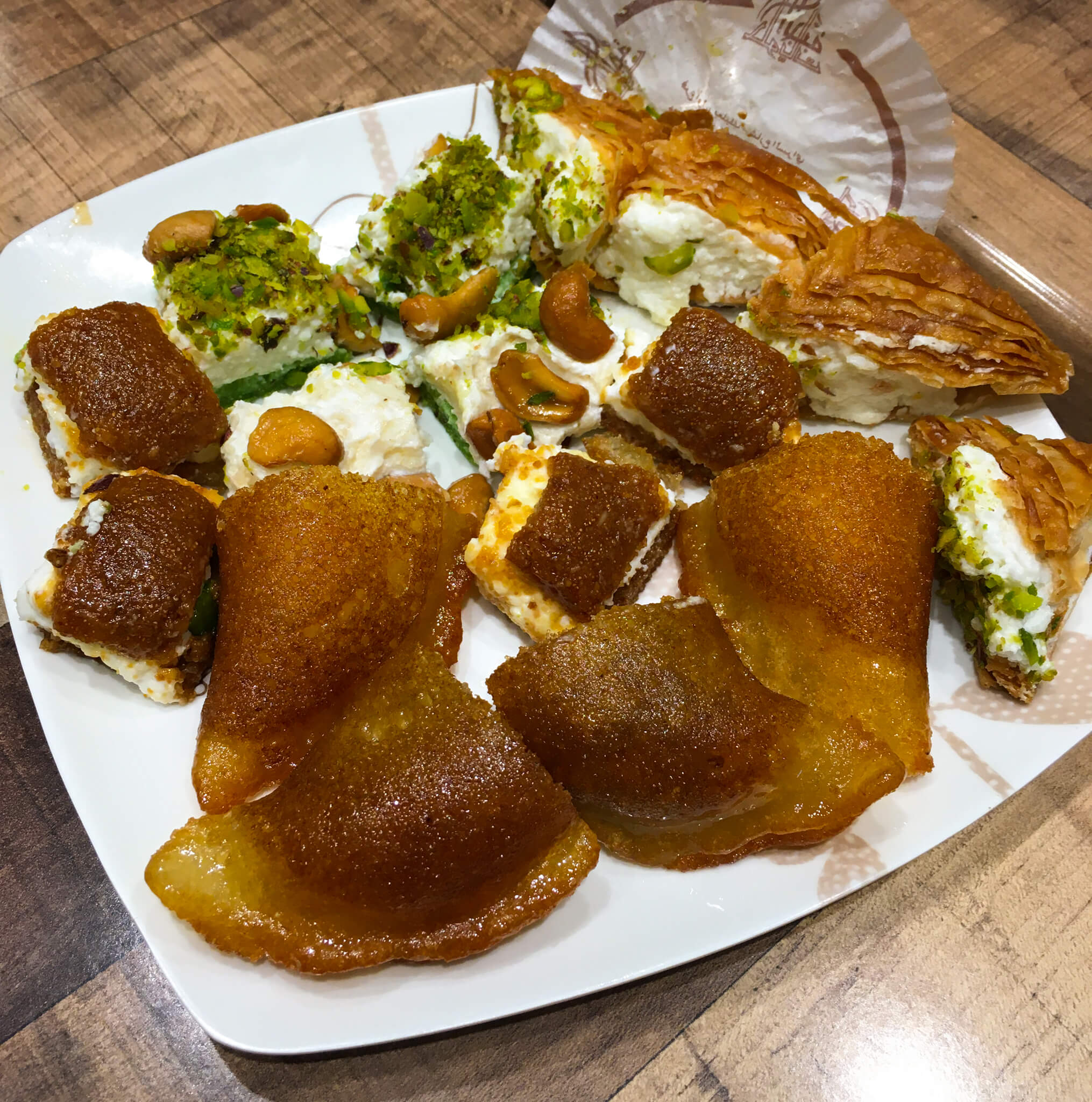
Be sure to try some Lebanese sweets, which can be found across the country.
- Foul Abou El Ezz: Another breakfast place, simple, very local and delicious. Try the foul (a kind of chickpea soup, pronounced like the word “fool” in English) and hummus.
- Green’s Coffee: One of my favourite coffee shops in Lebanon with a great selection of coffees and even a deli counter. The environment is top-notch with a nice retro feel.
- Resthouse: Overpriced (although still cheap by international standards), but with a great view of the Seafort and the only place allowed to sell alcohol in Saida. Perfect for a beer with a view on a hot summer’s day.
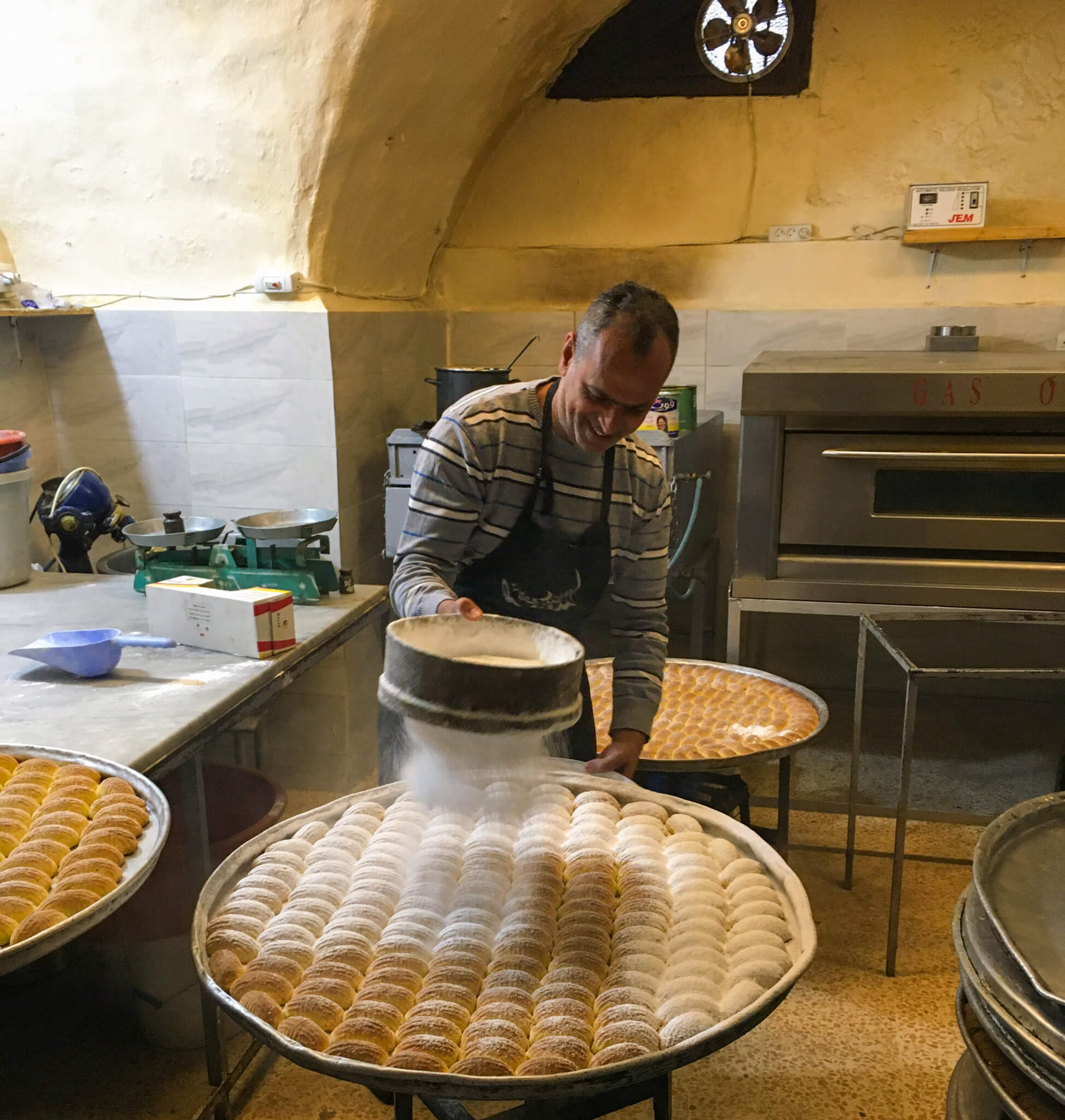
A man making local sweets at a little bakery in the winding streets of Saida’s old bazaar.
- Local sfeeha place: On the main street of Baalbek, on the left as you’re walking away from the Roman ruins, you’ll come across what is basically a traditional oven in a room on the edge of the street with a few tables outside (approx. coordinates: 34.005245, 36.208302, here on Google Maps ). They make one dish – delicious sfeeha, the traditional meat pastry originally from Baalbek – and they make it really well. It’s a while since I’ve been there, so not sure of the exact price, but twenty sfeeha cost a few dollars.
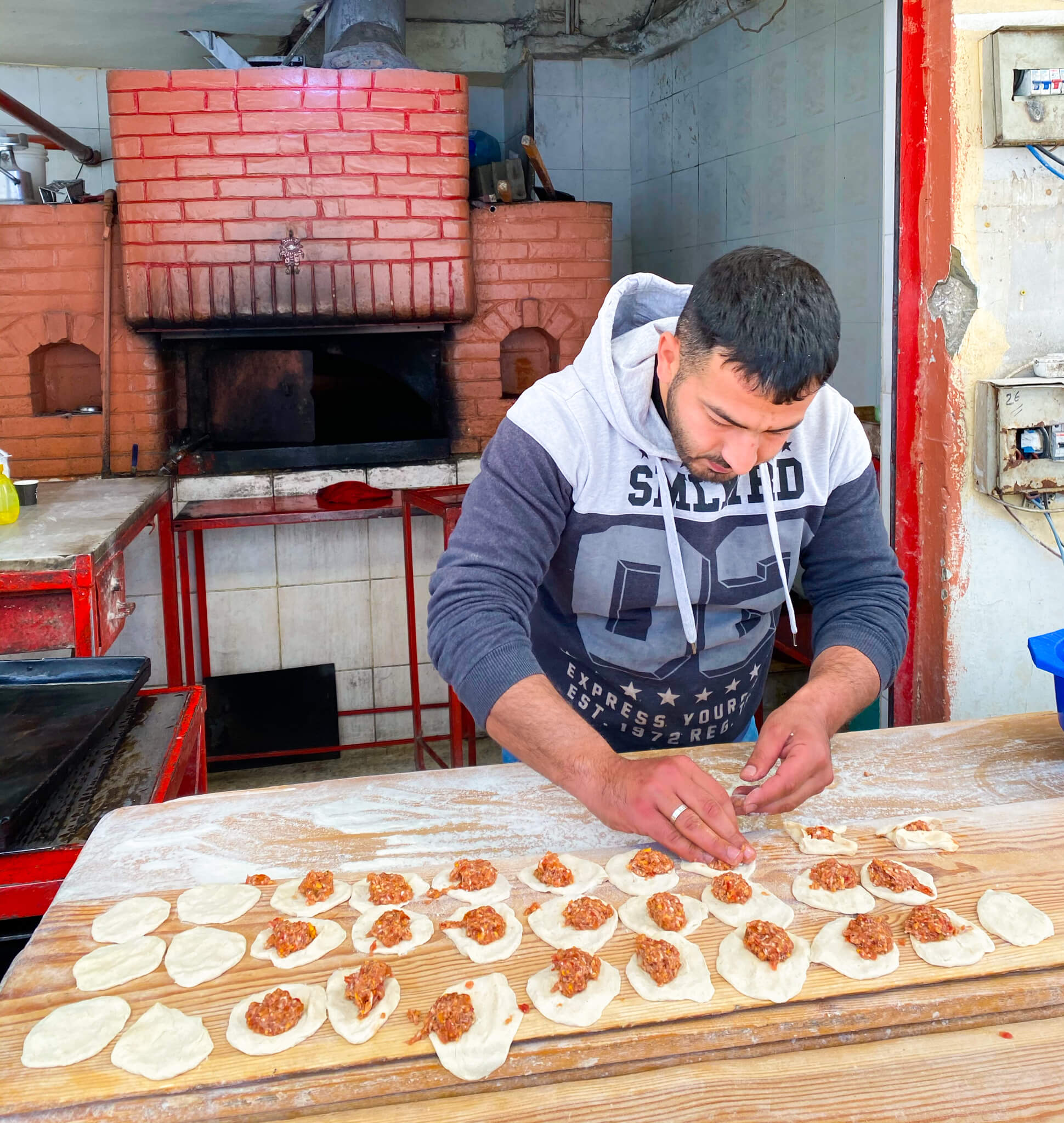
Local sfiha meat pastries being prepared for the brick oven.
- Fresh seafood: Tyre has a wonderful selection of reasonably-priced fresh seafood restaurants overlooking the harbour. The location is at 33.274307, 35.194684 ( here on Google Maps ) and there are several small restaurants with harbour views nearby. Prices start from about $10 a person, including drinks.
Accommodation
Hotels recently switched to charging foreign tourists in USD and so the prices are roughly the same as before the crisis. You may be able to negotiate a deal with some of the smaller places when you’re here, but that’s tricky to do in advance. AirBNB can be a very good option and relatively cheap. With any accommodation, check the hours that they have electricty before booking.
Couchsurfing
Lebanon has an active Couchsurfing community. Many people here host travellers and there are often events organised. If you’re looking to meet local people, this is a great way to do it.
Covid-19, PCR Tests and Entry Requirements
As of 28 September 2022, the Lebanese government cancelled all Covid-related requirements for entering Lebanon. Once in the country there are also no longer restrictions and masks are not required.
PCR tests are not required for departure from Beirut airport. However, if you need one for your next destination, they can be obtained at many hospitals in Lebanon. I have used Hotel Dieu de France hospital in the past. There’s also a lab that will send someone to your accommodation to do the test for you. It’s very convenient and the results are available same day, sent via WhatsApp. They can be contacted on WhatsApp at +961 3 444 925. Wherever you do the test, it will have a QR code. Prices vary depending on the exchange rate, but are generally around $10-12.
More about Lebanon
After two years living in Lebanon, I’ve visited almost every inch of the country. You can read about my adventures here:
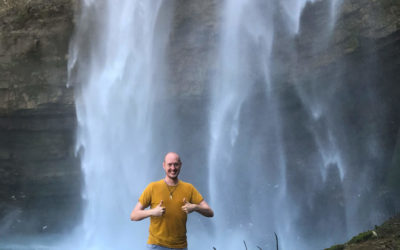
Jezzine Travel Guide
Why Visit Jezzine? The picturesque village of Jezzine is perched high on a cliff top overlooking the incredible Jezzine waterfall - at 90m (295ft), one of the highest waterfalls in Lebanon. It’s also practically surrounded by Bkassine forest, the largest pine forest...
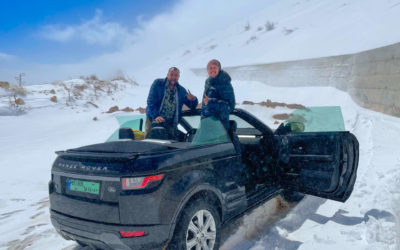
Hermel & Beyond: Road Tripping Remote Lebanon
Hermel & Beyond: Road Tripping Remote Lebanon As a Scot, I’m used to living in countries far bigger than my own. Lebanon is the exception - the entire country is only about 200km long and 80km wide at its widest point. So how, you might ask, can there be ‘remote...
Looking for even more great ideas? Here’s another in-depth travel guide to Lebanon by Romana and Jakub at Broken Naviation, including hotel recommendations for all budgets (living here I don’t stay in hotels much). They have some really beautiful photographs too. Check it out here:
- How to Travel to Lebanon in 2022 & 11 Days Itinerary
Don’t forget to leave a comment below if you enjoyed the article or have questions!
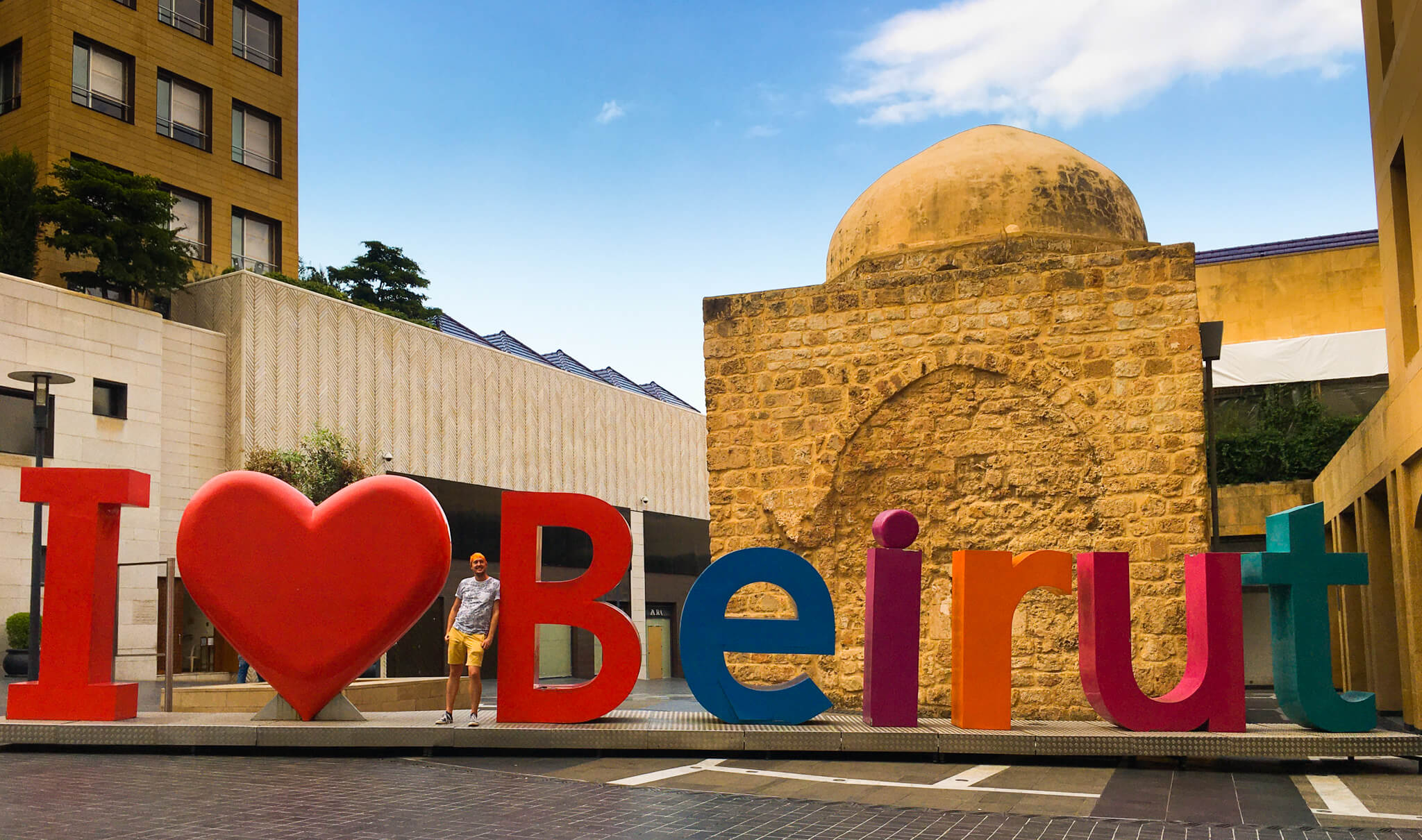
Beirut is one crazy beautiful city in one crazy beautiful country. I can’t not love it.
Recent Posts
- How to Visit Kassala and Hike the Taka Mountains
- What to do in Port Sudan and the Coral City of Suakin
- How to Visit the Meroe Pyramids, Naqa and Musawwarat es-Sufra
- How to Visit Karima and the Barkal Pyramids
- How to Visit Nubian Sudan: Abri and Kerma
Recent Comments
- rowan on Siwa Oasis Travel Guide
- Debjani Kundu on Siwa Oasis Travel Guide
- rowan on Iraq Independent Travel Guide
- August 2022
- August 2021
- September 2020
- August 2020
- December 2019
- November 2019
- October 2019
- September 2019
- August 2019
- Alor Island
- Andhra Pradesh
- Northern PNG
- Papua New Guinea
- Sulaymaniyah
- Entries feed
- Comments feed
- WordPress.org
30 Comments
Wow, this is a great post. Thank you so much. We’re travelling to Lebanon for a week in May (9th – 15th) and were a bit unsure of what to see/do because of the crisis. This has helped a lot. I’m coming with a friend. Hit me up if you’d like to hang out.
Hey mate, great to hear the guide was helpful. I’m actually outside the country travelling Sudan at the moment (another amazing place), so won’t be around on those dates. Enjoy Lebanon!
I absolutely love this guide. I am a 50plus woman who travels around the world and I am in Egypt now. I want to go and spend a month there in June/July and would love to contact people who want to meet and Argentina my age or around my age. I am not rich, my country goes through the same struggles than Lebanon with the second highest inflation in the world. I do have a website on the works and I can recommend your site, I believe the only waay we can make a change is to share
Hi Monica, that’s great. I’m sure you’ll enjoy Lebanon a lot. For meeting people, you might want to try Couch Surfing. The community in Lebanon is quite active.
Thank you so much for the useful information. I’m travelling to Lebanon for a week in 30th May – 6th June and was uncertain of what to expect. You information has helped me feel more confident. I’m coming by myself as my partner can’t make it because of work commitments. Feel free to contact me if you’d like have a chat over drinks. PS I’m keen to go to Sudan and see the Pyramids there. Hope you enjoyed it.
Hi Morris. Great to hear that the information was helpful. I would definitely be up for meeting for a drink, as long as I’m in Lebanon at that time. Could you drop me a message on the quitandgotravel Instagram page? I don’t want to put my WhatsApp number on this page as it’ll inevitably get flooded with spam.
Sudan was amazing! Working on a guide for that now, but will take some time.
This is amazing, thank you so much for publishing this! I’ve had a hard time getting a real read on the situation. We are planning a trip in July, probably just Beirut for 4 or 5 days. Do you have any hotel recommendations?
Hi Katie, glad to hear it was useful. July is a great time to visit, the weather will be beautiful. Beirut is a great place to base yourself, but I would suggest to do at least a day trip to Byblos and the Jeita Grottoes. Regarding hotels, as I live here, I don’t stay in them and so don’t have specific recommendations. However, wherever you stay, the main thing to check is whether they have a generator and how many hours of power they have per day. Generally, the higher-end hotels have 24/7 power, whereas the lower-end ones could be just a few hours a day.
Hi Rowan, this was SO helpful, thank you! Hoping to visit May 27-June 4 but was nervous about the US government “level 3” travel advisory. I saw your disclaimer about the elections last week – how is the sentiment now?
Hi Lily, glad this was helpful. The elections have gone relatively peacefully, so hoping things will be back to normal by then. Time will tell, so feel free to reach out to me nearer the time to confirm.
Think your guide is really helpful mate. I’m looking to visit with my girlfriend for at least a week in Oct before flying on to India, but we will not hire a car to keep the costs down, so hopefully we can visit places like Byblos and Kadisha Valley by bus/shared taxi etc as we’d love to do some hiking. Thanks again.
Awesome mate, glad the guide was helpful. Lebanon is very doable with public transport (and maybe a bit of hitchhiking to Kadisha). Enjoy India!
Is the situation pretty unstable atm mate? Been looking at uk gov website and it seems to say avoid all but essential travel to Lebanon. Not going until Oct, so I hope thing may improve then, but would you say wait to see if it calms down a bit before booking flights, or just take the gov advice with a pinch of salt? As your blog seems to indicate its not too bad 🙂 sorry for the bombardment of questions!
Hey mate, already replied to your email, but for anyone else reading, government travel warnings tend to exaggerate. It’s actually very peaceful here at the moment. Lebanese people are very friendly and crime rates are low. In Lebanon, the situation can change quickly, but I wouldn’t let that put you off visiting.
Hi Rowan, thanks for sharing those helpful Informations. Do you know if there is a possibility to get from Bcharré to Baalbek by public transportation in September
Hi Miriam. Glad the blog has been useful. Unfortunately, there is no public transport from Bcharré to Baalbek. By public transport, you’d need to go back to Beirut and then over the main highway to Baalbek, which is a huge detour. However, I’m sure you could hitchhike it without much difficultly. Lebanese people are very friendly and a female friend of mine who was volunteering in Anjar the past few weeks hitchhiked all over the country without problems.
Wowwwww I was just looking around, totally unsure about Lebanon and feeling no way I could Really do it but your post has totally changed my mind.
I hope to meet you for a coffee hello.
~A Solo woman traveller
Ps, Pls let me know your thoughts on overland travel from jordan through syria.
Hey, glad the blog helped inspire you! Overland travel from Jordan is possible with an organised tour, as that’s generally the only way to get the visa. It’s expensive but doable and I’ve spoken with people who’ve done it. A coffee sounds good, drop me a message on Insta @quitandgotravel when you know the dates.
This post re Lebanon is fantastic. I’m traveling alone; do you have any tour guide recommendations? Also, if you’re up for a cup of coffee and a chat, I’ll be there the first week of July.
Hi Stacy, great to hear the post is useful. I never use tour guides (except in North Korea, where it’s mandatory), so can’t recommend one. However, Lebanon is very doable solo. I’d definitely be up for a coffee and should be here that week. Can you drop me a message on Insta? @quitandgotravel
This blog was really helpful – I’m a solo female traveler and have been looking to go to Beirut to visit my friend’s dog and bring him doggie treats (and I guess say hi to my friend too and bring human treats) but with everything that has happened in the past two years it has been a bit difficult to get it organised. Due to my nationality it also appears the visa process will take longer than normal in my current country of residence. I would rather not have to get my (human) friend send some sort of invitation letter in order for me to get a visa, but I guess I’ll just have to see and try and Lebanese Embassy. I look forward to reading more of your blog.
Your poor friend, I can see that he or she is definitely second to the dog! Good luck with the visa though, I hope you get it sorted out okay, and thanks for your kind comments.
Thanks so much for this guide. I’m Lebanese background and even I found it very very useful. My Aussie partner and I are going to Lebanon in September and I’m wondering which neighbourhood to book our Airbnb. We want to be able to walk all of Beirut, prefer to flush toilet paper down the toilet haha and want to be walking distance to cafes, bars and be able to walk home safely afterwards (or is it safer to get a service/taxi?). Also did you have any issues with being overcharged for things? Memories of taxi drivers taking me around the block a couple of times in Syria and charging me double haha
Hi Lili. Great to hear that my blog is even useful to Lebanese! For AirBNBs, Gemayze is probably the best Neighborhood. It’s walking distance to most things and has power more often than Hamra, so is less dark. Beirut is still very safe and walkable, even now. I think it’s a cultural thing, but despite the ever increasing poverty levels, crime rates are still low here. Most people are pretty honest, so rip offs are not common. The worst are taxis, especially from the airport, so use Uber or Bolt and set the app to pay cash (don’t pay more than 200,000 LBP from the airport).
Rowan, as others have said this is a great blog. Many thanks for all this info. I am a keen cyclist but cannot find any of the major adventure tour companies who offer cycling holidays in Lebanon. Do you know of any cycling organisations in Lebanon who might be able to help me put together an itinerary.
Hi David. I’m happy you liked the blog. I focus on independent travel, so not sure about tour companies to be honest. I don’t think cycling is a big thing here though (drivers are not so considerate), but that said, it could be a good way to see the country.
I had planned a trip to Lebanon in May 2020 (tickets paid for and everything) but Covid happened. Since then, Lebanon had gone through some significant changes like the economic crisis, etc, and I was really unsure if this year was the right time to be visiting Lebanon; was thinking of doing so in December.
Your blog had really helped, it is positive yet realistic. I am leaning heavily on traveling to Lebanon this year.
I heard it is easy to do a day trip to Damascus from Beirut? Have you done this trip? If so, was it a good experience?
Hi Ivy. Great to hear that you’re planning to visit Lebanon. Keep your eye on the news, but if it stays like it is now, you’ll have a great time. Day trips to Damascus are easily arranged. I don’t like organised tours, so I haven’t done one. I’m still working on the visa now, but hope to visit Syria independently for a couple of weeks in the near future.
Thank you so much for all this great information. My husband & am planning to move to Jadra, Lebanon with in the next year and I am doing research now and came across your blog. Any information you can send me in a email would be much appreciated. I have never traveled outside the U.S. . We plan on visiting for 2 weeks before we actually move there.
Hey that’s awesome that you’re moving here to Lebanon. It’s a wonderful country. Jadra is an interesting choice of location though! Most of the relevant information is in the blog, but feel free to let me know if you have specific questions.
Submit a Comment Cancel reply
Your email address will not be published. Required fields are marked *
- Share full article
Advertisement
Supported by
Exploring Lebanon’s Green Side
Sustainable practices are gaining traction across this Middle Eastern country as international tourism is on the rise.

By Lindsey Tramuta
Lebanese are understandably proud of their land. In less than two hours in this strikingly small country, half the size of Vermont, you can go from the Mediterranean Sea to the cedar forests in the Shouf Biosphere Reserve or the snow-capped peaks of Mount Lebanon. Locals gush over their country’s cultural marvels, from its deep culinary traditions to the surprisingly varied topography. But if there is an abiding theme I encountered during a weeklong visit last year, it was the sense of urgency to protect them.
A lack of regulation in everything from construction to waste management and land preservation has put Lebanon’s cultural heritage at risk. Now, a generation of locals has stepped in to develop socially and environmentally minded initiatives to protect the land, traditions and skilled artisans of this Middle Eastern country with a war-torn past. Sustainable practices are gaining traction across Lebanon, taking root in the lush countryside and in the capital of Beirut, a seafront city of about 2.2 million.
The green movement is emerging as international tourism to Lebanon is on the rise. The country saw an eight percent increase in foreign tourists in the first seven months of 2019 over the same period in 2018, according to the country’s ministry of tourism. This comes at a time when leisure travelers are increasingly conscious of their impact on a destination’s local economy and environment, travel industry experts say. Now, these travelers can find a growing number of Lebanese businesses that make the same considerations.
Many of the country’s sustainable practices started in the countryside. One of the latest examples is Bkerzay , Lebanon’s largest solar-powered lodge driven by conservation. The architect Ramzi Salman was already hard at work at developing the property in the Chouf Mountains, at the height of the Lebanese waste crisis in 2015, when the country’s main landfill shut down and festering garbage piled high into mountains across Lebanon.
“I bought the land to turn it into something to benefit and empower the community,” Mr. Salman said of his 50-acre property that opened in early 2018. The lodge employs local guides for the hiking trails and artisans for the on-site restaurant — overseen by Hussein Hadid , one of Lebanon’s best-known chefs, the pottery workshop, the spa and the shop selling locally crafted goods.
Perched high up on the arched stone terrace of Bkerzay, Mr. Salman’s development has an unobstructed view of the Chouf region down below and is only about 16 miles from Beirut. He brought back vernacular architecture, from triple-arched windows to local stone, and decorated villas with a soulful mix of vintage furnishings, locally produced linens and pieces custom-made by nearby craftsmen.
The village , as Mr. Salman calls Bkerzay, makes up only 15 percent of the land. “The rest is forest and we want to keep it that way. We preserved all the native flora and added plants that grow naturally in the Mediterranean.”
Preservation also has been a driving force behind the work of Bethany Kehdy, a Lebanese-American cookbook author and culinary guide who created Taste Lebanon as her way of keeping the country’s food heritage alive. As the operator of the first culinary tourism project in Lebanon, she began leading culinary walks (between $100 and $200) in Beirut in 2010 and continued with treks across the country to introduce locals and foreigners to artisanal producers, from breadmakers to farmers of za’atar, a blend of dried herbs and spices.
“With a growing dependence on industrial food provisions — partly a side effect of the war — our food heritage was being neglected,” Ms. Kehdy explained as she led me and my husband, Cédric, to Ichkhanian, a traditional Armenian bakery in Beirut. “Local wasn’t trendy, foreign was.”
Similarly, preserving cultural traditions are at the heart of all of Kamal Mouzawak’s ventures. The social entrepreneur is the founder of Souk El Tayeb , the country’s first farmer’s market and a network of popular farmers’ kitchens serving regional dishes prepared by Lebanese and Syrian women from nearby villages.
More recently, he’s extended his reach to a series of tastefully designed guesthouses called Beit (which means home) that preserve the architectural and culinary traditions of their given region. We traveled 50 miles north of Beirut to spend a night at Beit Douma , a 19th-century stone house in the Batroun mountains that Mr. Mouzawak painstakingly restored. Surrounded by orchards and gardens, the interior features vintage furnishings, a stocked library and a modern kitchen where guests pitch in to make the evening’s meal.
“We hire local people who prepare regional dishes and impart their traditions,” said Mr. Mouzawak. Paired with the blissful quiet it affords, his Beit has become as much a destination for locals as for foreigners, who hail everywhere from France and the United States to New Zealand, bringing new life to the village of Douma.
A 20-minute drive from Beit Douma along winding dirt roads led us to Maher Harb, the country’s first biodynamic vintner. After working abroad as a financial management consultant, Mr. Harb returned to the Batroun mountains to cultivate land he inherited from his father who died during the country’s civil war from 1975 to 1990, and to pursue his love for wine. In 2016, he launched Sept Winery to highlight the singularity of Lebanese terroir, and now regularly hosts wine tastings and lunches in his winery, which faces the vines. His wine is rapidly gaining attention in the country’s best restaurants, as well as in London and Oslo.
“The only way to revive our ancestral land and demonstrate its beauty and diversity is to abide by the laws of natural agriculture and biodynamics,” Mr. Harb said. “That’s the way our ancestors used to work.”
That passion and respect for the land also led Jamil Haddad to develop Colonel , the Middle East’s first brewpub, in the coastal town of Batroun where he grew up.
“Anyone can do beer but I wanted to create a space that encompassed more — a bike station, a windsurf school, a beach bar, guided tours of Batroun, and an event area,” explained Mr. Haddad, who trained in London and now hosts the annual International Craft Beer Fest with music, street food and guest brewers from around the world.
But he also wanted it to be green. With the help of the nongovernmental organization, Recycle Lebanon , Colonel’s production facility was made entirely from recycled goods and materials, including repurposed shipping wood pallets, two million plastic bags transformed into roof panels and secondhand chairs. Walls of vertical gardens help reduce temperatures and he’s foregone straws and keeps packaging recyclable. “I won’t stop until we’re zero waste.”
Zero waste is certainly important, Mr. Salman told me, as he led us to our vaulted room overlooking the valley at Bkerzay, but the ultimate goal is more encompassing. Like the others embracing a greener Lebanon, he said he wants to show the world that the Lebanese are capable of contributing to a more sustainable planet.
“If we don’t conserve what we have here,” said Mr. Salman, “who will?”
52 PLACES AND MUCH, MUCH MORE Follow our 52 Places traveler, Sebastian Modak, on Instagram as he travels the world , and discover more Travel coverage by following us on Twitter and Facebook . And sign up for our Travel Dispatch newsletter : Each week you’ll receive tips on traveling smarter, stories on hot destinations and access to photos from all over the world.
Lebanon is making a comeback with a fresh wave of tourism this summer

Lebanon is anticipating hundreds of thousands of ex-pats and tourists to visit the country this summer. Their imminent arrival will bring a much-needed cash injection to a country previously tormented by an economic and financial crisis.
The Mediterranean nation, known for its vibrant nightlife, beaches, mountain resorts, and cuisine, is preparing for anywhere between 10,000 to 12,000 travellers a day, according to Lebanese Minister of Tourism Walid Nassar.
He adds that hotels and many guest houses are fully booked for the next three months.
The country has a large diaspora who are expected to visit family this summer - despite chronic electricity cuts and political and financial instability.
Many Lebanese people have left in the past couple years after the economic crisis started. The crisis was exacerbated by the coronavirus pandemic and a massive blast at Beirut’s port in August 2020 .
- Arabian Travel Market aims to attract European tourists to the Middle East
- Trek in the desert and float on the Dead Sea: Why you should visit Jordan in 2022
How are businesses preparing for the influx of travellers?
Business owners are hoping to boost their hard-hit fortunes.
"We believe that this year will be among the best years for the country. All of us in this sector are making big investments and we believe in the security and stability levels, and we believe that everyone will come to the country,” says Claude Taber, the owner of Rocca Marina Beach.
“Everyone is coming to Lebanon because there is nothing nicer than Lebanon's nature . Everyone knows this."
Rita Dekess, marketing and communications director at The Village, a community of restaurants and bars in Lebanon, says all 20 of their outlets are open.
“We also have about 3,000 frequent customers who come on Saturdays and Sundays. About 2,000 customers come during the week. And all of this is because the restaurants offer excellent quality service and entertainment at very reasonable prices,” she says.
Watch the video above to see how Lebanon is preparing for the surge of visitors this summer.
You might also like
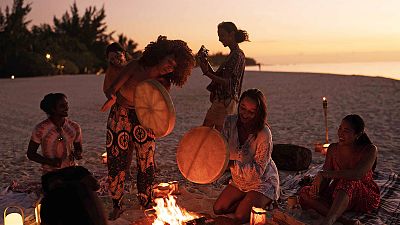
Mauritius, at the crossroads of culture
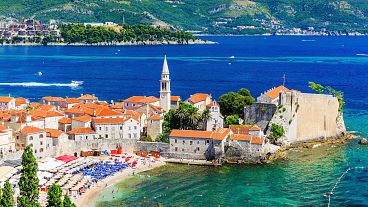
Where to work remotely on a budget in Europe this summer
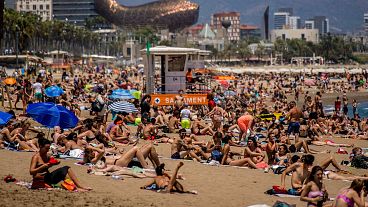
Drought leaves major questions about Barcelona's future in tourism

Lebanon Tourism Guide
All about lebanon.
- Restaurants
- Guesthouses
- Places to visit
- World heritage sites
- Nature Reserves
- Our Services
- Our Clients
- Tourist Attractions
- Furnished Apartments
- Wedding Venues
- Chill out Spaces
- Distilleries
- Travel agencies
- Tour operators
- Hiking clubs
- Upcoming Hiking Events
- Hiking events photos
- Paragliding
- Hiking Trails
- Kids activities
- Playgrounds
- Sport events
- Scuba diving
- Tourist Attraction
- Tour Packages
- Add Your Listing
- Your Properties
- Add Property
- Edit Profile
The Tourism-Lebanon.com guide helps you find out places to visit in Lebanon.
Filter by type:
Sunset hike & bonfire from Bchaaleh to Douma
New trail to wadi el aswad, cherry-picking & tour at tannourine, darb el oumara – darb el nahr at sirijbal village, caving & swimming in roueiss cave, kfar selouan sunset hike, river crossing hike to akkar hidden paradise.
Username or email address *
Remember me
Lost your password?
- Partner with AGBI
Lebanon among biggest debtors to global airlines

- Total drops to $129m, from $175m in 2021
- Visitor numbers down 13.5% in Q1
- Egypt makes progress on ‘blocked funds’
The money owed to international airlines in Lebanon has fallen by almost 9 percent year on year, but still totals $129 million, the International Air Transport Association reported on Sunday.
Lebanon takes the fifth spot in a 2024 list of countries where funds are overdue for repatriation, IATA said. It was the No 1 country for blocked funds in 2021, with $175.5 million held for 52 months.
Tourist trips to Lebanon have fallen since fighting began between Israel and Hezbollah on its border last October.
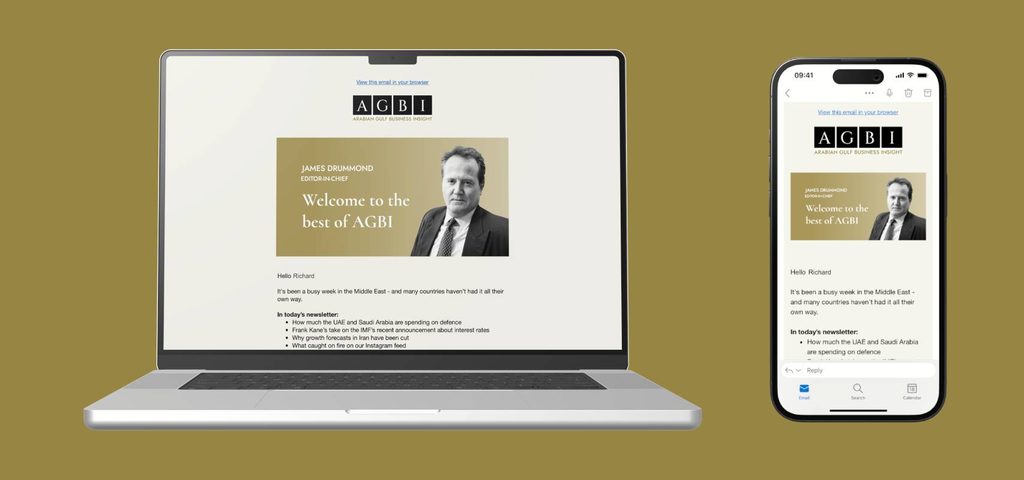
Newsletter Get the Best of AGBI delivered straight to your inbox every week
Visitor numbers for the first three months of 2024 were 13.5 percent down on the same period last year, according to the Ministry of Tourism in Beirut. Industry insiders say there has been “no significant traffic” from Western markets, excluding that from the Lebanese diaspora.
In a report last month, Goldman Sachs said that although tourism was likely to remain suppressed for the rest of the year, the currency and other economic indicators in Lebanon are showing some signs of stabilisation.
The rate of inflation is falling and the economy is projected to grow by 0.2 percent in 2024, the first positive recording in five years.
On IATA’s blocked funds list for 2024, Pakistan accounts for the largest share with $411 million. It is followed by Bangladesh ($320 million), Algeria ($286 million), and Ethiopia ($149 million).
- Airline margins ‘wafer thin’, says IATA’s Willie Walsh
- Tourism to contribute $64bn to UAE’s economy in 2024
- War and tensions mean Egypt dials down tourist forecast
Worldwide, blocked funds have fallen by $708 million (28 percent) in 2024, after rising for three consecutive years.
IATA praised Nigeria and Egypt for clearing much of their overdue funds, with payments having been delayed by a currency crisis in the first case and dollar liquidity shortages in the second.
Nigeria reduced its blocked funds from a high in June 2023 of $850 million to $19 million at last count. IATA said Egypt had “also approved the clearance of its significant accumulation of blocked funds”, but did not give any figures.
Emirates airline announced last month that it would restart services to Nigeria from October 1, after a suspension of nearly two years.
Adnan Kazim, deputy president and chief commercial officer at the Dubai airline, said: “We thank the Nigerian government for their partnership and support in re-establishing this route.”
Emirates suspended flights to Nigeria from September 1, 2022, because of Nigeria’s failure to repatriate millions of dollars in revenue.
Latest articles
Saudi Arabia campaign aims to attract chipmakers
Saudi Arabia has launched a National Semiconductor Hub in a bid to attract international chipmakers. The kingdom is targeting at least 50 semiconductor design companies to set up business by 2030, aiming to cut its reliance on imported computer chips. The global semiconductor industry, once plagued by shortages, is now showing signs of recovery and […]

Alef Education IPO 39 times oversubscribed
Orders totalling more than $20 billion were placed at the IPO of Abu Dhabi’s Alef Education this week, leaving it 39 times over-subscribed. The company raised AED1.9 billion ($515 million) in its initial public offering, the company said on Thursday. It will become the first education technology business to list on a UAE stock exchange. […]

Qatari wealth fund targets expansion in Japan
Qatar Investment Authority (QIA), the country’s sovereign wealth fund, is exploring new opportunities in Japan, according to a media report. “It’s a key market for us,” Abdulla Ali Al-Kuwari told Nikkei, a financial daily in Japan. The fund’s investments in Japan have “more than doubled” after it opened an office in Singapore in 2021, he […]

- Real Estate
Eagle Hills launches $1.5bn golf resort in Baghdad
UAE developer Eagle Hills has revealed plans to build a mega mixed-use development in Iraq’s capital city. Abu Dhabi-based Eagle Hills has acquired land to develop the $1.5 billion Baghdad Golf Course and Spa, including an international golf course, high-end residential buildings, a five-star hotel and a resort club. “Baghdad is a city with a […]
Download the AGBI app today


10 businesses recognized by Visit Lebanon Valley for contributions to tourism industry
M embers of the hospitality industry were honored for their exemplary customer service and representation of the Lebanon Valley earlier this month at the second annual Hospitality Star Awards Ceremony, hosted by Visit Lebanon Valley.
The award ceremony was held at the St. James Players Theatre in the Lebanon Valley Mall on Thursday, May 9.
Visitors in Lebanon County spent nearly $300 million in 2022, according to the Tourism Economic Impact Report from the Pa. Office of Tourism, which includes spending on lodging, retail, recreation food and beverage and other tourism-related activities.
Start the day smarter. Get all the news you need in your inbox each morning.
"This figure is up 12% from the 2021 report for Lebanon County and clearly shows that tourism is a significant economic driver that injects millions of dollars into our economy every year,” Jennifer Kuzo, president of Visit Lebanon Valley said in a new release.
The report found that tourism spending increased in the Dutch County Roads region, which includes Adams, Berks, Cumberland, Dauphin, Franklin, Lancaster, Lebanon, Perry and York counties, by 18.3% between 2021-2022.
The Hospitality Star Awards look to celebrate the significant economic impact and improved well being that results form travel and tourism in the Lebanon Valley.
Award recipients included Karen Barnhart of Kenbrook Bible Camp, Christy Barzona of Hollywood Casino at Penn National Race Course, Becky Briody of Chef on the Go, Ryan Fretz of Ryan Fretz Arts, Cory Hughes of Sinkhole Saloon & Grille, Jamie LaFleur of Lebanon Valley Craft Brewery, Antonio Lambakis of Buddy’s Breakfast & Lunch, Dwayne Spencer of Timeless Café, Michael Weber of Cornwall Iron Furnace and Chef Brian Peffley and his pastry arts students from the Lebanon County Career & Technology Center.
“The individuals highlighted at this ceremony have an exceptional commitment to customer service that not only encourages people to return to the Valley, but that helps our businesses and communities to flourish as well,” said Kuzo.
Daniel Larlham Jr. is a reporter for the Lebanon Daily News. Reach him at [email protected] or on X @djlarlham.
This article originally appeared on Lebanon Daily News: 10 businesses recognized by Visit Lebanon Valley for contributions to tourism industry


Lebanon County, PA news, events, and opinions.
Patches Family Creamery once again is featured on Pennsylvania ice cream trail

Lebanon County’s most essential weekly read
Get our free newsletter every Thursday
Will you support independent, non-partisan journalism?
Become a champion of local news and unlock additional benefits as a LebTown member, like exclusive members-only emails, access to comments, invitations to members-only events, and more.
Make an impact. Cancel anytime.
Already a member? Login here
Pennsylvania is promoting local tourism and its thriving dairy industry with Scooped: An Ice Cream Trail, which encourages residents and visitors alike to visit 41 creameries across the state.
And, once again, Lebanon County is part of the tour, which launched on May 30 and runs through Sept. 7.
Patches Family Creamery , at 201 Fonderwhite Road, Lebanon, will represent Lebanon County again this year, joining other local and statewide favorites including Perrydell Farm & Dairy in York, the Urban Churn in Carlisle, Harrisburg and Mechanicsburg, Fox Meadows Creamery in Ephrata and Leola, Destiny Dairy Bar at Stover Farms in Carlisle, and Lapp Valley Farms in New Holland and Gordonville.
“Come visit us at Patches Family Creamery,” the family says on a state-run website for Pennsylvania: The Great American Getaway . “We enjoy serving our community with farm-fresh products – fresh from our cows on our dairy farm – whether it is our milk or our hand-scooped premium ice cream that we make on our farm from scratch. We have a little playground for children and animals in a pasture across from the creamery that you can enjoy petting & feeding. We were honored to be voted Best Ice Cream in the Lebanon Valley in 2022. Taste the difference, it’s farm fresh!”
Launched in 2018, the Ice Cream Trail is a partnership composed of the Pennsylvania Department of Agriculture and its PA Preferred program, the tourism office of the Department of Community and Economic Development, and the Center for Dairy Excellence.
“No summer getaway is complete without a scoop of ice cream from a Pennsylvania creamery,” Agriculture Secretary Russell Redding said in a statement. “Knowing you’re supporting one of Pennsylvania’s more than 4,000 dairy farms just sweetens the adventure.”
DCED’s Executive Deputy Secretary Mike Hanna Jr. said Scooped “is a fun and delicious way to support Pennsylvania small businesses and our dairy industry.”
Participants in the dairy adventure can plan their trip, learn about the 41 participating creameries, and sign up for free at visitpa.com/scooped. They can also accumulate points to earn prizes, including a commemorative stainless-steel ice cream scooper by visiting five stops and a T-shirt with 10 stops.
Pennsylvania has the second largest number of dairy farms in the United States and is ranked eighth in national milk production, the release notes. The Pennsylvania dairy industry provides more than 47,000 jobs and pumps about $11.8 billion each year into the state economy.
- [Photo Story] A visit to Patches Family Creamery
- Lebanon County’s sweet, delicious, and cool ice cream history
“The dairy industry is an economic driver for Pennsylvania, and 99 percent of our state’s dairy farms are family owned,” said Emily Barge, communications and marketing manager for the Center for Dairy Excellence. “Each summer, the Ice Cream Trail is a fun way for families from Pennsylvania and beyond to actually meet the dairy farm families who work around the clock, 365 days a year, to produce delicious dairy products and farm-fresh ice cream.”
The promotion is part of Governor Josh Shapiro’s economic development strategy, which prioritizes the tourism and agriculture industries and adopts a new marketing tactics to showcase the commonwealth’s offerings.
Travelers on the Ice Cream Trail are encouraged to share their photos (with the hashtag #PAScoops) on social media.

Support local journalism.
Cancel anytime.
Free news isn’t cheap. If you value the journalism LebTown provides to the community, then help us make it sustainable by becoming a champion of local news. You can unlock additional coverage for the community by supporting our work with a one-time contribution , or joining as a monthly or annual member . You can cancel anytime.
More Top Stories

More than just some paddle-plastic ball game, pickleball can grant wishes

Traffic shift planned this week on Cornwall Road at Wilhelm Avenue

ELCO grad Ryan Daub finds field of dreams as intern on Phillies ground crew

Lebanon County Commissioners approve 1-lane bridge project at special session

One-fourth of Lebanon County voters cast ballots in Pennsylvania’s primary
Something went wrong. Please refresh the page and/or try again.
LebTown membership required to comment.
Leave a comment
You must join or login to post a comment.

Arthur Funk & Sons Inc.

Barley Snyder

Billtown Blues Association

Brick Property Services

Community Health Council of Lebanon County

Cornwall Manor

Gretna Music

Heartland Wealth Advisors

Jono Hardware

Lebanon Area Fair

Lebanon County Bar Association

Lebanon County Children & Youth Services

Lebanon Internal Medicine Associates

Mt. Gretna Summer Concerts

Scott and Sue Kleinfelter of Iron Valley Real Estate

Steckbeck Engineering & Surveying, Inc.

The Original Mount Gretna Cicada Music Festival
We've detected unusual activity from your computer network
To continue, please click the box below to let us know you're not a robot.
Why did this happen?
Please make sure your browser supports JavaScript and cookies and that you are not blocking them from loading. For more information you can review our Terms of Service and Cookie Policy .
For inquiries related to this message please contact our support team and provide the reference ID below.
trending now in World News

Dad sucker-punches comedian on stage over 'sexualized' joke about...

First fatal human case of bird flu subtype confirmed: WHO

Massive great white shark that had just eaten a dolphin found...
Crazed gunman fatally shoots neighbor in front of horrified wife....

Catholic priest claims Jesus died with an erection, gets a rise...

Amanda Knox sobs as she's re-convicted of slander after returning...

Emails revealing first direct connection between pedophile and...

Physically healthy Dutch woman Zoraya ter Beek, 29, dies by...
Families of oct. 7 hostages at nyc gathering tell israeli government: bring them home first — then destroy hamas.
- View Author Archive
- Get author RSS feed
Thanks for contacting us. We've received your submission.
More than 50 family members of Israeli hostages who gathered in New York on Tuesday had one message for the Israeli government: sign the cease-fire deal and free the remaining captives in Gaza — then destroy Hamas.
“The deal must be signed today right now,” said Alon Nimrodi, 53, whose son 19-year-old Tamir was abducted at the Eretz crossing base unarmed and without his glasses.
The families, who were attending a dinner sponsored by New York-based Israeli power couple Natalie Hister Ostad and Edward Ostad at Park East Synagogue on the Upper East Side, believe “time is running out” to bring their loved ones home alive.
The IDF has confirmed the deaths of 41 of the 124 remaining hostages in Gaza, with only 83 believed to still be alive.

The deal — which was made public by President Biden last week — would see Hamas return all hostages in exchange for an Israeli withdrawal from the Gaza Strip, followed by a permanent cease-fire.
Prime Minister Benjamin Netanyahu says that Hamas must be destroyed before Israel can agree to end the war.
Hard-right members of Netanyahu’s governing coalition are also threatening to withdraw their support if he signs on

However, Nimrodi doesn’t believe that the goal of returning the hostages is mutually exclusive with Israel’s other war aim of destroying Hamas — because he believes even if Israel agrees to a cease-fire, the terrorist group will inevitably violate it.
“We know who we’re dealing with, they’re liars,” Nimrodi said. ” I can’t say animals because it’s a shame for the animals.”
“Sign the deal, bring them home now, tomorrow we will blow [Hamas] away.”
Moshe Or, 31, whose brother Avinatan Or who was kidnapped along with his girlfriend Noa Argamani at the Nova music festival on October 7, says he is “cynical” that a deal can be reached.

“Hamas doesn’t have a reason to agree to a deal, they don’t care about the misery of their people they’d rather fight the Jews.
“They know that the international community will force Israel to stop the war in a matter of weeks, so they can just hold their breath and wait,” Or said.
“I used to be a very optimistic person, but these last few months have taught me a very bad lesson about life.”
Or said the last time he saw his brother was the Tuesday before the Oct. 7 “black Shabbat” when he was taken captive, where they got together to celebrate his daughter’s third birthday.
“Every day that passes is risky,” Or said. “I want my brother back home.”

Razi Sharabi, 52, said that a permanent cease-fire can be reached but first the terrorist group needs to release the women and wounded captives.
Sharabi’s niece, Daniela Gilboa, was seen in a grisly abduction video from Nahal Oz base that was released on May 22.
“Israel has nothing to look for in Gaza except the hostages. If they’re released we will go,” Sharabi said.
“I’m not talking about destroying Hamas.”
Sharabi believes his niece is somewhere in Gaza’s elaborate network of tunnels. He recalled watching the blood-chilling video of her capture.
“When the Hamas terrorist told her how beautiful she is and how he can’t wait to make her his slave, that is when I punched the screen,” he said.
Sharon Sharabi, 49, whose brothers Eli and Yossi were kidnapped October 7, worries that “time is running out” after the Israeli military announced Monday that Hamas killed four more hostages in Gaza.

Yossi was killed in Gaza, possibly by an IDF strike , but Eli is believed to be alive. Eli’s entire family was killed on October 7.
“My brother doesn’t know yet but there’s no one left to hug.”
Agreeing to a cease-fire without destroying Hamas is “a very big price,” Sharabi says, but he’s adamant that Israel take “all opportunities” to bring the hostages home.
“It’s the way of Torah.”
Gilad Korngold, 63, who had seven family members abducted on Oct. 7 including his 3-year-old granddaughter, said Biden should “take a baseball bat and hit everyone in the head and finish this” in reference to the negotiations between Israel and Hamas.
“[Netanyahu] can’t destroy Hamas for years,” Korngold told the Post.
“The price doesn’t matter, all hostages need to come home as quickly as possible and then we can deal with the consequences,” said Shaaban El Said, an Arab Israeli whose mentally ill son has been held captive by Hamas since 2015 after he wandered into Gaza during a psychotic episode.

Supporters of the long-suffering families echoed their calls for their loved ones to return home.
“What do you say to a parent whose child has been held in Gaza for 8 months?” asked Cantor Benny Rosnitzky of Park East Synagogue.
Hister Ostad said it was her “duty” to host these families.
“It was very important to me that these families will see how big is the support of the Jewish community in New York.”
“We look forward to celebrating with them when all the hostages are home in their arms.”
The event came to an emotional conclusion as the hostage families gathered around a piano for an impromptu group rendition of Queen’s Bohemian Rhapsody in which Freddie Mercury’s lyrics appeared to take on a somber new meaning.
“Mama, didn’t mean to make you cry,” they belted out, “If I’m not back again this time tomorrow carry on, carry on.”
Share this article:

Advertisement
- Election 2024
- Entertainment
- Newsletters
- Photography
- Personal Finance
- AP Investigations
- AP Buyline Personal Finance
- AP Buyline Shopping
- Press Releases
- Israel-Hamas War
- Russia-Ukraine War
- Global elections
- Asia Pacific
- Latin America
- Middle East
- Election Results
- Delegate Tracker
- AP & Elections
- Auto Racing
- 2024 Paris Olympic Games
- Movie reviews
- Book reviews
- Personal finance
- Financial Markets
- Business Highlights
- Financial wellness
- Artificial Intelligence
- Social Media
What’s open and closed on Memorial Day
A shopper moves past a display of items in a Costco warehouse Saturday, May 18, 2024, in Sheridan, Colo. As many Americans celebrate Memorial Day on Monday, May 27, 2024, there are several stores, government offices and businesses that will be open or closed.(AP Photo/David Zalubowski)
FILE - Chase Bank ATMs are shown, Thursday, March 25, 2021, in New York. As many Americans celebrate Memorial Day on Monday, May 27, 2024, there are several stores, government offices and businesses that will be open or closed. (AP Photo/Mark Lennihan, File)
FILE - A Macy’s department store is in Bay Shore, Long Island, New York, on Tuesday, Dec.12, 2023. As many Americans celebrate Memorial Day on Monday, May 27, 2024, there are several stores, government offices and businesses that will be open or closed.(AP Photo/Ted Shaffrey, File)
FILE - Letters and packages are loaded on a U.S. Postal Service truck parked outside a post office in Wheeling, Ill., Monday, Jan. 29, 2024. As many Americans celebrate Memorial Day on Monday, May 27, 2024, there are several stores, government offices and businesses that will be open or closed. (AP Photo/Nam Y. Huh, File)
FILE - The sun shines through the flags in the Memorial Day Flag Garden on Boston Common, May 27, 2023, in Boston. Businesses increasingly have chosen to stay open on the holiday, leading to what is now one of the biggest retail sales and travel weekends of the year. (AP Photo/Michael Dwyer, File)
- Copy Link copied
In what had long been celebrated every May 30 to honor America’s fallen soldiers, Memorial Day officially became a federal holiday in 1971, observed on the last Monday in May.
Businesses increasingly have chosen to stay open on the holiday, leading to what is now one of the biggest retail sales and travel weekends of the year.
Here’s what is open and closed this year on Memorial Day:
GOVERNMENT BUILDINGS
Government offices, post offices, courts and schools are closed.
Memorial Day Weekend
- The history: 5 things to know about the holiday , including its evolution and controversies
- Travel: Crowds and high prices met travelers on the busiest day of the holiday weekend
- On the menu: Try this recipe for smoky chicken wings or for something lighter, update these classic side dishes
- What’s open? Check this list of stores and more before you head out
- Now playing: Here are the movies coming to the box office this weekend and beyond
BANKS AND STOCK MARKET
U.S. stock markets and banks are closed Monday.
Most FedEx and UPS pickup and delivery services will also not be available on Memorial Day.
Warehouse membership club Costco said it would close on Memorial Day , but the vast majority of retailers will be open, with many trying to lure customers with big promotional sales. Hours may vary by location.
Memorial Day is also considered the unofficial opening of the summer travel season. Auto club AAA projects 43.8 million travelers will head 50 miles or more from home over the holiday travel period, an increase of 4% from last year. If those projections are accurate, that would come close to 2005’s record of 44 million Memorial Day weekend travelers.
AAA projects 38.4 million people will travel by car over the weekend — the highest number for that holiday since AAA began tracking it in 2000 — and that another 3.5 million people will travel by air.

IMAGES
COMMENTS
Lebanon, a country steeped in history, culture and natural beauty, offers a mesmerizing array of attractions that will leave any traveler in awe. From ancient ruins to breathtaking landscapes, Lebanon is a treasure trove waiting to be explored. Join us as we unveil the 12 must-visit places in Lebanon. 1.Harissa and Jounieh Teleferique.
All the information needed to help you with the organization of your Meetings, Incentives, Congress and Events in Lebanon. Visit Lebanon - Leisure Website All the touristic information for the Leisure professionals including itineraries ideas, practical information, etc. in Lebanon.
Lebanon. Middle East. This diminutive Mediterranean nation is a fascinating nexus point of the Middle East and the West; of Christianity and Islam; of tradition and modernity. It's a place where culture, family and religion are all-important, but where sectarian violence can too often erupt - claiming lives and scarring both the landscape ...
4. Zaitunay Bay. 2,146. Marinas. The Zaitunay Bay certainly exceeds all expectations and transcends the national borders to further polish Lebanon's image and allow it to assume its rightful position as a touristic destination, but…. See ways to experience (12) 2023. 5. Memory of Time.
Welcome to the official website of the Ministry of Tourism in Lebanon, bringing you closer to our captivating land of ancient history, vibrant culture, and breathtaking landscapes. Discover the wonders of Lebanon, plan your journey and immerse yourself in the beauty and charm of this Mediterranean gem.
The tourism industry in Lebanon has been important to the local economy historically and comprises a major source of revenue for the country. From Stone Age settlements to Phoenician city-states, Roman temples to rock-cut hermitages, Crusader castles to Mamluk mosques and Ottoman hammams, the country's many historical landmarks and ...
Lebanon Tourism: Tripadvisor has 133,353 reviews of Lebanon Hotels, Attractions, and Restaurants making it your best Lebanon resource.
4. Zaitunay Bay. 2,146. Marinas. The Zaitunay Bay certainly exceeds all expectations and transcends the national borders to further polish Lebanon's image and allow it to assume its rightful position as a touristic destination, but…. See ways to experience (12) 2023. 5. Memory of Time.
3. Discover the best attractions in Lebanon including Temple of Bacchus, Baalbek Ruins, and National Museum of Beirut.
Northern Lebanon. Tripoli, only two hours from Beirut, is the country's second-most populous city. It's bursting with fantastic and varied historic and cultural sites, and Tripolitans may be the most welcoming in all of Lebanon. Inconceivably, few visitors make the trip because there is little official tourist infrastructure.
In 2019, Lebanon received approximately 1.9 million international tourists, an increase of 6.3% compared to the previous year. The tourism industry accounted for around 7.5% of Lebanon's GDP in 2019. The average length of stay for international tourists in Lebanon is around 6.4 nights.
Lebanon (Arabic: لبنان, French: Liban) is a country in the Middle East, on the Mediterranean Sea.Rich in diversity and history, Lebanon has hosted the Roman Empire, the Crusades, the Ottoman Empire, and was, for a period of time, controlled by France.The majority of Lebanese are Arabs, as are most of the Palestinians and Syrians living there, but there are also small communities of ...
The Qadisha Valley is one of the best places to visit in Lebanon if you're looking to enjoy nature. Here you can hike, climb mountains, or even ski. The Qadisha Valley is one of Lebanon's UNESCO World Heritage Sites, designated for its history as one of the most important early Christian monastic settlements.
6. Byblos. One of Lebanon's gems and top sites, Byblos (or Jbeil) is an ancient coastal city. With a history that dates back 7,000 years, Byblos is one of the oldest continuously inhabited cities in the world. Its old city, hemmed in by a stone wall built during the Crusades, is a UNESCO world heritage site.
I have lived in Lebanon for the past three years (narrowly surviving the 2020 port explosion) and have visited almost every inch of this beautiful and crazy country. Lebanon was a beautiful country with vibrant cities and beautiful ancient historic sites before the multiple crises that began in 2019. And actually, it still is.
Whether you're looking to relax, exercise, or simply people-watch, the Corniche is a must-visit. 9. Lebanese Shawarma Delights. Among the unique things to do in Beirut, diving into the culinary scene stands out, and nothing screams "authentic Lebanese" quite like a well-made shawarma.
Nearly 30 years after Lebanon's Civil War, the capital city Beirut's nightlife and quirky museums attract more tourists than ever before
The green movement is emerging as international tourism to Lebanon is on the rise. The country saw an eight percent increase in foreign tourists in the first seven months of 2019 over the same ...
Welcome to Beirut, Lebanon, a city that effortlessly blends history, culture, and natural beauty. In this captivating YouTube video, we invite you to join us...
This wonderful tourist attractions in Lebanon also arranges the yearly summer Beit ed-Din Festival which is attended by thousands of admirers. 7. Kadisha Valley Kadisha Valley. Sometimes named the Holy Valley for its ultimate religious importance, Kadisha Valley is a gorge engraved by the Kadisha River. It has protected Christian monastic ...
Lebanon is anticipating hundreds of thousands of ex-pats and tourists to visit the country this summer. Their imminent arrival will bring a much-needed cash injection to a country previously ...
About Lebanon Tourism Guide. Lebanon tourism guide is the fruit of love, passion, challenge and determination; this is why we have updated our website and kept our spirits up despite the endless troubles that we are facing as a nation, people and society. L ebanon deserves to be promoted, every village has a story, landmark, a tourist ...
Walid Nassar, the tourism minister, expects 2m visitors this summer, an influx equal to 40% of Lebanon's population. Most will be Lebanese expats for whom a summer trip home is a cherished ...
Lebanon takes the fifth spot in a 2024 list of countries where funds are overdue for repatriation, IATA said. It was the No 1 country for blocked funds in 2021, with $175.5 million held for 52 months. Tourist trips to Lebanon have fallen since fighting began between Israel and Hezbollah on its border last October.
The report found that tourism spending increased in the Dutch County Roads region, which includes Adams, Berks, Cumberland, Dauphin, Franklin, Lancaster, Lebanon, Perry and York counties, by 18.3% ...
Pennsylvania is promoting local tourism and its thriving dairy industry with Scooped: An Ice Cream Trail, which encourages residents and visitors alike to visit 41 creameries across the state. And, once again, Lebanon County is part of the tour, which launched on May 30 and runs through Sept. 7.
cybellefeghaly on June 2, 2024: "diary of a summer day in Lebanon . . . #summer #lebanon #sun #beach #book #tanning #tan #read #beachread #summer2024 #getaway # ...
June 6, 2024 at 2:44 AM PDT. Listen. 2:14. Lebanon's national carrier is no stranger to operating in a conflict zone. Back in 2006, an Israeli air strike destroyed the runways of Beirut-Rafic ...
Families of Oct. 7 hostages at NYC gathering tell Israeli government: bring them home first — then destroy Hamas. More than 50 family members of Israeli hostages who gathered in New York on ...
2 of 5 |. FILE - Chase Bank ATMs are shown, Thursday, March 25, 2021, in New York. As many Americans celebrate Memorial Day on Monday, May 27, 2024, there are several stores, government offices and businesses that will be open or closed. (AP Photo/Mark Lennihan, File) Read More. 3 of 5 |. FILE - A Macy's department store is in Bay Shore, Long ...